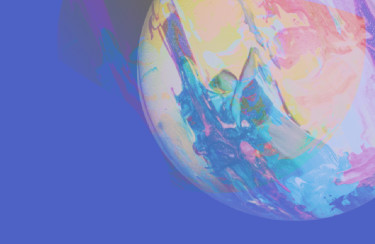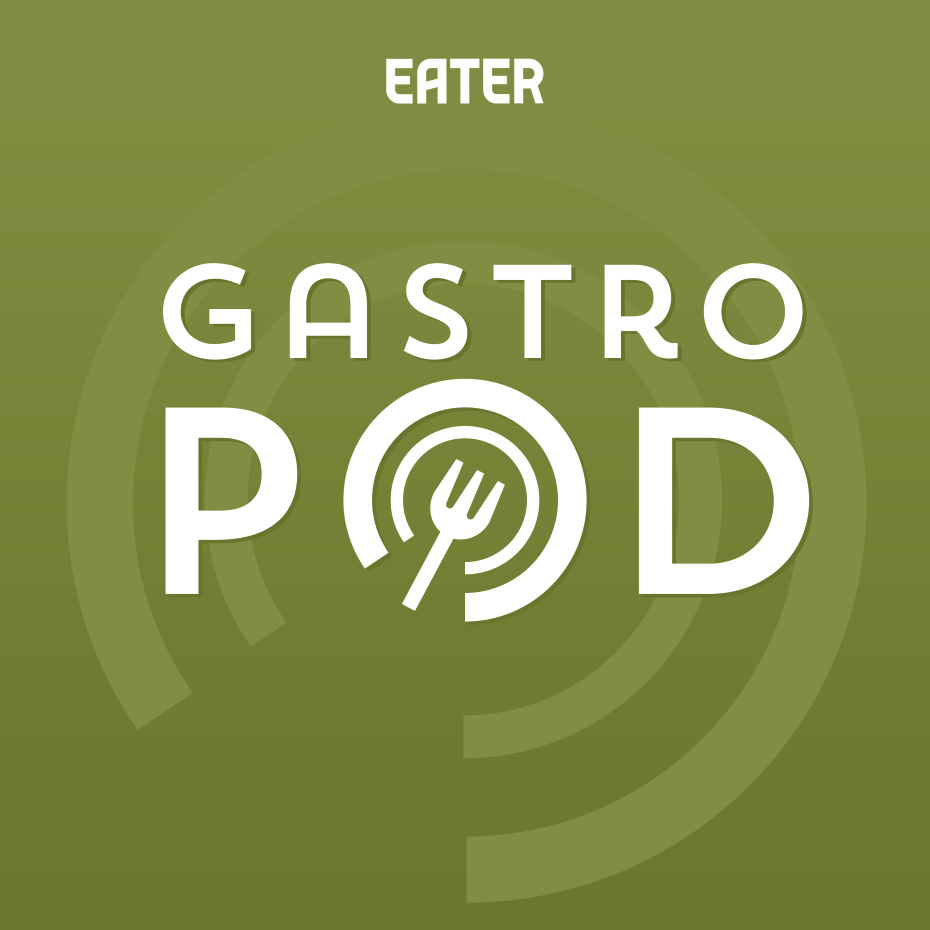
Browse
Gastropod
Gastropod
Food with a side of science and history. Every other week, co-hosts Cynthia Graber and Nicola Twilley serve up a brand new episode exploring the hidden history and surprising science behind a different food- or farming-related topic, from a
More
Episodes

The Interstitium (Radiolab)
Guest episode: In this episode we introduce you to a part of our bodies that was invisible to Western scientists until about five years ago; it’s called "the interstitium," a vast network of fluid channels inside the tissues around our organs that scientists have just begun to see, name, and understand. Along the way we look at how new technologies rub up against long-standing beliefs, and how millions of scientists and doctors failed to see what was right in front (and inside!) of their noses. We also find out how mapping the anatomy of this hidden infrastructure may help solve one of the fundamental mysteries of cancer, and perhaps provide a bridge between ancient and modern medicine. Learn more about your ad choices. Visit podcastchoices.com/adchoices
The Interstitium (Radiolab)
Guest episode: In this episode we introduce you to a part of our bodies that was invisible to Western scientists until about five years ago; it’s called "the interstitium," a vast network of fluid channels inside the tissues around our organs that scientists have just begun to see, name, and understand. Along the way we look at how new technologies rub up against long-standing beliefs, and how millions of scientists and doctors failed to see what was right in front (and inside!) of their noses. We also find out how mapping the anatomy of this hidden infrastructure may help solve one of the fundamental mysteries of cancer, and perhaps provide a bridge between ancient and modern medicine. Learn more about your ad choices. Visit podcastchoices.com/adchoices
59:55
23 Jul 24

Are Hush Puppies Racist? Is A2 Milk Really Healthier? And What's Up With Wedding Cake? Ask Gastropod!
You asked, and we’re answering—again! Ask Gastropod returns to answer some of our listeners’ most pressing culinary queries: how did elaborate, expensive cakes become the standard dessert for weddings? Did the deep fried cornmeal blobs known as “hush puppies” get their name from Confederate soldiers or racist stories from the plantation-era South? And could a trendy "new" variety of milk (that's actually ancient) allow the dairy-intolerant to snarf down cheese and ice cream without digestive consequences? This episode, we’re diving deep on the science, dispelling some myths, and correcting the historical record with the help of a team of experts. Listen in now! Learn more about your ad choices. Visit podcastchoices.com/adchoices
Are Hush Puppies Racist? Is A2 Milk Really Healthier? And What's Up With Wedding Cake? Ask Gastropod!
You asked, and we’re answering—again! Ask Gastropod returns to answer some of our listeners’ most pressing culinary queries: how did elaborate, expensive cakes become the standard dessert for weddings? Did the deep fried cornmeal blobs known as “hush puppies” get their name from Confederate soldiers or racist stories from the plantation-era South? And could a trendy "new" variety of milk (that's actually ancient) allow the dairy-intolerant to snarf down cheese and ice cream without digestive consequences? This episode, we’re diving deep on the science, dispelling some myths, and correcting the historical record with the help of a team of experts. Listen in now! Learn more about your ad choices. Visit podcastchoices.com/adchoices
47:37
9 Jul 24

Why Does Everyone Have Food Allergies These Days?
It's not your imagination, food allergies are really on the rise. One recent study found that severe allergic reactions to food have increased by more than 300 percent over the past decade. And they don't just affect Americans or kids—they're on the rise in adults around the world. Even pets are getting food allergies. So what's going on? Why would your body decide that food—something that's actually essential to keeping you alive—needs to be attacked like a dangerous invader? And why would we evolve a defense mechanism that can end up killing us? This episode, we've got the history and the latest scientist on food allergies: what they are, what causes them, how they're different from food intolerance and sensitivity, and what we can do about them. Join us on a wild journey from ancient Pharoahs to the future of medicine, via jellyfish, Calvin Coolidge, and "rose fever," as we figure this all out. Learn more about your ad choices. Visit podcastchoices.com/adchoices
Why Does Everyone Have Food Allergies These Days?
It's not your imagination, food allergies are really on the rise. One recent study found that severe allergic reactions to food have increased by more than 300 percent over the past decade. And they don't just affect Americans or kids—they're on the rise in adults around the world. Even pets are getting food allergies. So what's going on? Why would your body decide that food—something that's actually essential to keeping you alive—needs to be attacked like a dangerous invader? And why would we evolve a defense mechanism that can end up killing us? This episode, we've got the history and the latest scientist on food allergies: what they are, what causes them, how they're different from food intolerance and sensitivity, and what we can do about them. Join us on a wild journey from ancient Pharoahs to the future of medicine, via jellyfish, Calvin Coolidge, and "rose fever," as we figure this all out. Learn more about your ad choices. Visit podcastchoices.com/adchoices
51:01
25 Jun 24

The Bagelization of America (encore)
Today, it’s a breakfast staple, but, as recently as 1960, The New York Times had to define it for readers—as “an unsweetened doughnut with rigor mortis.” That’s right, this episode is all about the bagel, that shiny, ring-shaped, surprisingly dense bread that makes the perfect platform for cream cheese and lox. Where did it come from? Can you get a decent bagel outside New York City? And what does it have in common with the folding ping-pong table? Come get your hot, fresh bagel science and history here! (encore edition) Learn more about your ad choices. Visit podcastchoices.com/adchoices
The Bagelization of America (encore)
Today, it’s a breakfast staple, but, as recently as 1960, The New York Times had to define it for readers—as “an unsweetened doughnut with rigor mortis.” That’s right, this episode is all about the bagel, that shiny, ring-shaped, surprisingly dense bread that makes the perfect platform for cream cheese and lox. Where did it come from? Can you get a decent bagel outside New York City? And what does it have in common with the folding ping-pong table? Come get your hot, fresh bagel science and history here! (encore edition) Learn more about your ad choices. Visit podcastchoices.com/adchoices
51:19
18 Jun 24

The Birth of Cool: How Refrigeration Changed Everything
For as long as we’ve been making Gastropod, co-host Nicky has also been working on another project: writing a book all about refrigeration. Well, time to pop the champagne you’ve had stashed in the icebox, because that book comes out June 25—and we’re giving Gastropod listeners an exclusive preview! This episode, Cynthia and Nicky talk about how a high school dropout's get-rich-quick scheme, some deadly explosions, and lots and lots of beer brought us the humming boxes of cold now ubiquitous in the modern kitchen—and how the proliferation of this portable, on-demand winter has transformed our food (not always for the better) while heating up our planet. It's almost impossible to imagine living without a fridge, but Nicky’s book totally changed the way we look at preserving food. Is there a better way? Listen to find out, and for the rest of the story, be sure to pre-order Frostbite: How Refrigeration Changed Our Food, Our Planet, and Ourselves! Learn more about your ad choices. Visit podcastchoices.com/adchoices
The Birth of Cool: How Refrigeration Changed Everything
For as long as we’ve been making Gastropod, co-host Nicky has also been working on another project: writing a book all about refrigeration. Well, time to pop the champagne you’ve had stashed in the icebox, because that book comes out June 25—and we’re giving Gastropod listeners an exclusive preview! This episode, Cynthia and Nicky talk about how a high school dropout's get-rich-quick scheme, some deadly explosions, and lots and lots of beer brought us the humming boxes of cold now ubiquitous in the modern kitchen—and how the proliferation of this portable, on-demand winter has transformed our food (not always for the better) while heating up our planet. It's almost impossible to imagine living without a fridge, but Nicky’s book totally changed the way we look at preserving food. Is there a better way? Listen to find out, and for the rest of the story, be sure to pre-order Frostbite: How Refrigeration Changed Our Food, Our Planet, and Ourselves! Learn more about your ad choices. Visit podcastchoices.com/adchoices
48:30
11 Jun 24

Omega 1-2-3 (encore)
Based on all the hype, you'd be forgiven for believing that the fish oils known as omega-3s are the solution to every problem. Heart disease, dementia, depression, even obesity—the list of ailments that experts claim a daily dose of omega-3 can help prevent seems endless. And with more than ten percent of Americans taking a capsule of fish oil daily, omega-3s are one of the most profitable supplements in the world, too. Listen in this episode, as author Paul Greenberg and scientist JoAnn Manson help us figure out what these supposedly miracle molecules are, and what consuming them is doing to our bodies—and to our oceans. (Encore presentation) Learn more about your ad choices. Visit podcastchoices.com/adchoices
Omega 1-2-3 (encore)
Based on all the hype, you'd be forgiven for believing that the fish oils known as omega-3s are the solution to every problem. Heart disease, dementia, depression, even obesity—the list of ailments that experts claim a daily dose of omega-3 can help prevent seems endless. And with more than ten percent of Americans taking a capsule of fish oil daily, omega-3s are one of the most profitable supplements in the world, too. Listen in this episode, as author Paul Greenberg and scientist JoAnn Manson help us figure out what these supposedly miracle molecules are, and what consuming them is doing to our bodies—and to our oceans. (Encore presentation) Learn more about your ad choices. Visit podcastchoices.com/adchoices
44:45
4 Jun 24
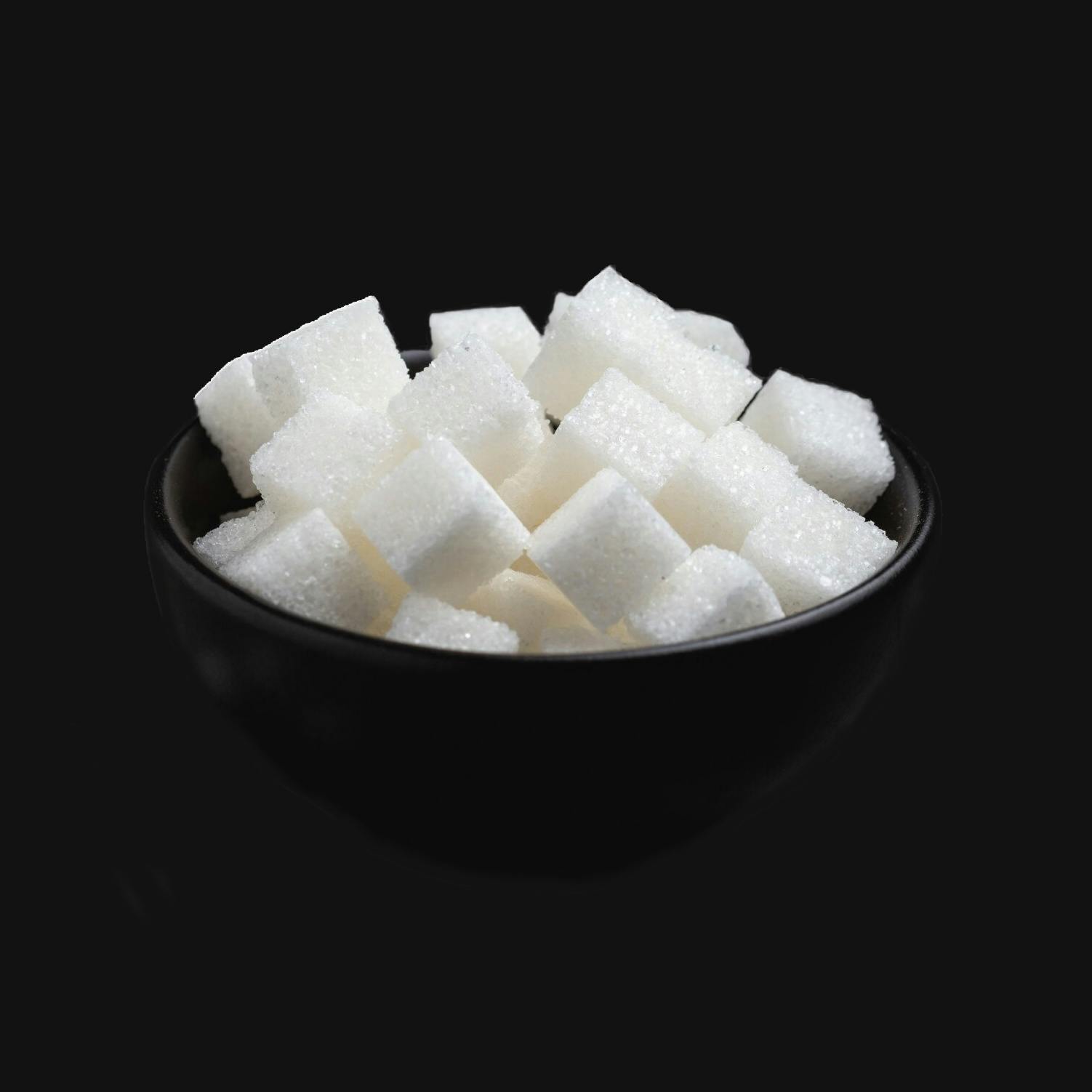
Sugar's Dark Shadow
Your pantry's sweetest ingredient has an extremely bitter history. The sap-producing grass known as sugarcane has been grown and enjoyed by humans for at least 10,000 years, but it was only relatively recently that it went from a luxury to an everyday ingredient—a change that also triggered genocide, slavery, and the invention of modern racism. In this episode, how the Crusades got Europeans addicted to the sweet stuff, and how that appetite deforested southern Europe and kicked off the trade in enslaved Africans, before decimating indigenous populations in the New World and codifying racism into law. It's a dark story that involves Christopher Columbus' mistress, the early human rights advocate whose campaign to save indigenous people encouraged the horrors of the transatlantic slave trade, and a trip to southern Louisiana, where we met Black sugarcane farmers to explore sugar's troubling legacy there. No sugar coating here: join us for the fascinating and horrifying history of this household staple. Learn more about your ad choices. Visit podcastchoices.com/adchoices
Sugar's Dark Shadow
Your pantry's sweetest ingredient has an extremely bitter history. The sap-producing grass known as sugarcane has been grown and enjoyed by humans for at least 10,000 years, but it was only relatively recently that it went from a luxury to an everyday ingredient—a change that also triggered genocide, slavery, and the invention of modern racism. In this episode, how the Crusades got Europeans addicted to the sweet stuff, and how that appetite deforested southern Europe and kicked off the trade in enslaved Africans, before decimating indigenous populations in the New World and codifying racism into law. It's a dark story that involves Christopher Columbus' mistress, the early human rights advocate whose campaign to save indigenous people encouraged the horrors of the transatlantic slave trade, and a trip to southern Louisiana, where we met Black sugarcane farmers to explore sugar's troubling legacy there. No sugar coating here: join us for the fascinating and horrifying history of this household staple. Learn more about your ad choices. Visit podcastchoices.com/adchoices
51:35
28 May 24

(Guest) Are Fast Food Jingles Pop Music?
From our friends at Switched on Pop: Where were you when you learned that the McDonald's jingle "I'm lovin' it" was originally part of a full-fledged pop song by Justin Timberlake and Pharrell that flopped on the charts but found staying power as a slogan? For us, it was recording our live episode about sponsored content in pop back in March 2024, and we have not been the same since. Shaken by this revelation, we found ourselves asking, "What else don't we know about fast food jingles?" Turns out, it's a lot. From Taco Bell to Popeye's to Chili's, the music of fast food represent some of the most familiar melodies in society, across state lines and generations. But the stories behind those songs, and the way that fast food production and pop music production often move in parallel, was something we never saw coming. Since we are music experts but amateur foodies, we invited the brilliant hosts of Gastropod, Cynthia Graber and Nicola Twilley, to help serve up the history of fast food and its changing role in culture. Tune in and pig out with us as we listen and debate the artistic and ethical implications of the sounds of fast food. Learn more about your ad choices. Visit podcastchoices.com/adchoices
(Guest) Are Fast Food Jingles Pop Music?
From our friends at Switched on Pop: Where were you when you learned that the McDonald's jingle "I'm lovin' it" was originally part of a full-fledged pop song by Justin Timberlake and Pharrell that flopped on the charts but found staying power as a slogan? For us, it was recording our live episode about sponsored content in pop back in March 2024, and we have not been the same since. Shaken by this revelation, we found ourselves asking, "What else don't we know about fast food jingles?" Turns out, it's a lot. From Taco Bell to Popeye's to Chili's, the music of fast food represent some of the most familiar melodies in society, across state lines and generations. But the stories behind those songs, and the way that fast food production and pop music production often move in parallel, was something we never saw coming. Since we are music experts but amateur foodies, we invited the brilliant hosts of Gastropod, Cynthia Graber and Nicola Twilley, to help serve up the history of fast food and its changing role in culture. Tune in and pig out with us as we listen and debate the artistic and ethical implications of the sounds of fast food. Learn more about your ad choices. Visit podcastchoices.com/adchoices
41:03
21 May 24
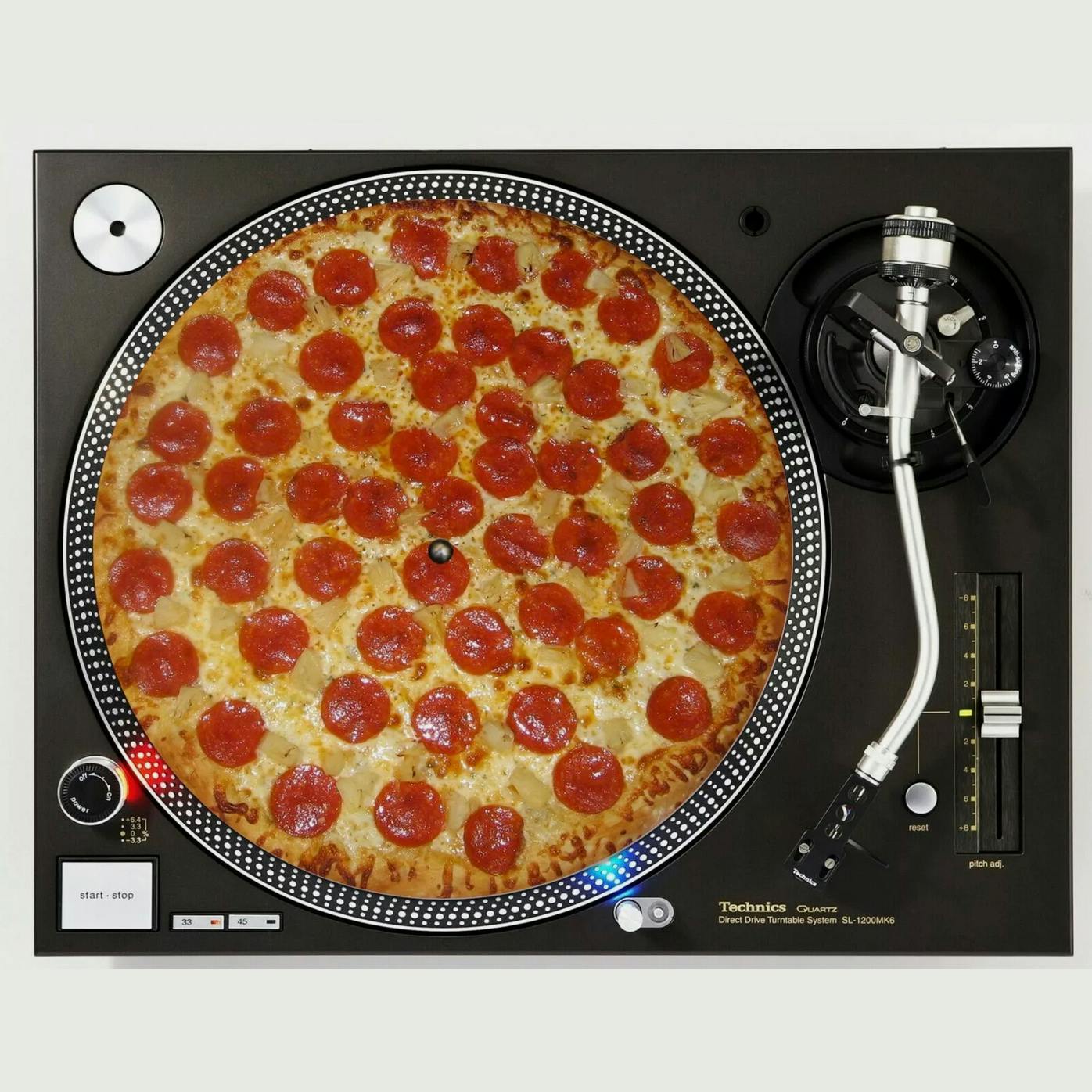
Why Are Restaurants So Loud? Plus the Science Behind the Perfect Playlist
When you go out for a meal, it’s not just what's on your plate that matters, it's what's in your eardrums, too. From dining rooms so loud you have to shout to be heard, to playlists that sound like a generic Millennial Spotify account, it's not surprising that sound is the single most complained about aspect of restaurants. This episode, Gastropod explores the science behind the sonic experience of eating. Are restaurants really getting louder, and, if so, why? What does it take to create the perfect acoustic environment for dining? Can restaurateurs design their playlists to make customers order more or eat faster? Listen in now for the secrets to culinary acoustic bliss! Learn more about your ad choices. Visit podcastchoices.com/adchoices
Why Are Restaurants So Loud? Plus the Science Behind the Perfect Playlist
When you go out for a meal, it’s not just what's on your plate that matters, it's what's in your eardrums, too. From dining rooms so loud you have to shout to be heard, to playlists that sound like a generic Millennial Spotify account, it's not surprising that sound is the single most complained about aspect of restaurants. This episode, Gastropod explores the science behind the sonic experience of eating. Are restaurants really getting louder, and, if so, why? What does it take to create the perfect acoustic environment for dining? Can restaurateurs design their playlists to make customers order more or eat faster? Listen in now for the secrets to culinary acoustic bliss! Learn more about your ad choices. Visit podcastchoices.com/adchoices
43:48
14 May 24

The Food Explorer (encore)
You've probably never heard of David Fairchild. But if you've savored kale, mango, peaches, dates, grapes, a Meyer lemon, or a glass of craft beer lately, you've tasted the fruits of his globe-trotting travels in search of the world's best crops—and his struggles to get them back home to the United States. This episode, we talk to Daniel Stone, author of The Food Explorer, a new book all about Fairchild's adventures. Listen in now for tales of pirates and biopiracy, eccentric patrons and painful betrayals, as well as the successes and failures that shaped not only the way we eat, but America's place in the world. ENCORE Learn more about your ad choices. Visit podcastchoices.com/adchoices
The Food Explorer (encore)
You've probably never heard of David Fairchild. But if you've savored kale, mango, peaches, dates, grapes, a Meyer lemon, or a glass of craft beer lately, you've tasted the fruits of his globe-trotting travels in search of the world's best crops—and his struggles to get them back home to the United States. This episode, we talk to Daniel Stone, author of The Food Explorer, a new book all about Fairchild's adventures. Listen in now for tales of pirates and biopiracy, eccentric patrons and painful betrayals, as well as the successes and failures that shaped not only the way we eat, but America's place in the world. ENCORE Learn more about your ad choices. Visit podcastchoices.com/adchoices
42:12
7 May 24
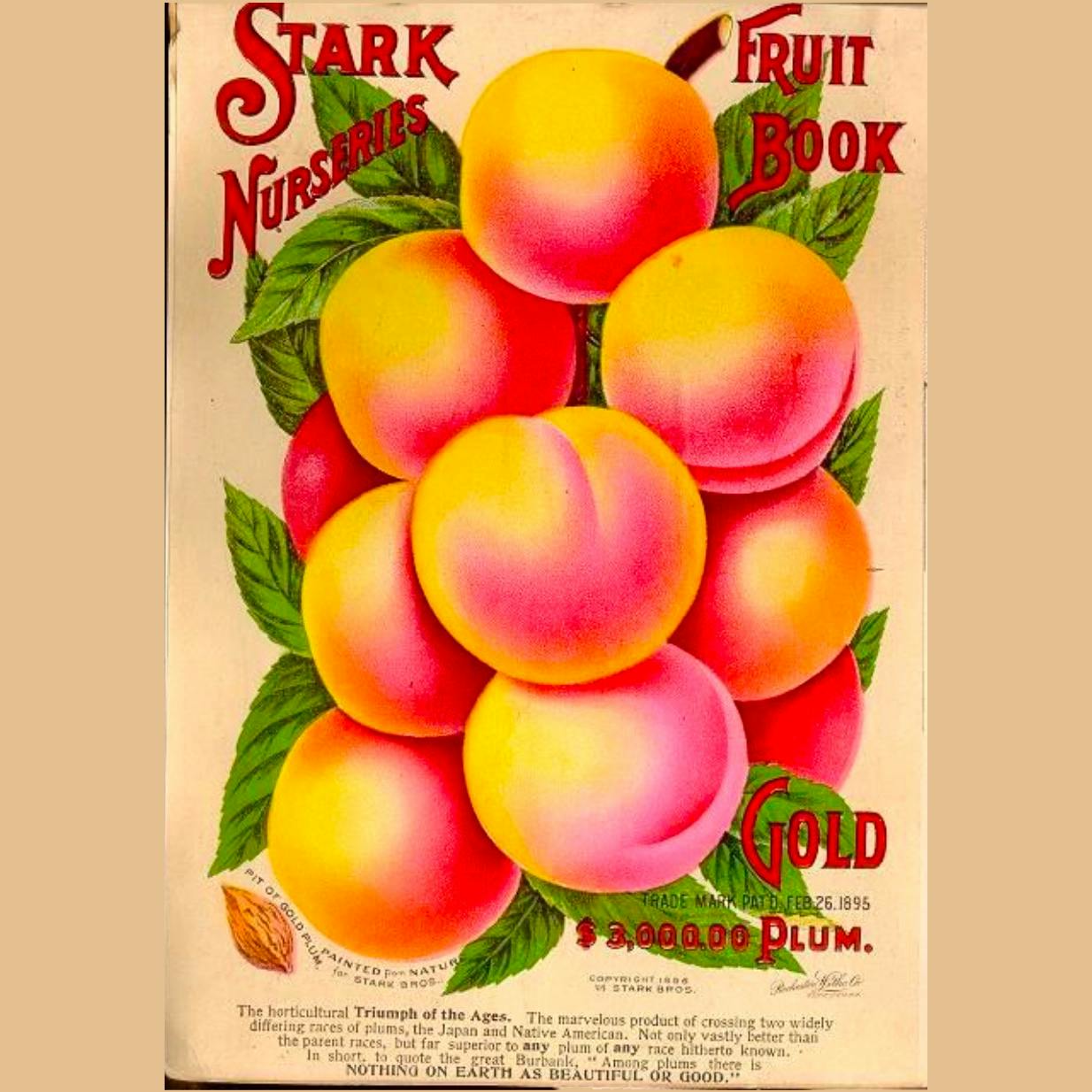
Meet the Most Famous American You’ve Never Heard Of: His Legacy is Excellent French Fries and Monsanto
In his day, Luther Burbank was a horticultural rock star: everyone from opera singers to movie stars and European royalty to an Indian guru traveled to Santa Rosa, California, to meet him. Dubbed the "plant wizard," Burbank invented the plumcot and the stoneless plum, the white blackberry, and the potato variety used in every French fry you've ever eaten—as well as some 800 more new-and-improved plants, from walnuts to rhubarb. His fame as a plant inventor put him in the same league as Thomas Edison—but, while Edison patented his light bulb and phonograph, Burbank had no legal way to protect his crop creations. Listen now for the story of Luther Burbank, the most famous American you've never heard of, and how his struggles shaped what's on our supermarket shelves today, but also led to a world in which big companies like Monsanto can patent life. It's a wild ride that involves the death spiral of the Red Delicious and the rise of the Cosmic Crisp apple, as well as coded notebooks, detective agencies, rogue farmers, and a resistance movement led by former New York City mayor (and subsequent airport namesake) Fiorello La Guardia. Learn more about your ad choices. Visit podcastchoices.com/adchoices
Meet the Most Famous American You’ve Never Heard Of: His Legacy is Excellent French Fries and Monsanto
In his day, Luther Burbank was a horticultural rock star: everyone from opera singers to movie stars and European royalty to an Indian guru traveled to Santa Rosa, California, to meet him. Dubbed the "plant wizard," Burbank invented the plumcot and the stoneless plum, the white blackberry, and the potato variety used in every French fry you've ever eaten—as well as some 800 more new-and-improved plants, from walnuts to rhubarb. His fame as a plant inventor put him in the same league as Thomas Edison—but, while Edison patented his light bulb and phonograph, Burbank had no legal way to protect his crop creations. Listen now for the story of Luther Burbank, the most famous American you've never heard of, and how his struggles shaped what's on our supermarket shelves today, but also led to a world in which big companies like Monsanto can patent life. It's a wild ride that involves the death spiral of the Red Delicious and the rise of the Cosmic Crisp apple, as well as coded notebooks, detective agencies, rogue farmers, and a resistance movement led by former New York City mayor (and subsequent airport namesake) Fiorello La Guardia. Learn more about your ad choices. Visit podcastchoices.com/adchoices
56:48
30 Apr 24
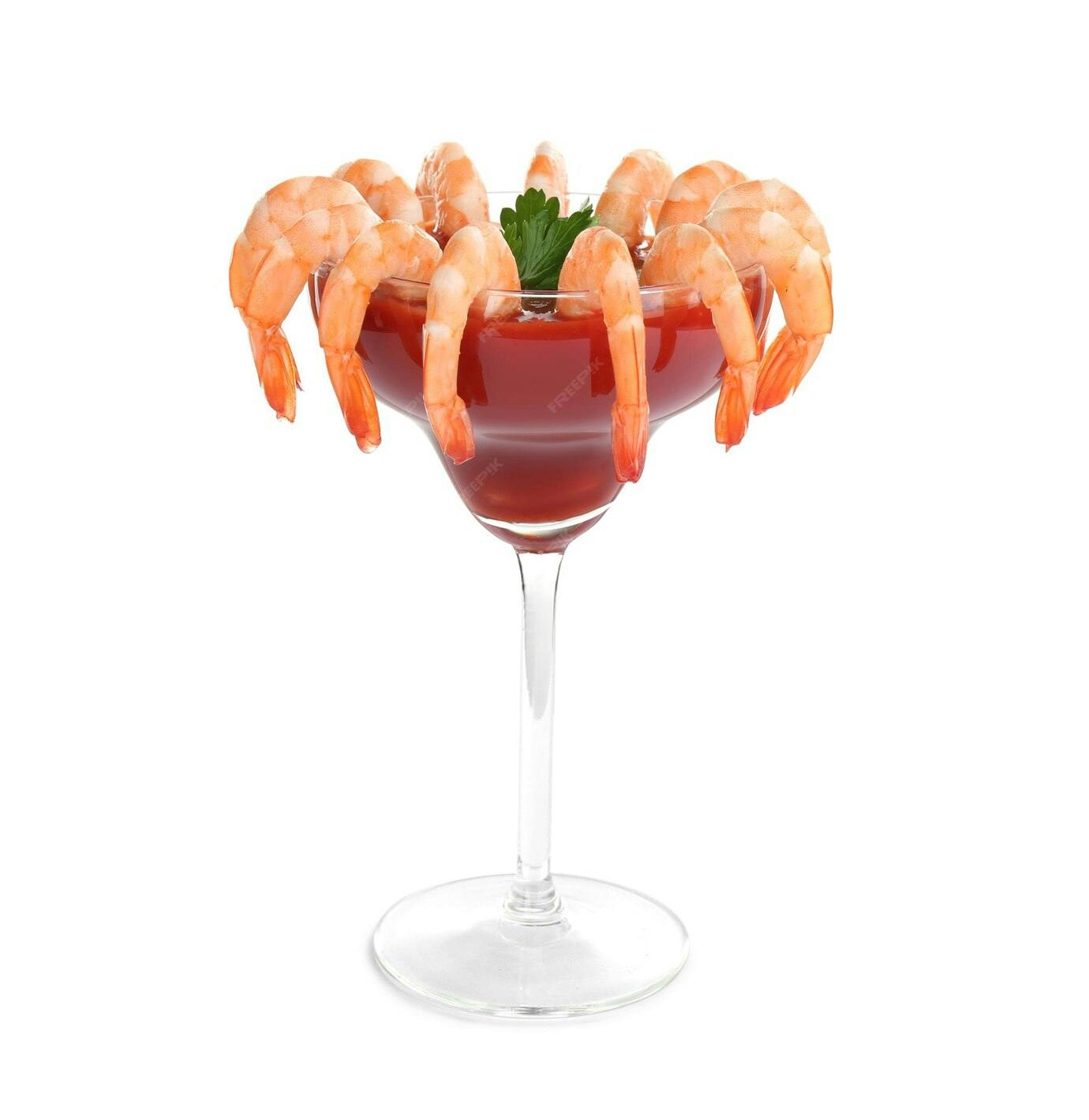
All You Can Eat: The True Story Behind America's Most Popular Seafood
Americans eat more shrimp than any other seafood: on average, each person in the US gobbles up close to six pounds of the cheap crustaceans every year. We can eat so many of these bug-like shellfish because they’re incredibly inexpensive, making them the stars of all-you-can-eat shrimp buffets and single-digit seafood deals. But we've got bad news: this is one bargain that's too good to be true. More than 90 percent of the shrimp we eat comes from overseas, where looser regulations lead to horrific labor abuses, environmental destruction, and the use of banned chemicals and antibiotics—all while American shrimpers struggle to survive. This episode, we’re exploring the history of how shrimp went from a fancy delicacy to buffet bargain (yes, Forrest Gump is involved), plus what to do if you want to enjoy everybody's favorite seafood with a clear conscience. Hold the cocktail sauce: this episode will change how you look at your favorite appetizer forever. Learn more about your ad choices. Visit podcastchoices.com/adchoices
All You Can Eat: The True Story Behind America's Most Popular Seafood
Americans eat more shrimp than any other seafood: on average, each person in the US gobbles up close to six pounds of the cheap crustaceans every year. We can eat so many of these bug-like shellfish because they’re incredibly inexpensive, making them the stars of all-you-can-eat shrimp buffets and single-digit seafood deals. But we've got bad news: this is one bargain that's too good to be true. More than 90 percent of the shrimp we eat comes from overseas, where looser regulations lead to horrific labor abuses, environmental destruction, and the use of banned chemicals and antibiotics—all while American shrimpers struggle to survive. This episode, we’re exploring the history of how shrimp went from a fancy delicacy to buffet bargain (yes, Forrest Gump is involved), plus what to do if you want to enjoy everybody's favorite seafood with a clear conscience. Hold the cocktail sauce: this episode will change how you look at your favorite appetizer forever. Learn more about your ad choices. Visit podcastchoices.com/adchoices
45:21
16 Apr 24
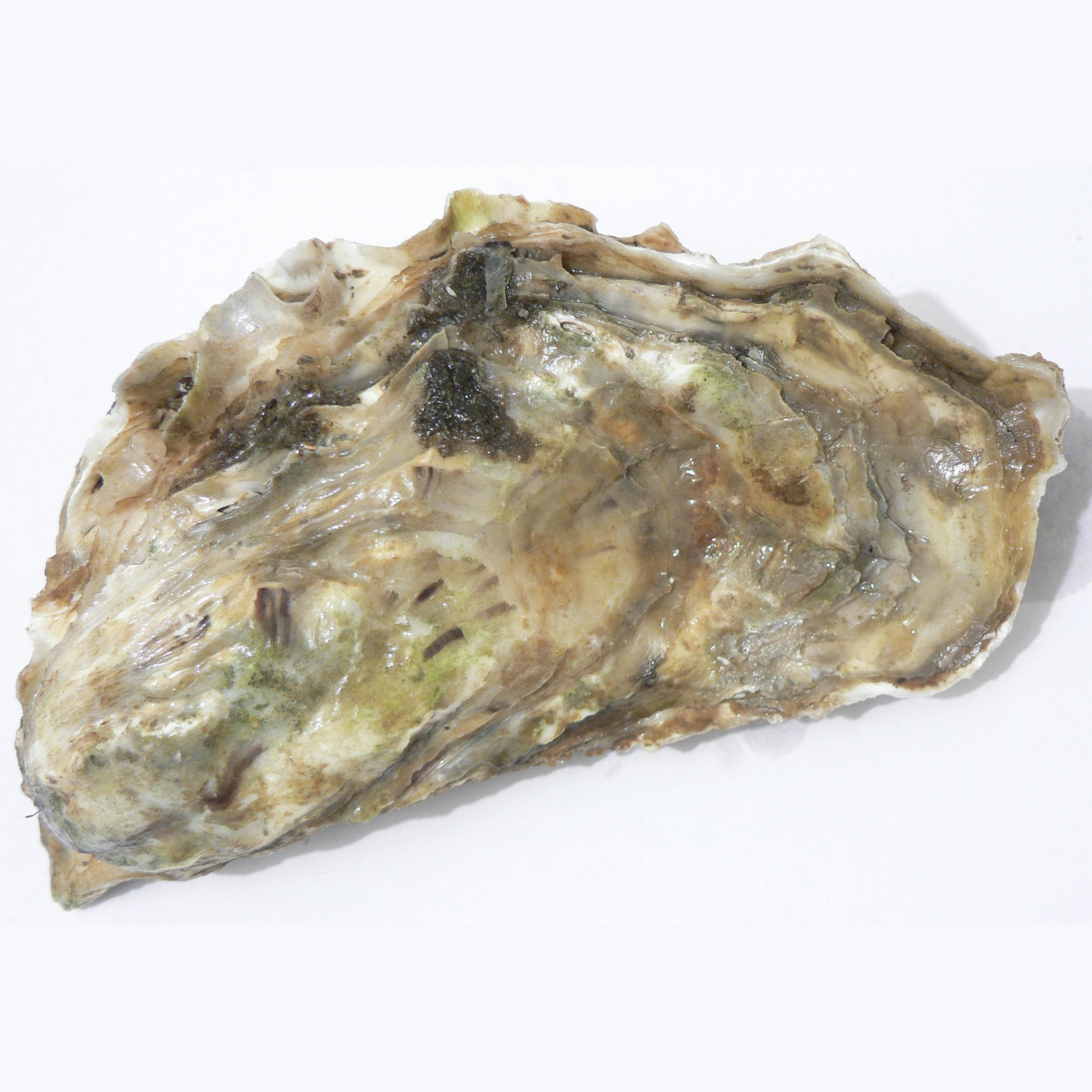
The World Is Your Oyster: How Our Favorite Shellfish Could Save Coastlines Worldwide
If we at Gastropod were asked to name a perfect food, the oyster would be at the top of our list. Oysters are pretty much always our answer to the question of what we'd like to eat this evening—but are they also the answer to the slow-motion disaster of disappearing coastlines worldwide? Join us this episode as we discover how this magical mollusk contains a pearl of hope in the fight to counter rising sea-levels, prevent erosion, and buffer storm surges everywhere from hurricane-hit New Orleans to New York City's flood-prone fringes. But be prepared: you just might join the ranks of the oyster obsessed. Learn more about your ad choices. Visit podcastchoices.com/adchoices
The World Is Your Oyster: How Our Favorite Shellfish Could Save Coastlines Worldwide
If we at Gastropod were asked to name a perfect food, the oyster would be at the top of our list. Oysters are pretty much always our answer to the question of what we'd like to eat this evening—but are they also the answer to the slow-motion disaster of disappearing coastlines worldwide? Join us this episode as we discover how this magical mollusk contains a pearl of hope in the fight to counter rising sea-levels, prevent erosion, and buffer storm surges everywhere from hurricane-hit New Orleans to New York City's flood-prone fringes. But be prepared: you just might join the ranks of the oyster obsessed. Learn more about your ad choices. Visit podcastchoices.com/adchoices
50:22
2 Apr 24

Eat This, Not That: The Surprising Science of Personalized Nutrition (encore)
This episode, we've got the exclusive on the preliminary results of the world's largest personalized nutrition experiment. Genetic epidemiologist Tim Spector launched the study, called PREDICT, to answer a simple but important question: do we each respond to different foods differently? And, if so, why? How much of that difference is genetic, how much is due to gut microbes, and how much is due to any one of the dozens of other factors that scientists think affect our metabolic processes? You’ve heard of personalized medicine, will there be such a thing as personalized diets? And should there be? Can teasing out the nuances of how each individual body processes different foods make us all healthier? To find out, we signed ourselves up as study participants, sticking pins in our fingers, weighing our food, and providing fecal samples, all for science—and for you, dear listeners. Listen in now as we take part in this ground-breaking study, discover our own differences, and find out the early results! (Encore episode) Learn more about your ad choices. Visit podcastchoices.com/adchoices
Eat This, Not That: The Surprising Science of Personalized Nutrition (encore)
This episode, we've got the exclusive on the preliminary results of the world's largest personalized nutrition experiment. Genetic epidemiologist Tim Spector launched the study, called PREDICT, to answer a simple but important question: do we each respond to different foods differently? And, if so, why? How much of that difference is genetic, how much is due to gut microbes, and how much is due to any one of the dozens of other factors that scientists think affect our metabolic processes? You’ve heard of personalized medicine, will there be such a thing as personalized diets? And should there be? Can teasing out the nuances of how each individual body processes different foods make us all healthier? To find out, we signed ourselves up as study participants, sticking pins in our fingers, weighing our food, and providing fecal samples, all for science—and for you, dear listeners. Listen in now as we take part in this ground-breaking study, discover our own differences, and find out the early results! (Encore episode) Learn more about your ad choices. Visit podcastchoices.com/adchoices
57:30
26 Mar 24
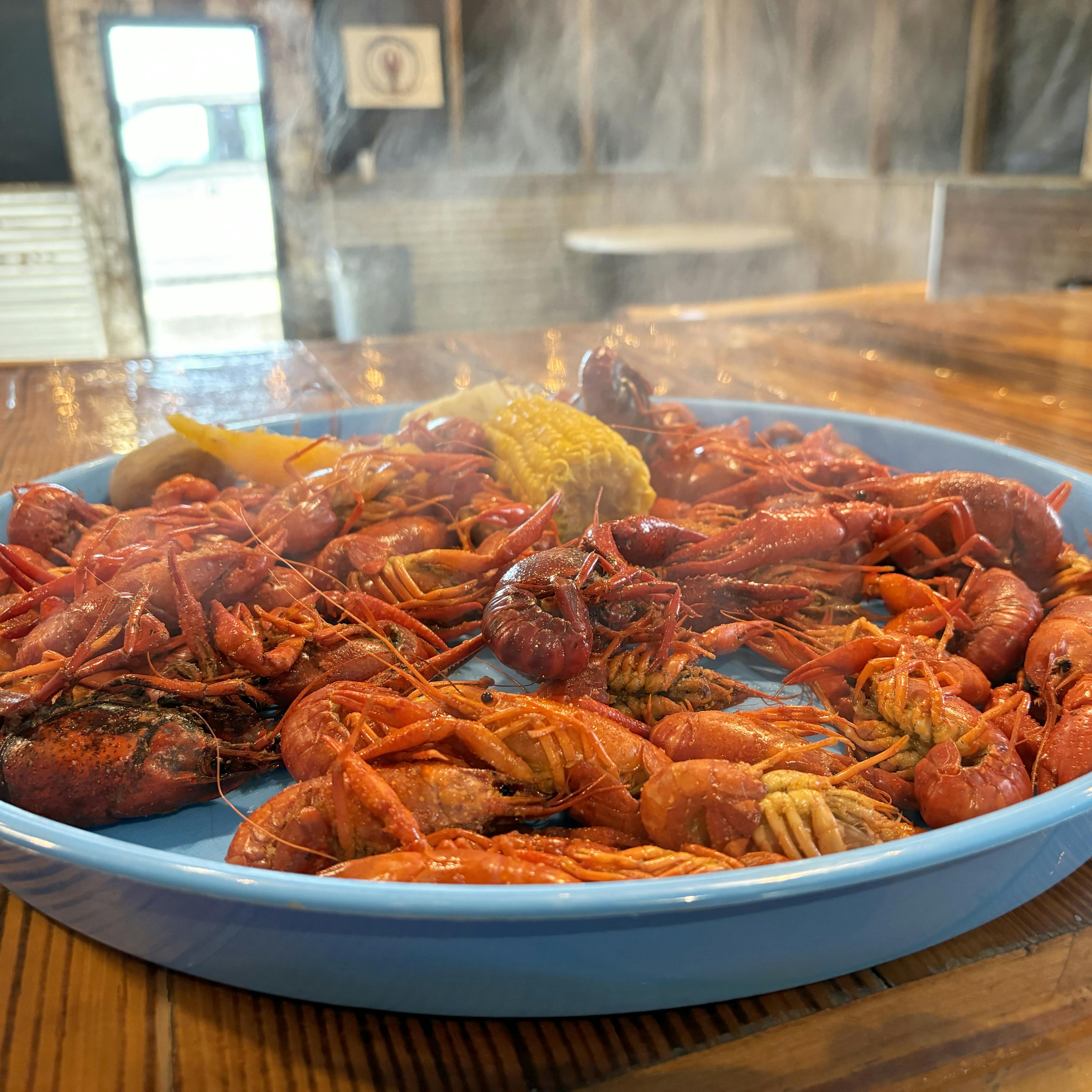
Bam! How Did Cajun Flavor Take Over the World?
If "Cajun-style" only makes you think of spicy chicken sandwiches and popcorn shrimp, you need to join us in the Big Easy this episode, to meet the real Cajun flavor. Cajun cuisine and its close cousin, Creole, were born out of the unique landscape of the Mississippi River delta, whose bounty was sufficient to support large, complex Indigenous societies, without the need for farming or even social hierarchies, for thousands of years. Europeans were slow to appreciate the wealth of this waterlogged country, but, as waves of French, Spanish, and American colonists and enslaved Africans arrived in Louisiana and the port of New Orleans, they all shaped the food that makes it famous today. But it would take a formerly enslaved woman turned international celebrity chef, a legendary restaurant that's hosted Freedom Riders, U.S. presidents, and Queen B, and a blackened redfish craze to turn Louisiana's flavorsome food into a global trend. Come on down to the bayou this episode, as we catch crawfish and cook up a storm to tell the story of how Cajun and Creole flavors ended up on home-cooking shows, in Disney movies, and at drive-throughs nationwide. Learn more about your ad choices. Visit podcastchoices.com/adchoices
Bam! How Did Cajun Flavor Take Over the World?
If "Cajun-style" only makes you think of spicy chicken sandwiches and popcorn shrimp, you need to join us in the Big Easy this episode, to meet the real Cajun flavor. Cajun cuisine and its close cousin, Creole, were born out of the unique landscape of the Mississippi River delta, whose bounty was sufficient to support large, complex Indigenous societies, without the need for farming or even social hierarchies, for thousands of years. Europeans were slow to appreciate the wealth of this waterlogged country, but, as waves of French, Spanish, and American colonists and enslaved Africans arrived in Louisiana and the port of New Orleans, they all shaped the food that makes it famous today. But it would take a formerly enslaved woman turned international celebrity chef, a legendary restaurant that's hosted Freedom Riders, U.S. presidents, and Queen B, and a blackened redfish craze to turn Louisiana's flavorsome food into a global trend. Come on down to the bayou this episode, as we catch crawfish and cook up a storm to tell the story of how Cajun and Creole flavors ended up on home-cooking shows, in Disney movies, and at drive-throughs nationwide. Learn more about your ad choices. Visit podcastchoices.com/adchoices
50:01
19 Mar 24

Anything's Pastable (Guest Episode)
After Dan’s pasta shape, cascatelli, was launched, people everywhere were cooking with it and sending him photos of what they were making. As exciting as that was, he was disappointed that most folks were only making a handful of well-worn dishes with this new shape. So Dan decided to write a cookbook to show the world that there’s so much more you can and should be putting on all your pasta shapes, cascatelli and beyond! There’s only one problem: he’s never written a recipe in his life. In this four-part series, Dan shares the inside story of creating his first cookbook, Anything’s Pastable — from the highs and lows of recipe testing, to a research trip across Italy, to the agonizing decisions over the design of the cover. Listen to this special guest episode of The Sporkful now. Learn more about your ad choices. Visit podcastchoices.com/adchoices
Anything's Pastable (Guest Episode)
After Dan’s pasta shape, cascatelli, was launched, people everywhere were cooking with it and sending him photos of what they were making. As exciting as that was, he was disappointed that most folks were only making a handful of well-worn dishes with this new shape. So Dan decided to write a cookbook to show the world that there’s so much more you can and should be putting on all your pasta shapes, cascatelli and beyond! There’s only one problem: he’s never written a recipe in his life. In this four-part series, Dan shares the inside story of creating his first cookbook, Anything’s Pastable — from the highs and lows of recipe testing, to a research trip across Italy, to the agonizing decisions over the design of the cover. Listen to this special guest episode of The Sporkful now. Learn more about your ad choices. Visit podcastchoices.com/adchoices
48:30
12 Mar 24
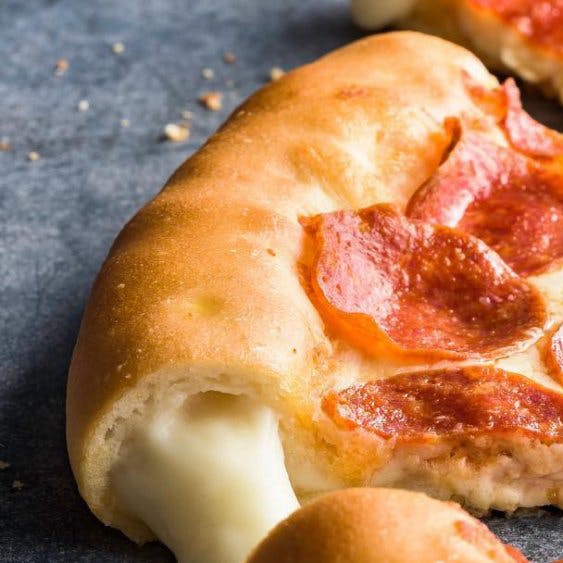
Can You Patent a Pizza?
Close your eyes and imagine this: a world without stuffed crust pizza. We know!—but that was the dismal state of the Italian flatbread scene before 1985, when Anthony Mongiello, aka The Big Cheese, came up with an innovation that loaded even more cheese onto pizza, while saving crusts nationwide from the trashcan. It was a multi-million dollar idea, Mongiello was sure—if only he could figure out how to protect his intellectual property and license it. But can you copyright the recipe for stuffing the crust? Could that puffy, cheese-filled rim be trademarked, or the technique for making it qualify as a trade secret? Can you patent a pizza? And did Pizza Hut, which unveiled their own stuffed crust pie in 1995, steal his idea—or does the concept of a cheesy crust belong to humanity as a whole? This episode, we're diving deep into the weird and wonderful world of food IP, via the legendary legal battles to defend Pepperidge Farm's Goldfish, Smucker's Uncrustables, and that futuristic mall treat of the 90s, Dippin' Dots ice cream. Listen in now for the true story of stuffed crust pizza—a story in which creativity, commerce, and lots and lots of cheese collide. Learn more about your ad choices. Visit podcastchoices.com/adchoices
Can You Patent a Pizza?
Close your eyes and imagine this: a world without stuffed crust pizza. We know!—but that was the dismal state of the Italian flatbread scene before 1985, when Anthony Mongiello, aka The Big Cheese, came up with an innovation that loaded even more cheese onto pizza, while saving crusts nationwide from the trashcan. It was a multi-million dollar idea, Mongiello was sure—if only he could figure out how to protect his intellectual property and license it. But can you copyright the recipe for stuffing the crust? Could that puffy, cheese-filled rim be trademarked, or the technique for making it qualify as a trade secret? Can you patent a pizza? And did Pizza Hut, which unveiled their own stuffed crust pie in 1995, steal his idea—or does the concept of a cheesy crust belong to humanity as a whole? This episode, we're diving deep into the weird and wonderful world of food IP, via the legendary legal battles to defend Pepperidge Farm's Goldfish, Smucker's Uncrustables, and that futuristic mall treat of the 90s, Dippin' Dots ice cream. Listen in now for the true story of stuffed crust pizza—a story in which creativity, commerce, and lots and lots of cheese collide. Learn more about your ad choices. Visit podcastchoices.com/adchoices
50:58
5 Mar 24
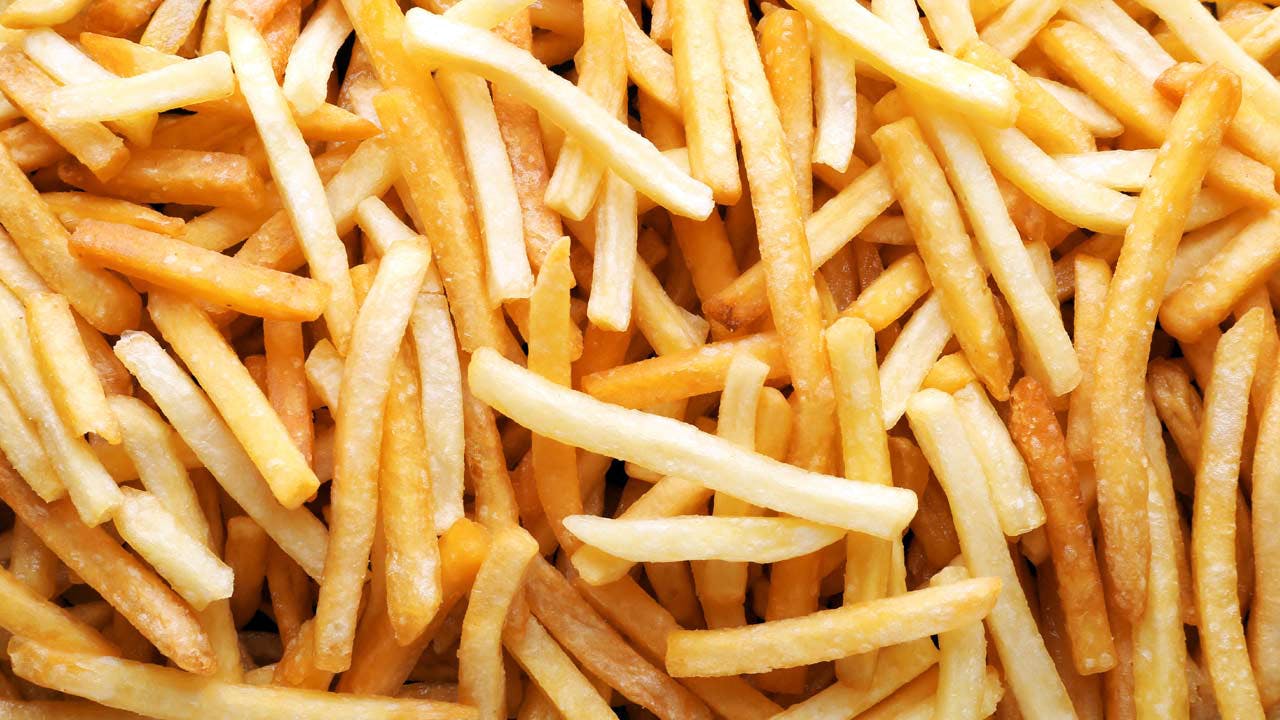
Super Fry: The Fight for the Golden Frite (encore)
Shoestring, waffle, curly, or thick-cut: however you slice it, nearly everyone loves a deep-fried, golden brown piece of potato. But that's where the agreement ends and the battles begin. While Americans call their fries "French," Belgians claim that they, not the French, invented the perfect fry. Who's right? This episode, we take you right into the heart of the battle that continues to be waged over who owns the fry—who invented it, who perfected it, who loves it the most? And then we take you behind the scenes into another epic fight: the struggle for the perfect fry. Can food scientists create a fry with the ultimate crispy shell and soft inside, one that can stay that way while your delivery driver is stuck in traffic? Plus, the condiment wars: does mayo really have the edge over ketchup? Listen in now to find out! (Encore episode) Learn more about your ad choices. Visit podcastchoices.com/adchoices
Super Fry: The Fight for the Golden Frite (encore)
Shoestring, waffle, curly, or thick-cut: however you slice it, nearly everyone loves a deep-fried, golden brown piece of potato. But that's where the agreement ends and the battles begin. While Americans call their fries "French," Belgians claim that they, not the French, invented the perfect fry. Who's right? This episode, we take you right into the heart of the battle that continues to be waged over who owns the fry—who invented it, who perfected it, who loves it the most? And then we take you behind the scenes into another epic fight: the struggle for the perfect fry. Can food scientists create a fry with the ultimate crispy shell and soft inside, one that can stay that way while your delivery driver is stuck in traffic? Plus, the condiment wars: does mayo really have the edge over ketchup? Listen in now to find out! (Encore episode) Learn more about your ad choices. Visit podcastchoices.com/adchoices
44:31
27 Feb 24
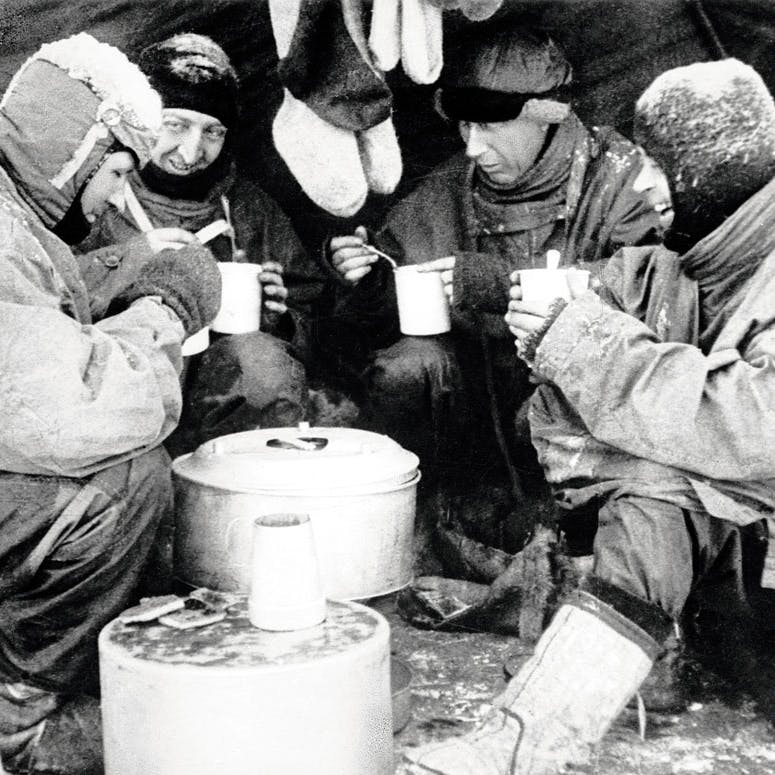
Dining at the (Other) Top of the World: Hunger, Fruitcake, and the Race to Reach the South Pole
In contrast to the abundance of the Arctic, in Antarctica, "once you leave the coast, you're basically heading to the moon." Jason Anthony, who spent several summers on the seventh continent, told us that in this desert of ice and stone (where the largest terrestrial animal is a tiny wingless midge), food isn't just important—it's everything. This episode is packed full of stories of survival at Earth's southernmost points, from Heroic Era expedition chefs whipping up croissants on the ice, to desperate Dorito auctions when supplies run low today. Plus, listen in now for the scoop on how food fueled the race to the South Pole—and determined the ultimate winner and loser. Learn more about your ad choices. Visit podcastchoices.com/adchoices
Dining at the (Other) Top of the World: Hunger, Fruitcake, and the Race to Reach the South Pole
In contrast to the abundance of the Arctic, in Antarctica, "once you leave the coast, you're basically heading to the moon." Jason Anthony, who spent several summers on the seventh continent, told us that in this desert of ice and stone (where the largest terrestrial animal is a tiny wingless midge), food isn't just important—it's everything. This episode is packed full of stories of survival at Earth's southernmost points, from Heroic Era expedition chefs whipping up croissants on the ice, to desperate Dorito auctions when supplies run low today. Plus, listen in now for the scoop on how food fueled the race to the South Pole—and determined the ultimate winner and loser. Learn more about your ad choices. Visit podcastchoices.com/adchoices
44:33
20 Feb 24
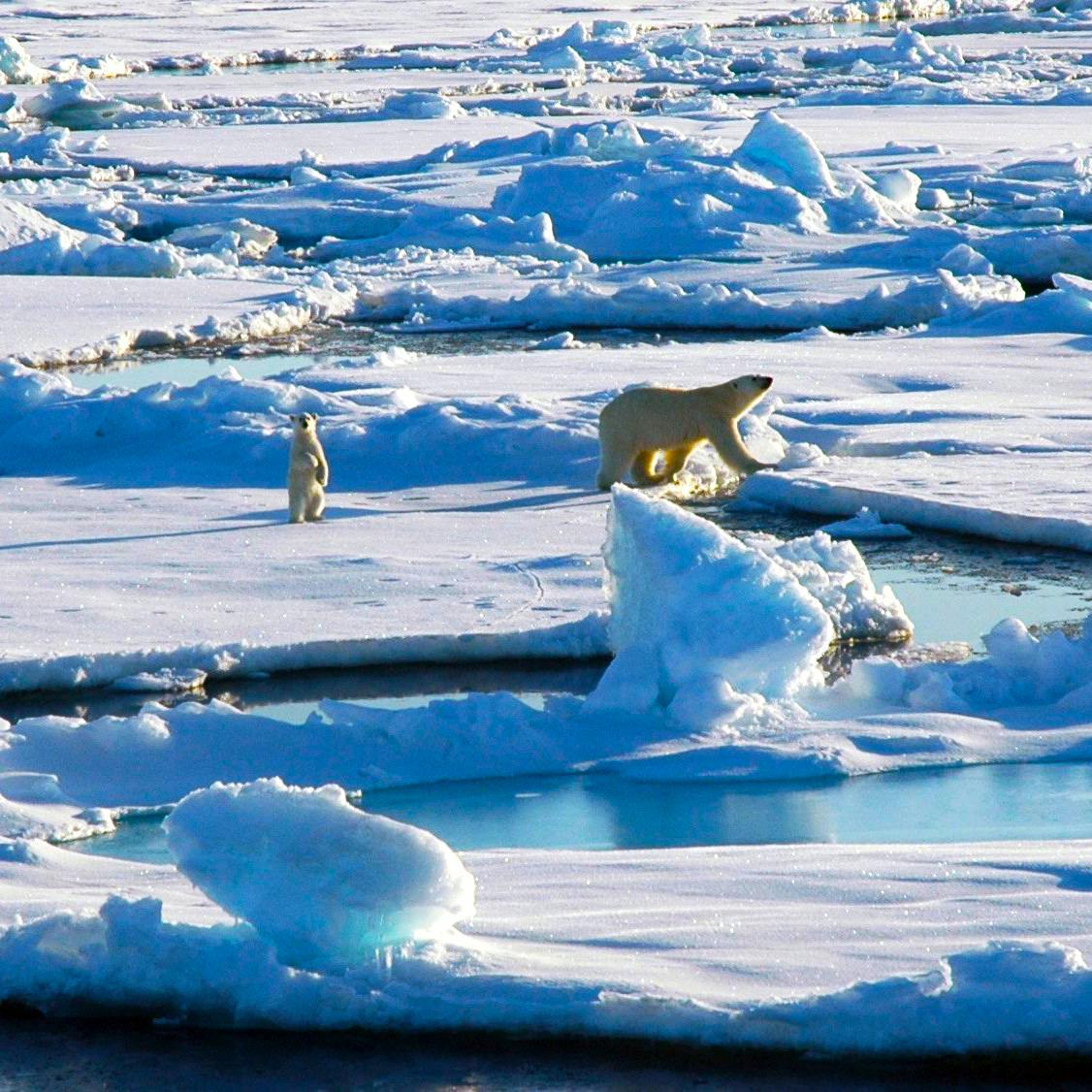
Dining at the Top of the World: Arctic Adaptation, Abundance, and...Ice Cream
You may feel like it's cold where you live, but in the Arctic, the average temperature is well below freezing all year round. In winter, it's also pitch black for weeks on end—not an ideal environment for growing food. Still, for thousands of years, people in the Arctic have thrived in a landscape that most outsiders would find fatally inhospitable. This episode, we point our compasses north on a journey to discover how traditional knowledge, ingenuity, and a lot of hard work—combined with genetics and microbes—have allowed the indigenous populations of the far North to not only successfully feed themselves, but also develop a distinctive and remarkable cuisine. Tune in now for the secrets of a dish that feels like Fourth of July fireworks in your mouth, the story of Iceland's second-most famous celebrity (after Björk), and the science behind how to avoid scurvy on an almost vegetable-free diet. Just don't forget your long underwear! Learn more about your ad choices. Visit podcastchoices.com/adchoices
Dining at the Top of the World: Arctic Adaptation, Abundance, and...Ice Cream
You may feel like it's cold where you live, but in the Arctic, the average temperature is well below freezing all year round. In winter, it's also pitch black for weeks on end—not an ideal environment for growing food. Still, for thousands of years, people in the Arctic have thrived in a landscape that most outsiders would find fatally inhospitable. This episode, we point our compasses north on a journey to discover how traditional knowledge, ingenuity, and a lot of hard work—combined with genetics and microbes—have allowed the indigenous populations of the far North to not only successfully feed themselves, but also develop a distinctive and remarkable cuisine. Tune in now for the secrets of a dish that feels like Fourth of July fireworks in your mouth, the story of Iceland's second-most famous celebrity (after Björk), and the science behind how to avoid scurvy on an almost vegetable-free diet. Just don't forget your long underwear! Learn more about your ad choices. Visit podcastchoices.com/adchoices
52:41
6 Feb 24

Cork Dork: Inside the Weird World of Wine Appreciation (encore)
“There’s the faintest soupçon of asparagus and just a flutter of Edam cheese,” says Paul Giamatti in the movie Sideways. Believe it or not, he's describing pinot noir, not quiche. The world of sommeliers, wine lists, and tasting notes is filled with this kind of language, prices seemingly rising in step with the number of bizarre adjectives. It's tempting to dismiss the whole thing as B.S., but listen in: this episode, author Bianca Bosker takes us along on her journey into the history and science behind blind tasting, wine flavor wheels, and the craft of the sommelier. You'll never feel lost in front of a wine list again. (encore) Learn more about your ad choices. Visit podcastchoices.com/adchoices
Cork Dork: Inside the Weird World of Wine Appreciation (encore)
“There’s the faintest soupçon of asparagus and just a flutter of Edam cheese,” says Paul Giamatti in the movie Sideways. Believe it or not, he's describing pinot noir, not quiche. The world of sommeliers, wine lists, and tasting notes is filled with this kind of language, prices seemingly rising in step with the number of bizarre adjectives. It's tempting to dismiss the whole thing as B.S., but listen in: this episode, author Bianca Bosker takes us along on her journey into the history and science behind blind tasting, wine flavor wheels, and the craft of the sommelier. You'll never feel lost in front of a wine list again. (encore) Learn more about your ad choices. Visit podcastchoices.com/adchoices
45:58
23 Jan 24

It's Tea Time: Pirates, Polyphenols, and a Proper Cuppa (encore)
This week, Gastropod tells the story of two countries and their shared obsession with a plant: Camellia sinensis, otherwise known as the tea bush. The Chinese domesticated tea over thousands of years, but they lost their near monopoly on international trade when a Scottish botanist, disguised as a Chinese nobleman, smuggled it out of China in the 1800s, in order to secure Britain's favorite beverage and prop up its empire for another century. The story involves pirates, ponytails, and hard drugs—and, to help tell the tale, Cynthia and Nicky visit Britain's one and only commercial tea plantation, tucked away in a secret garden on an aristocratic estate on the Cornish coast. While harvesting and processing tea leaves, we learn the difference between green and black tea, as well as which is better for your health. Put the kettle on, and settle in for the science and history of tea! (encore edition) Learn more about your ad choices. Visit podcastchoices.com/adchoices
It's Tea Time: Pirates, Polyphenols, and a Proper Cuppa (encore)
This week, Gastropod tells the story of two countries and their shared obsession with a plant: Camellia sinensis, otherwise known as the tea bush. The Chinese domesticated tea over thousands of years, but they lost their near monopoly on international trade when a Scottish botanist, disguised as a Chinese nobleman, smuggled it out of China in the 1800s, in order to secure Britain's favorite beverage and prop up its empire for another century. The story involves pirates, ponytails, and hard drugs—and, to help tell the tale, Cynthia and Nicky visit Britain's one and only commercial tea plantation, tucked away in a secret garden on an aristocratic estate on the Cornish coast. While harvesting and processing tea leaves, we learn the difference between green and black tea, as well as which is better for your health. Put the kettle on, and settle in for the science and history of tea! (encore edition) Learn more about your ad choices. Visit podcastchoices.com/adchoices
45:21
9 Jan 24
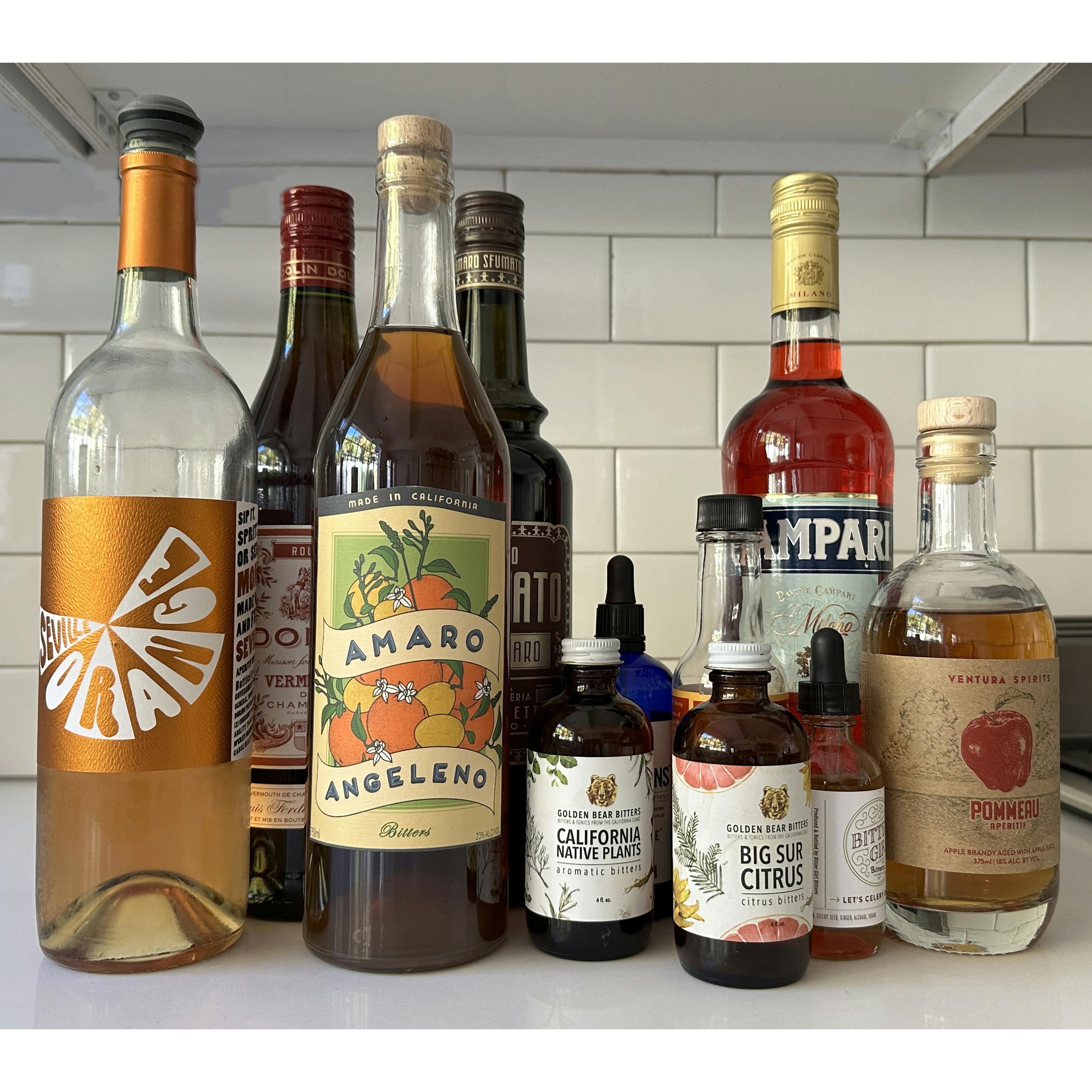
The Case of the Confusing Bitter Beverages: Vermouth, Amaro, Aperitivos, and Other Botanical Schnapps
When it comes to booze, it’s fun to be bitter: an Aperol spritz has been the drink of summer for about five years, vermouth and soda was apparentlythe "hot girl" drink of 2023, and amaro is having "a major moment." Bitter botanical beverages are everywhere, but that doesn’t mean we understand what on earth they are. Could you explain the difference between vermouth and amaro, or whether either is an aperitif or a digestif? Where do Aperol, Campari, and Chartreuse fit in, and what’s the difference between drinks called bitters and the bitters your bartender dashes into a Manhattan? This episode, Gastropod is on the case of the confusing bitter beverages, starting with their origins in alchemy. (That pre-dinner spritz is pretty magical!) Listen in now to find out why Napoleon chugged cologne, how a shopkeeper’s assistant created the preferred drink of kings and influencers, and how you should enjoy these trendy new botanical beverages. Learn more about your ad choices. Visit podcastchoices.com/adchoices
The Case of the Confusing Bitter Beverages: Vermouth, Amaro, Aperitivos, and Other Botanical Schnapps
When it comes to booze, it’s fun to be bitter: an Aperol spritz has been the drink of summer for about five years, vermouth and soda was apparentlythe "hot girl" drink of 2023, and amaro is having "a major moment." Bitter botanical beverages are everywhere, but that doesn’t mean we understand what on earth they are. Could you explain the difference between vermouth and amaro, or whether either is an aperitif or a digestif? Where do Aperol, Campari, and Chartreuse fit in, and what’s the difference between drinks called bitters and the bitters your bartender dashes into a Manhattan? This episode, Gastropod is on the case of the confusing bitter beverages, starting with their origins in alchemy. (That pre-dinner spritz is pretty magical!) Listen in now to find out why Napoleon chugged cologne, how a shopkeeper’s assistant created the preferred drink of kings and influencers, and how you should enjoy these trendy new botanical beverages. Learn more about your ad choices. Visit podcastchoices.com/adchoices
51:11
19 Dec 23
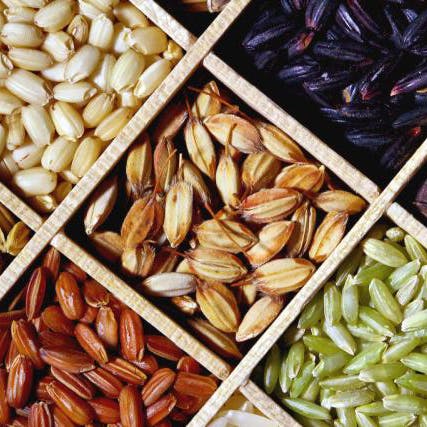
Rice, Rice Baby
Though rice might not feature in a hit 1990s Vanilla Ice rap, this grain tops the charts in other ways: it's the staple food for more than half the global population, and it's grown by more farmers than any other crop on Earth, from Japan to West Africa to Italy's Po River valley. Rice is so central that it's been used as currency, embedded itself in language, and formed the basis of beloved dishes, from sushi to jollof to risotto. But this adaptable grass has two features that have molded rice cultures and directed the grain's destiny: it can grow in an aquatic environment, but it requires cooperation to cultivate. In this episode, we explore how rice's relationship to water and community have shaped stories all over the world, from Japanese-American rice growers in California's drought-prone San Joaquin valley to Bangladeshi farmers facing flooding from climate change. Plus: could taking rice out of water not only build a better future for African-American rice farmers in the American South, but save the planet in the process? Learn more about your ad choices. Visit podcastchoices.com/adchoices
Rice, Rice Baby
Though rice might not feature in a hit 1990s Vanilla Ice rap, this grain tops the charts in other ways: it's the staple food for more than half the global population, and it's grown by more farmers than any other crop on Earth, from Japan to West Africa to Italy's Po River valley. Rice is so central that it's been used as currency, embedded itself in language, and formed the basis of beloved dishes, from sushi to jollof to risotto. But this adaptable grass has two features that have molded rice cultures and directed the grain's destiny: it can grow in an aquatic environment, but it requires cooperation to cultivate. In this episode, we explore how rice's relationship to water and community have shaped stories all over the world, from Japanese-American rice growers in California's drought-prone San Joaquin valley to Bangladeshi farmers facing flooding from climate change. Plus: could taking rice out of water not only build a better future for African-American rice farmers in the American South, but save the planet in the process? Learn more about your ad choices. Visit podcastchoices.com/adchoices
51:47
5 Dec 23
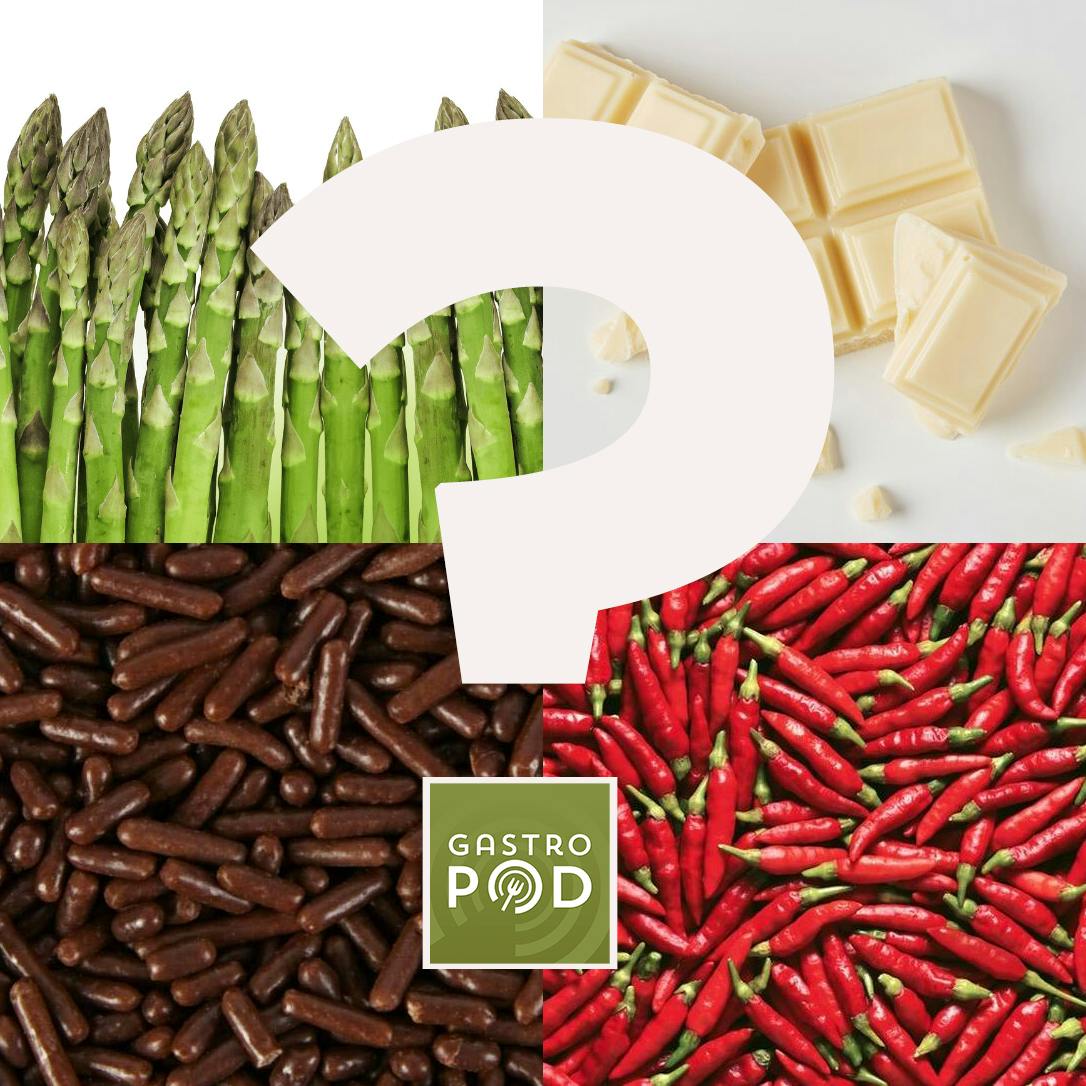
Ask Gastropod: White Chocolate, Jimmies, Chile vs. Mustard Burns, and Asparagus Pee
Is white chocolate really chocolate? What causes asparagus pee? Sprinkles or jimmies—which do you call them, and is the term ‘jimmies’ racist? Why is the heat of mustard and wasabi so different from a chile burn? This episode, Gastropod is getting to the bottom of your most pressing questions—which also means diving into some of the internet’s most controversial food debates. Listen in now as we call in historians and scientists to bust myths, solve mysteries, and find out why some people turn asparagus into the devil’s own brew! Learn more about your ad choices. Visit podcastchoices.com/adchoices
Ask Gastropod: White Chocolate, Jimmies, Chile vs. Mustard Burns, and Asparagus Pee
Is white chocolate really chocolate? What causes asparagus pee? Sprinkles or jimmies—which do you call them, and is the term ‘jimmies’ racist? Why is the heat of mustard and wasabi so different from a chile burn? This episode, Gastropod is getting to the bottom of your most pressing questions—which also means diving into some of the internet’s most controversial food debates. Listen in now as we call in historians and scientists to bust myths, solve mysteries, and find out why some people turn asparagus into the devil’s own brew! Learn more about your ad choices. Visit podcastchoices.com/adchoices
45:16
21 Nov 23
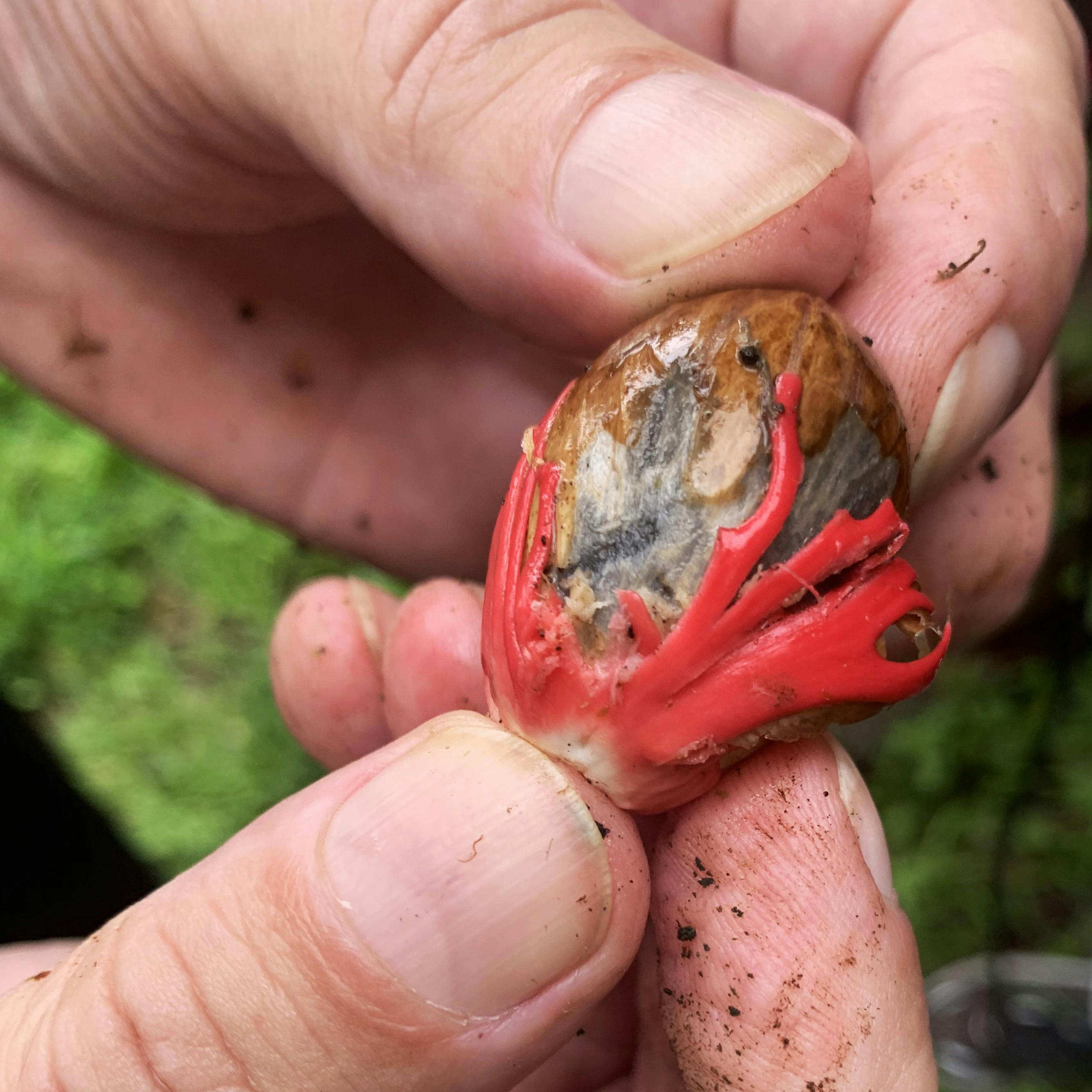
Pumpkin Spice Hero: The Thrilling But Tragic True Story of Nutmeg
No pumpkin spice latte, cookie, candle, or seasonal can of Spam (yes, really) would be the same without one of its key flavors: nutmeg, a warm, woody spice grated from the seed of a tropical fruit. But back in the 1600s, nutmeg wasn’t so common that you could put it in everything from coffee to soap. In fact, nutmeg once grew only in one place in the entire world: the Banda Islands, a Pacific archipelago too tiny to even appear on regular maps. To get their precious nutmeg, European sailors had to brave a three-year journey filled with the possibility of shipwreck, storms, scurvy, dysentery, starvation, and death—so it's not surprising that the spice was so valuable that the crew weren't allowed to have pockets in their clothing, in case they smuggled some ashore for themselves! But how did one heroic Brit, Nathaniel Courthope, end up changing the course of nutmeg history—and, with it, the fate of not just pumpkin spice lattes, but also the city of New York? Listen now for the spicy, swashbuckling tale behind the season's favorite flavor. Learn more about your ad choices. Visit podcastchoices.com/adchoices
Pumpkin Spice Hero: The Thrilling But Tragic True Story of Nutmeg
No pumpkin spice latte, cookie, candle, or seasonal can of Spam (yes, really) would be the same without one of its key flavors: nutmeg, a warm, woody spice grated from the seed of a tropical fruit. But back in the 1600s, nutmeg wasn’t so common that you could put it in everything from coffee to soap. In fact, nutmeg once grew only in one place in the entire world: the Banda Islands, a Pacific archipelago too tiny to even appear on regular maps. To get their precious nutmeg, European sailors had to brave a three-year journey filled with the possibility of shipwreck, storms, scurvy, dysentery, starvation, and death—so it's not surprising that the spice was so valuable that the crew weren't allowed to have pockets in their clothing, in case they smuggled some ashore for themselves! But how did one heroic Brit, Nathaniel Courthope, end up changing the course of nutmeg history—and, with it, the fate of not just pumpkin spice lattes, but also the city of New York? Listen now for the spicy, swashbuckling tale behind the season's favorite flavor. Learn more about your ad choices. Visit podcastchoices.com/adchoices
41:58
7 Nov 23
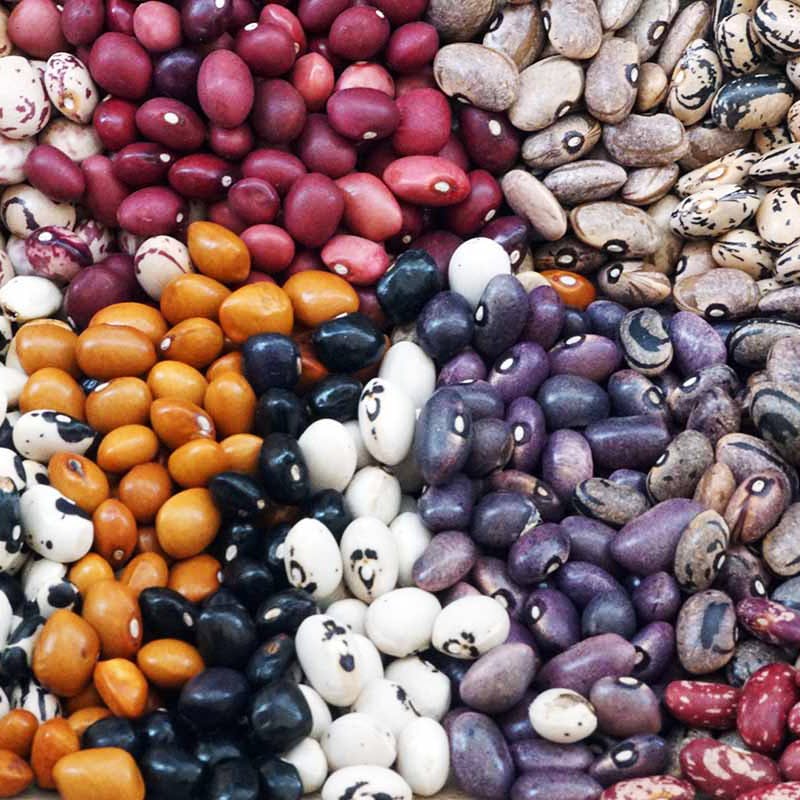
Beans, Beans, the Magical Fruit
Botanically, bean pods are indeed fruits, and, honestly, they are also pretty magical. And we’re clearly not the only ones to think that: beans are the unsung hero of history. The fact that they were domesticated an astonishing seven different times in different places around the world shows how essential beans were to early humans, wherever they lived; in Europe, Italian author and polymath Umberto Eco credits the bean with saving civilization itself. Lately, however, the humble bean has found its fan base declining. In Northern Europe, Australia, Canada, and the United States, most people barely eat beans at all. This episode—our love song to beans—we're exploring the story of the bean's fall from grace, as well as the heirloom varieties and exclusive club that are making beans cool again. Plus, we visit with the Ugandan breeder working on Beans 2.0, which will take a third less time to cook. But can anybody do anything about one of beans' most notorious side-effects? Yes, we're talking farts: we're on the case to discover whether scientists can develop a gas-free bean. Listen in as we spill the beans on one of our favorite foods. Learn more about your ad choices. Visit podcastchoices.com/adchoices
Beans, Beans, the Magical Fruit
Botanically, bean pods are indeed fruits, and, honestly, they are also pretty magical. And we’re clearly not the only ones to think that: beans are the unsung hero of history. The fact that they were domesticated an astonishing seven different times in different places around the world shows how essential beans were to early humans, wherever they lived; in Europe, Italian author and polymath Umberto Eco credits the bean with saving civilization itself. Lately, however, the humble bean has found its fan base declining. In Northern Europe, Australia, Canada, and the United States, most people barely eat beans at all. This episode—our love song to beans—we're exploring the story of the bean's fall from grace, as well as the heirloom varieties and exclusive club that are making beans cool again. Plus, we visit with the Ugandan breeder working on Beans 2.0, which will take a third less time to cook. But can anybody do anything about one of beans' most notorious side-effects? Yes, we're talking farts: we're on the case to discover whether scientists can develop a gas-free bean. Listen in as we spill the beans on one of our favorite foods. Learn more about your ad choices. Visit podcastchoices.com/adchoices
49:28
24 Oct 23
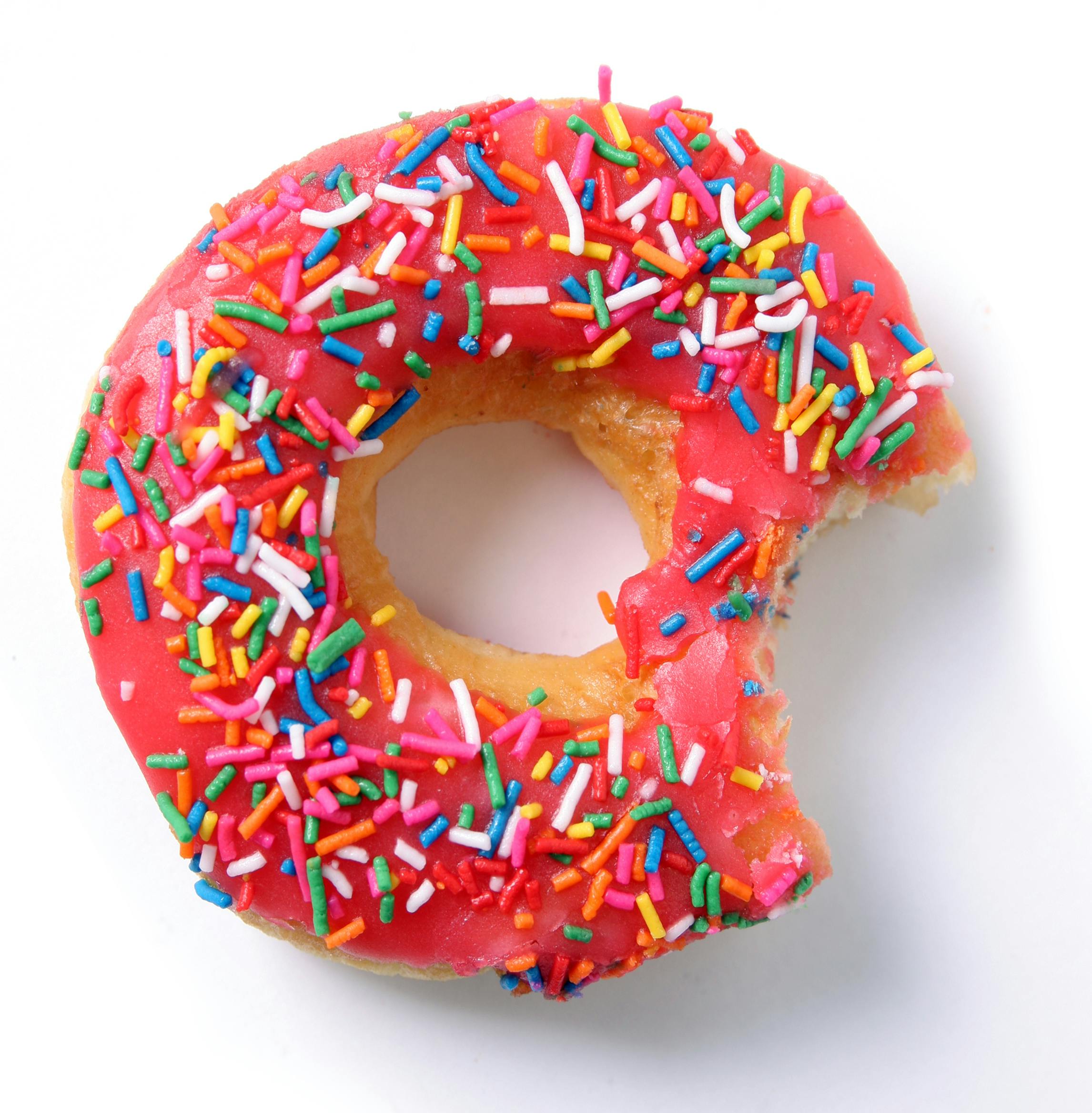
Raised and Glazed: Don’t Doubt the Doughnut
Doughnuts are ubiquitous in the United States: whether you're at party, a coffee shop, or the break room at work, you’re likely to find a box of iced rings covered with sprinkles. But some kind of deep-fried dough blob is a treat found in cultures around the world—so why have doughnuts become uniquely American? And what’s with the name, when there’s rarely a nut found in this dough? This episode, we're taking a roll around the story of these sweet circles, from their debut in Dutch New Amsterdam to the momentous origins of the doughnut hole. Listen in now, as we meet the Salvation Army volunteers who cemented the doughnut's popularity on the battlefields of both world wars, the Massachusetts middle-school dropout who created a doughnut empire, and the Cambodian-American Donut King of California. Learn more about your ad choices. Visit podcastchoices.com/adchoices
Raised and Glazed: Don’t Doubt the Doughnut
Doughnuts are ubiquitous in the United States: whether you're at party, a coffee shop, or the break room at work, you’re likely to find a box of iced rings covered with sprinkles. But some kind of deep-fried dough blob is a treat found in cultures around the world—so why have doughnuts become uniquely American? And what’s with the name, when there’s rarely a nut found in this dough? This episode, we're taking a roll around the story of these sweet circles, from their debut in Dutch New Amsterdam to the momentous origins of the doughnut hole. Listen in now, as we meet the Salvation Army volunteers who cemented the doughnut's popularity on the battlefields of both world wars, the Massachusetts middle-school dropout who created a doughnut empire, and the Cambodian-American Donut King of California. Learn more about your ad choices. Visit podcastchoices.com/adchoices
48:25
10 Oct 23

We'd Like to Teach The World to Slurp: The Weird and Wonderful Story of Ramen's Rise to Glory
Savory, chewy, and, above all, slurp-able, a delicious bowl of ramen is one of the triumphs of Japanese cuisine. That's also a bit odd, because, for most of Japanese history, heavy, meaty, wheaty noodle soup would have had no place in the archipelago's otherwise bland and mostly pescatarian cuisine. This episode, we bust ramen myths and reveal ramen secrets, with the story of how Chinese influencers, U.S. food aid, and an economic boom built the quintessential Japanese soup—and how ramen was transformed from a quick street-food bite for workers to both the three-minute staple of students everywhere in its instant form and the craft ramen that has people standing in lines for hours. Plus: how ramen noodles helped prevent a prison riot, and Cynthia and Nicky go head-to-head in an epic (failure of a) slurp-off. Learn more about your ad choices. Visit podcastchoices.com/adchoices
We'd Like to Teach The World to Slurp: The Weird and Wonderful Story of Ramen's Rise to Glory
Savory, chewy, and, above all, slurp-able, a delicious bowl of ramen is one of the triumphs of Japanese cuisine. That's also a bit odd, because, for most of Japanese history, heavy, meaty, wheaty noodle soup would have had no place in the archipelago's otherwise bland and mostly pescatarian cuisine. This episode, we bust ramen myths and reveal ramen secrets, with the story of how Chinese influencers, U.S. food aid, and an economic boom built the quintessential Japanese soup—and how ramen was transformed from a quick street-food bite for workers to both the three-minute staple of students everywhere in its instant form and the craft ramen that has people standing in lines for hours. Plus: how ramen noodles helped prevent a prison riot, and Cynthia and Nicky go head-to-head in an epic (failure of a) slurp-off. Learn more about your ad choices. Visit podcastchoices.com/adchoices
48:33
26 Sep 23

First Foods: Learning to Eat (encore)
How do we learn to eat? It may seem like an obvious question, but it's actually quite a complicated process. Who decided that mushed-up vegetables were the perfect first food—and has that always been the case? What makes us like some foods and hate others—and can we change? Join us to discover the back story behind the invention of baby food, as well as the latest science on flavor preferences and tips for how to transform dislikes into likes. (encore) Learn more about your ad choices. Visit podcastchoices.com/adchoices
First Foods: Learning to Eat (encore)
How do we learn to eat? It may seem like an obvious question, but it's actually quite a complicated process. Who decided that mushed-up vegetables were the perfect first food—and has that always been the case? What makes us like some foods and hate others—and can we change? Join us to discover the back story behind the invention of baby food, as well as the latest science on flavor preferences and tips for how to transform dislikes into likes. (encore) Learn more about your ad choices. Visit podcastchoices.com/adchoices
50:09
19 Sep 23
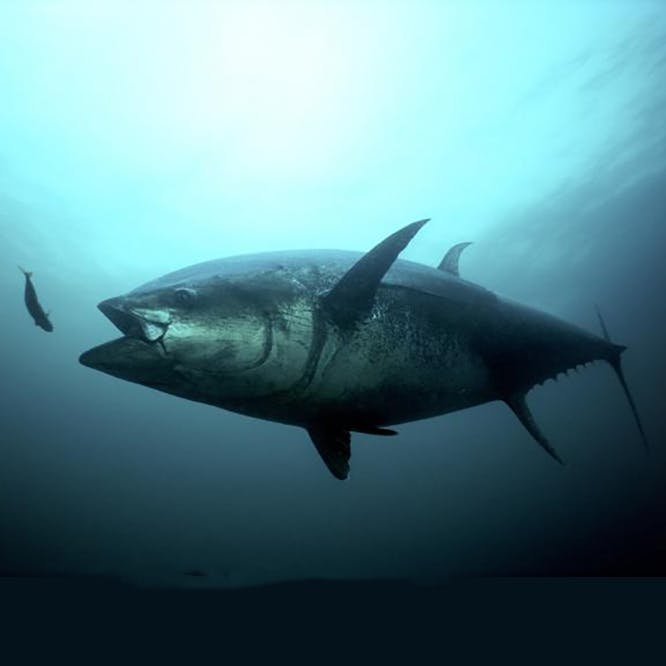
All Aboard the Tuna Rollercoaster! Join the King of Fish for a Wild Ride that Involves Ernest Hemingway and (of course) Jane Fonda
A bluefin tuna can grow to the size of a car, weigh twice as much as a grand piano, swim as fast as a running lion, and keep its muscles at human body temperature even in the ocean's coldest depths. It's also wildly delicious, with a sweet, briny, but meaty taste and a melt-in-your mouth texture that has made it the most expensive fish in the world, with a single bluefin selling for a record-breaking $3 million in 2019. Not bad for a fish that, until recently, New England fishermen used to have to pay to dispose of. This episode, we've got the story of how the king of fish went from the coin of the realm in ancient Byzantium to cat food before bouncing back, in a tale that involves Alexander the Great, Ernest Hemingway, and a couple of Canadian coffin-makers. But popularity has proven a double-edged sword for the bluefin: in the past few decades, it's been fished almost to extinction, while also becoming the poster child for saving the oceans. These days there's big news in tuna world, and, for the first time in years, environmentalists and scientists have hope for the bluefin's future. So is it time to start ordering maguro again at the sushi bar? Learn more about your ad choices. Visit podcastchoices.com/adchoices
All Aboard the Tuna Rollercoaster! Join the King of Fish for a Wild Ride that Involves Ernest Hemingway and (of course) Jane Fonda
A bluefin tuna can grow to the size of a car, weigh twice as much as a grand piano, swim as fast as a running lion, and keep its muscles at human body temperature even in the ocean's coldest depths. It's also wildly delicious, with a sweet, briny, but meaty taste and a melt-in-your mouth texture that has made it the most expensive fish in the world, with a single bluefin selling for a record-breaking $3 million in 2019. Not bad for a fish that, until recently, New England fishermen used to have to pay to dispose of. This episode, we've got the story of how the king of fish went from the coin of the realm in ancient Byzantium to cat food before bouncing back, in a tale that involves Alexander the Great, Ernest Hemingway, and a couple of Canadian coffin-makers. But popularity has proven a double-edged sword for the bluefin: in the past few decades, it's been fished almost to extinction, while also becoming the poster child for saving the oceans. These days there's big news in tuna world, and, for the first time in years, environmentalists and scientists have hope for the bluefin's future. So is it time to start ordering maguro again at the sushi bar? Learn more about your ad choices. Visit podcastchoices.com/adchoices
45:39
5 Sep 23

The Keto Paradox: Fad Diet *and* Life-Saving Medical Treatment
What do some epilepsy patients have in common with tech bros, bodybuilders, and Joe Rogan? The high-fat, carb-shunning diet known as keto, whose history dates back much further than its 2010s rise to fame. In this episode, Gastropod traces how a medical treatment pioneered more than 2,500 years ago was refined in the 1920s to treat seizures. We trace its wild ride in and out of fashion, with cameos from Robert Atkins, the 80s exercise craze, and Meryl Streep. And, of course, we've got the myth-busting science on what ketosis and ketones really are, the dangers of eating this way to lose weight, and the reason this diet can be life-saving—for people with a very specific medical condition. Bust out the butter (but please don't put it in coffee) and join us down the keto rabbit hole. Learn more about your ad choices. Visit podcastchoices.com/adchoices
The Keto Paradox: Fad Diet *and* Life-Saving Medical Treatment
What do some epilepsy patients have in common with tech bros, bodybuilders, and Joe Rogan? The high-fat, carb-shunning diet known as keto, whose history dates back much further than its 2010s rise to fame. In this episode, Gastropod traces how a medical treatment pioneered more than 2,500 years ago was refined in the 1920s to treat seizures. We trace its wild ride in and out of fashion, with cameos from Robert Atkins, the 80s exercise craze, and Meryl Streep. And, of course, we've got the myth-busting science on what ketosis and ketones really are, the dangers of eating this way to lose weight, and the reason this diet can be life-saving—for people with a very specific medical condition. Bust out the butter (but please don't put it in coffee) and join us down the keto rabbit hole. Learn more about your ad choices. Visit podcastchoices.com/adchoices
43:15
22 Aug 23

Secrets of Sourdough (encore)
Today, you can find a huge variety of breads on supermarket shelves, only a few of which are called "sourdough." For most of human history, though, any bread that wasn't flat was sourdough—that is, it was leavened with a wild community of microbes. And yet we know surprisingly little about the microbes responsible for raising sourdough bread, not to mention making it more nutritious and delicious than bread made with commercial yeast. For starters, where do the fungi and bacteria in a sourdough starter come from? Are they in the water or the flour? Do they come from the baker's hands? Or perhaps they're just floating around in the foggy air, as the bakers of San Francisco firmly believe? This episode, Cynthia and Nicky go to Belgium with two researchers, fifteen bakers, and quite a few microbes for a three-day science experiment designed to answer this question once and for all. Listen in for our exclusive scoop on the secrets of sourdough. (encore presentation) Learn more about your ad choices. Visit podcastchoices.com/adchoices
Secrets of Sourdough (encore)
Today, you can find a huge variety of breads on supermarket shelves, only a few of which are called "sourdough." For most of human history, though, any bread that wasn't flat was sourdough—that is, it was leavened with a wild community of microbes. And yet we know surprisingly little about the microbes responsible for raising sourdough bread, not to mention making it more nutritious and delicious than bread made with commercial yeast. For starters, where do the fungi and bacteria in a sourdough starter come from? Are they in the water or the flour? Do they come from the baker's hands? Or perhaps they're just floating around in the foggy air, as the bakers of San Francisco firmly believe? This episode, Cynthia and Nicky go to Belgium with two researchers, fifteen bakers, and quite a few microbes for a three-day science experiment designed to answer this question once and for all. Listen in for our exclusive scoop on the secrets of sourdough. (encore presentation) Learn more about your ad choices. Visit podcastchoices.com/adchoices
48:29
8 Aug 23

Watch It Wiggle: The Jell-O Story (encore)
It's been described as the ultimate status symbol for the wealthy, as the perfect solution for dieters and the sick, and, confusingly, as a liquid trapped in a solid that somehow remains fluid. What could this magical substance be? In case you haven't guessed, this episode, we're talking about Jell-O! Or, to be more precise, jelly—not the seedless kind you spread on toast, but the kind that shimmers on your plate, wiggles and jiggles on your spoon, and melts in your mouth. Jelly's story is as old as cooking itself—it is one that involves spectacular riches and dazzling displays, as well as California's poet laureate and some very curious chemistry. (encore presentation) Learn more about your ad choices. Visit podcastchoices.com/adchoices
Watch It Wiggle: The Jell-O Story (encore)
It's been described as the ultimate status symbol for the wealthy, as the perfect solution for dieters and the sick, and, confusingly, as a liquid trapped in a solid that somehow remains fluid. What could this magical substance be? In case you haven't guessed, this episode, we're talking about Jell-O! Or, to be more precise, jelly—not the seedless kind you spread on toast, but the kind that shimmers on your plate, wiggles and jiggles on your spoon, and melts in your mouth. Jelly's story is as old as cooking itself—it is one that involves spectacular riches and dazzling displays, as well as California's poet laureate and some very curious chemistry. (encore presentation) Learn more about your ad choices. Visit podcastchoices.com/adchoices
49:06
25 Jul 23
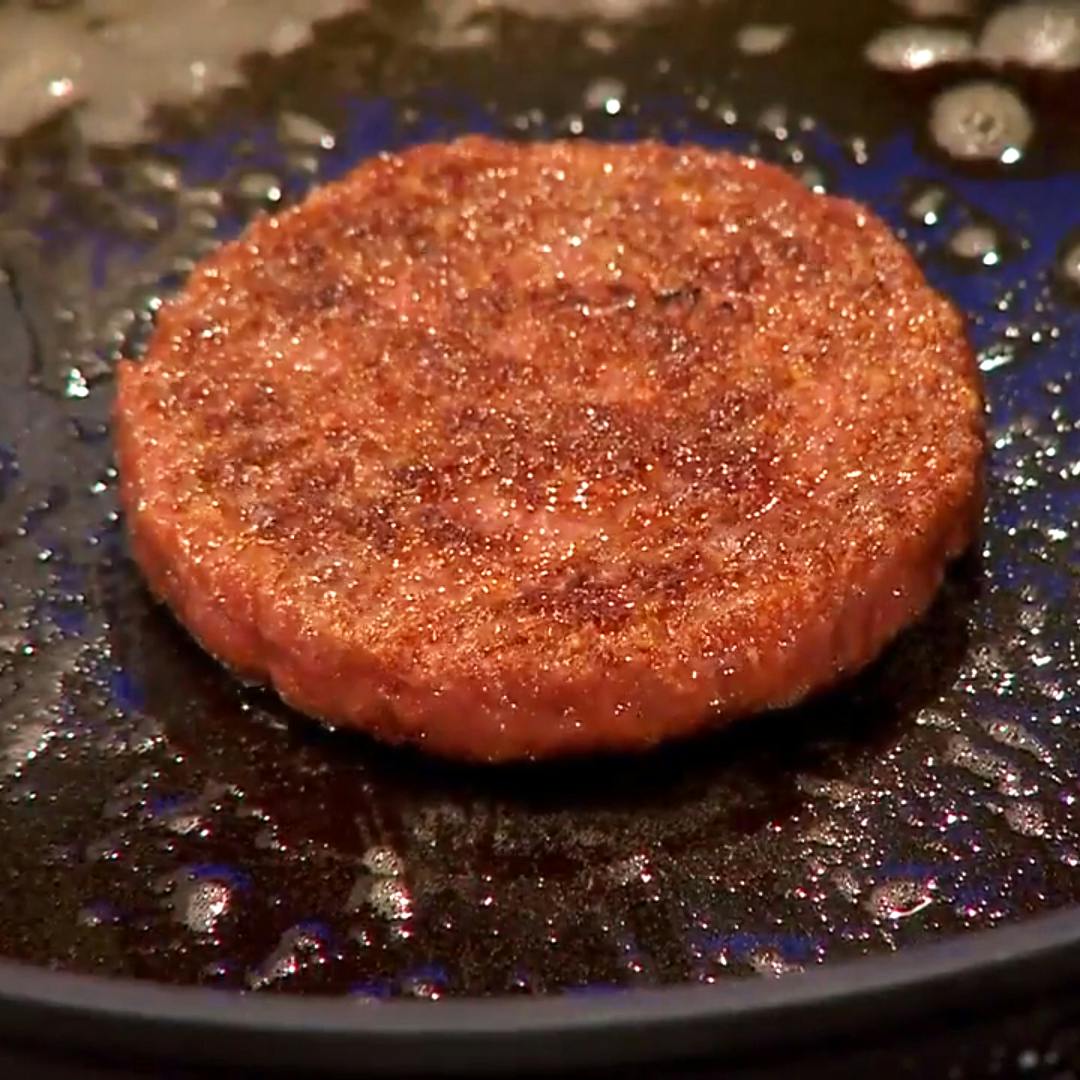
Where's the Beef? Lab-Grown Meat is Finally on the Menu
Can we really have our burger, eat it—and never need to kill a cow? Growing meat outside of animals—in a lab or, these days, in shiny steel bioreactors—promises to deliver a future in which we can enjoy sausages and sushi without guilt, and maybe even without sending our planet up in smoke. For years, it's seemed like science fiction, but it's finally a reality: this month, Americans will get their first chance to buy cultivated meat in a restaurant. But how exactly do you get chicken nuggets, BLTs, and bluefin sashimi from a bunch of cells growing in large metal vats? Does this new cultivated meat taste any good? Can enough be grown to replace industrial meat? And, if so, is this new technology actually an improvement on industrial animal agriculture and fishing? Gastropod is on the case! Join us this episode as we sink our teeth into a whole lot of lab-grown lunches, uncover the science behind the sci-fi, and investigate whether the companies making cultivated meat can actually fulfill the lofty promises they make. Learn more about your ad choices. Visit podcastchoices.com/adchoices
Where's the Beef? Lab-Grown Meat is Finally on the Menu
Can we really have our burger, eat it—and never need to kill a cow? Growing meat outside of animals—in a lab or, these days, in shiny steel bioreactors—promises to deliver a future in which we can enjoy sausages and sushi without guilt, and maybe even without sending our planet up in smoke. For years, it's seemed like science fiction, but it's finally a reality: this month, Americans will get their first chance to buy cultivated meat in a restaurant. But how exactly do you get chicken nuggets, BLTs, and bluefin sashimi from a bunch of cells growing in large metal vats? Does this new cultivated meat taste any good? Can enough be grown to replace industrial meat? And, if so, is this new technology actually an improvement on industrial animal agriculture and fishing? Gastropod is on the case! Join us this episode as we sink our teeth into a whole lot of lab-grown lunches, uncover the science behind the sci-fi, and investigate whether the companies making cultivated meat can actually fulfill the lofty promises they make. Learn more about your ad choices. Visit podcastchoices.com/adchoices
54:51
11 Jul 23

The Incredible Egg (encore)
We love eggs scrambled, fried, or poached; we couldn't enjoy a quiche, meringue, or flan without them. But for scientists and archaeologists, these perfect packages are a source of both wonder and curiosity. Why do eggs come in such a spectacular variety of colors, shapes, and sizes? Why are we stuck mostly eating chicken eggs, when our ancestors feasted on emu, ostrich, and guillemot eggs? This episode, we explore the science and history of eggs, from dinosaurs to double-yolkers! (encore episode) Learn more about your ad choices. Visit podcastchoices.com/adchoices
The Incredible Egg (encore)
We love eggs scrambled, fried, or poached; we couldn't enjoy a quiche, meringue, or flan without them. But for scientists and archaeologists, these perfect packages are a source of both wonder and curiosity. Why do eggs come in such a spectacular variety of colors, shapes, and sizes? Why are we stuck mostly eating chicken eggs, when our ancestors feasted on emu, ostrich, and guillemot eggs? This episode, we explore the science and history of eggs, from dinosaurs to double-yolkers! (encore episode) Learn more about your ad choices. Visit podcastchoices.com/adchoices
44:56
27 Jun 23

Good Shit: How Humanure Could Save Agriculture—and the Planet
For most of us, when we sit on the porcelain throne to drop the deuce, priority number one is flushing and never having to think about it again. But it might be time to rethink our stink: all around the world, people are talking about using human waste for good, applying it as fertilizer to grow our food instead of just washing it down the miles of pipes that undergird urban sewage systems. "Ew" is a common response, along with "yuck!" Is using poop to grow food a good idea—or even safe? We’re getting our shit together to find out! On this episode of Gastropod, how human waste went from being so valuable you could go to jail for stealing it, to causing such a stench it shut down Parliament in Victorian London and led to the invention of the modern sewage system—and why figuring out how to start saving our poop (and pee!) once again could give us cleaner energy, healthier waterways, and lots of delicious food. Listen in now: if you like to eat, it's time to start giving a crap about your crap. Learn more about your ad choices. Visit podcastchoices.com/adchoices
Good Shit: How Humanure Could Save Agriculture—and the Planet
For most of us, when we sit on the porcelain throne to drop the deuce, priority number one is flushing and never having to think about it again. But it might be time to rethink our stink: all around the world, people are talking about using human waste for good, applying it as fertilizer to grow our food instead of just washing it down the miles of pipes that undergird urban sewage systems. "Ew" is a common response, along with "yuck!" Is using poop to grow food a good idea—or even safe? We’re getting our shit together to find out! On this episode of Gastropod, how human waste went from being so valuable you could go to jail for stealing it, to causing such a stench it shut down Parliament in Victorian London and led to the invention of the modern sewage system—and why figuring out how to start saving our poop (and pee!) once again could give us cleaner energy, healthier waterways, and lots of delicious food. Listen in now: if you like to eat, it's time to start giving a crap about your crap. Learn more about your ad choices. Visit podcastchoices.com/adchoices
51:03
20 Jun 23

Gettin' Fizzy With It (Encore)
'Tis the season for a refreshing glass of bubbly—but this episode we're not talking wine, we're talking seltzer. America is in the throes of a serious seltzer craze, with consumption of the bubbly stuff doubling in only a decade, from 2004 to 2014. But where does seltzer come from, and why is it called "seltzer," rather than simply "sparkling water"? Is there any truth to the rumors that seltzer can combat indigestion—or that it will rot our teeth? Why are all the hipsters crushing cans of LaCroix, and what's the story behind Polar's ephemeral sensation, Unicorn Kisses? (Encore presentation) Learn more about your ad choices. Visit podcastchoices.com/adchoices
Gettin' Fizzy With It (Encore)
'Tis the season for a refreshing glass of bubbly—but this episode we're not talking wine, we're talking seltzer. America is in the throes of a serious seltzer craze, with consumption of the bubbly stuff doubling in only a decade, from 2004 to 2014. But where does seltzer come from, and why is it called "seltzer," rather than simply "sparkling water"? Is there any truth to the rumors that seltzer can combat indigestion—or that it will rot our teeth? Why are all the hipsters crushing cans of LaCroix, and what's the story behind Polar's ephemeral sensation, Unicorn Kisses? (Encore presentation) Learn more about your ad choices. Visit podcastchoices.com/adchoices
40:35
13 Jun 23
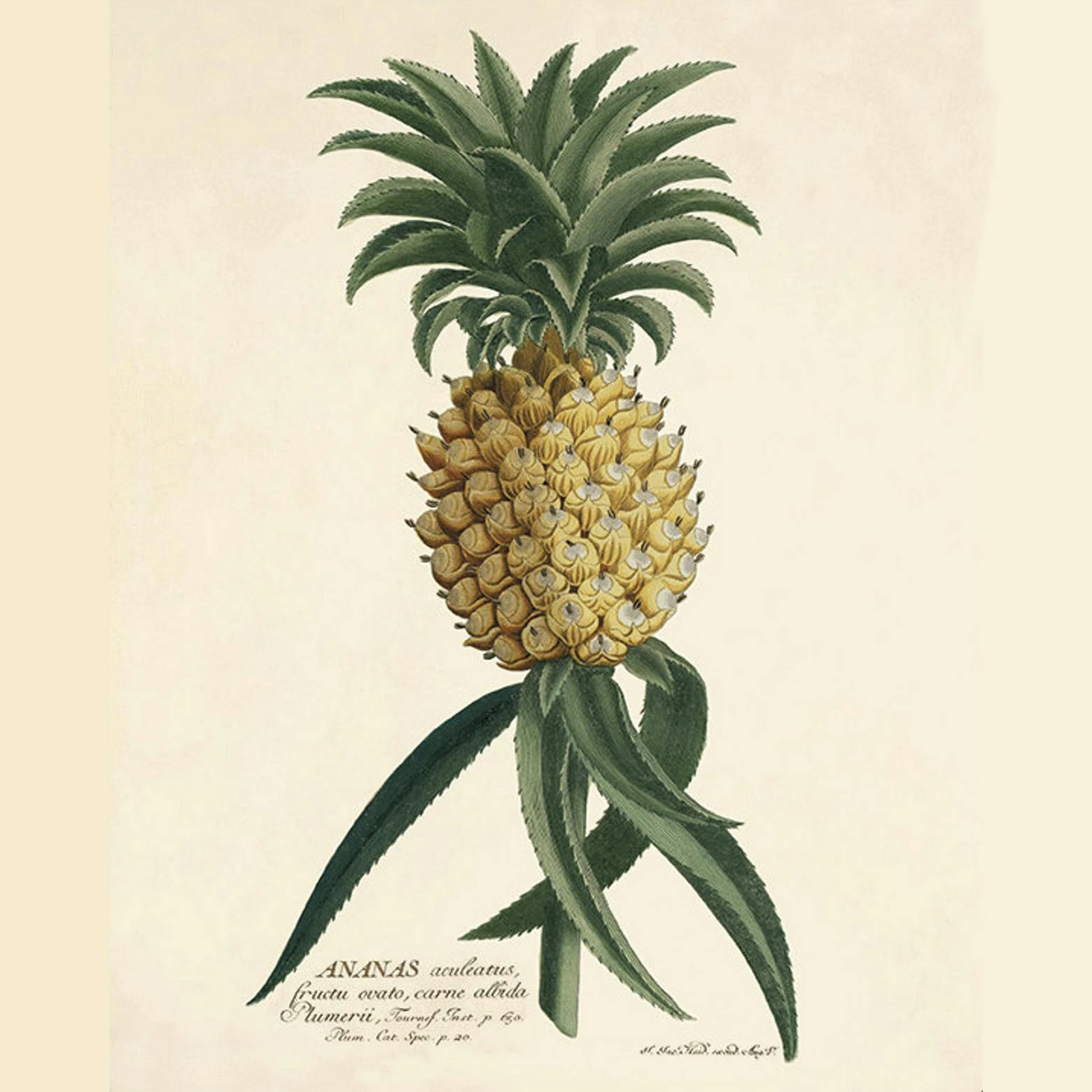
Who's Eating Who: Pineapples and You
What was the hottest accessory for late 1600s European dining rooms? The pineapple! Explorers had recently brought this spiky tropical fruit over from the Americas, and in short order it became the Gucci purse of its day—so exciting and desirable that it not only commanded big bucks, but led to a sort of gardening arms race to figure out how they might be grown in chilly northern Europe. In this episode, we get to the core of how this "king of fruit" inspired obsession and invention—plus, we head back to Hawai'i to learn how it transformed the islands, and, in the process, was itself transformed from an exotic rarity to a pantry-staple topping for pizza and cottage cheese. If you like piña coladas and fruits that can dissolve your skin, join us for all of the juicy details! Learn more about your ad choices. Visit podcastchoices.com/adchoices
Who's Eating Who: Pineapples and You
What was the hottest accessory for late 1600s European dining rooms? The pineapple! Explorers had recently brought this spiky tropical fruit over from the Americas, and in short order it became the Gucci purse of its day—so exciting and desirable that it not only commanded big bucks, but led to a sort of gardening arms race to figure out how they might be grown in chilly northern Europe. In this episode, we get to the core of how this "king of fruit" inspired obsession and invention—plus, we head back to Hawai'i to learn how it transformed the islands, and, in the process, was itself transformed from an exotic rarity to a pantry-staple topping for pizza and cottage cheese. If you like piña coladas and fruits that can dissolve your skin, join us for all of the juicy details! Learn more about your ad choices. Visit podcastchoices.com/adchoices
39:39
6 Jun 23
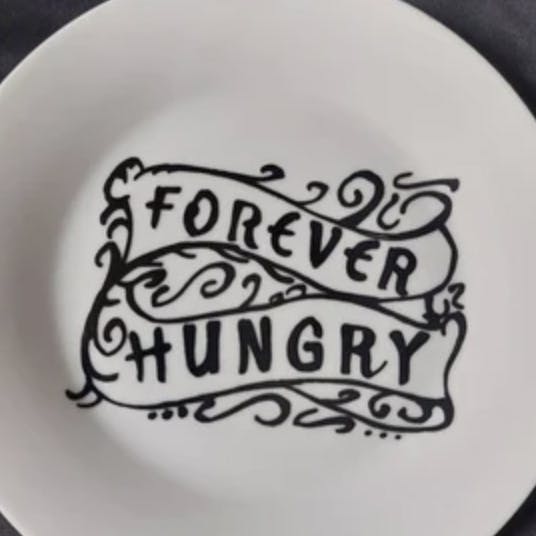
You've Lost That Hungry Feeling
Whether it's via TikTok or the morning news, you’ve probably heard the recent hype (and hand-wringing) about new prescription weight-loss medications with names like Ozempic, Wegovy, and Mounjaro. These drugs were originally developed to treat diabetes, but, in some patients, they've had a surprising side effect: they seem to silence feelings of hunger, leading to significant weight loss. This episode, Gastropod goes behind the headlines to ask: What is hunger, anyway? And what do we know about how to switch it on or off? Join us for a story that involves lizard saliva, synthesizer shopping, and a disorder that can lead people to eat until their stomachs burst, as we explore these universal feelings—hunger and fullness—that shape our lives, and bookend every meal. Learn more about your ad choices. Visit podcastchoices.com/adchoices
You've Lost That Hungry Feeling
Whether it's via TikTok or the morning news, you’ve probably heard the recent hype (and hand-wringing) about new prescription weight-loss medications with names like Ozempic, Wegovy, and Mounjaro. These drugs were originally developed to treat diabetes, but, in some patients, they've had a surprising side effect: they seem to silence feelings of hunger, leading to significant weight loss. This episode, Gastropod goes behind the headlines to ask: What is hunger, anyway? And what do we know about how to switch it on or off? Join us for a story that involves lizard saliva, synthesizer shopping, and a disorder that can lead people to eat until their stomachs burst, as we explore these universal feelings—hunger and fullness—that shape our lives, and bookend every meal. Learn more about your ad choices. Visit podcastchoices.com/adchoices
55:22
23 May 23
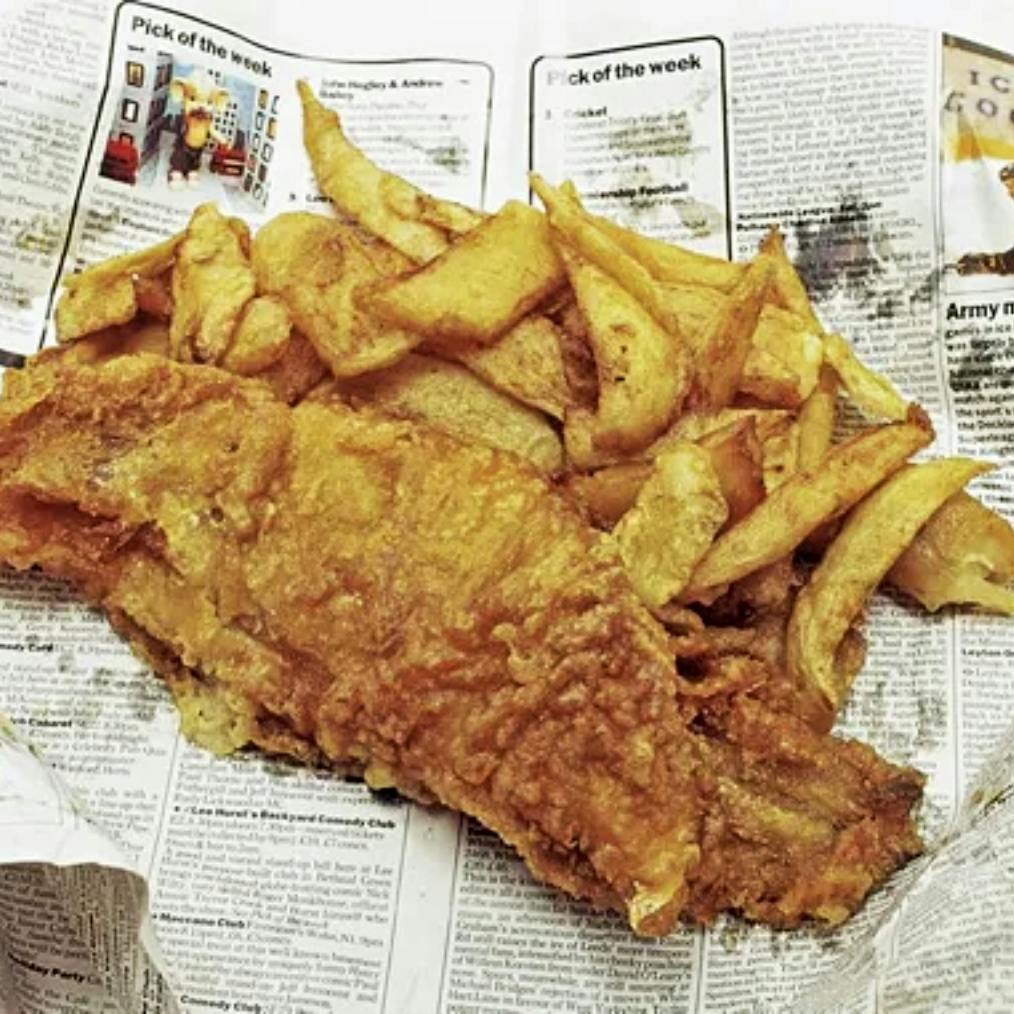
Fish & Chips: Uncovering the Forgotten Jewish and Belgian Origins of the Iconic British Dish
Fish & chips: a golden hunk of battered cod, accompanied by thick-cut French fries, lightly sprinkled with malt vinegar, and wrapped up in a newspaper.... It's as British as cricket, cream teas, the class system, and colonialism, but it's actually the relatively recent marriage of a Jewish fish-frying tradition and a Franco-Belgian potato snack. What's more, in something of a twist, the fish itself—cod, a burly bottom-feeder with tender, flaky white flesh—ended up helping fuel U.S. independence. This episode, we're telling the peculiar story of how two non-British foods became such a quintessentially British dish—and how our appetites transformed international relations, as well as an entire ocean ecosystem. Learn more about your ad choices. Visit podcastchoices.com/adchoices
Fish & Chips: Uncovering the Forgotten Jewish and Belgian Origins of the Iconic British Dish
Fish & chips: a golden hunk of battered cod, accompanied by thick-cut French fries, lightly sprinkled with malt vinegar, and wrapped up in a newspaper.... It's as British as cricket, cream teas, the class system, and colonialism, but it's actually the relatively recent marriage of a Jewish fish-frying tradition and a Franco-Belgian potato snack. What's more, in something of a twist, the fish itself—cod, a burly bottom-feeder with tender, flaky white flesh—ended up helping fuel U.S. independence. This episode, we're telling the peculiar story of how two non-British foods became such a quintessentially British dish—and how our appetites transformed international relations, as well as an entire ocean ecosystem. Learn more about your ad choices. Visit podcastchoices.com/adchoices
44:28
9 May 23
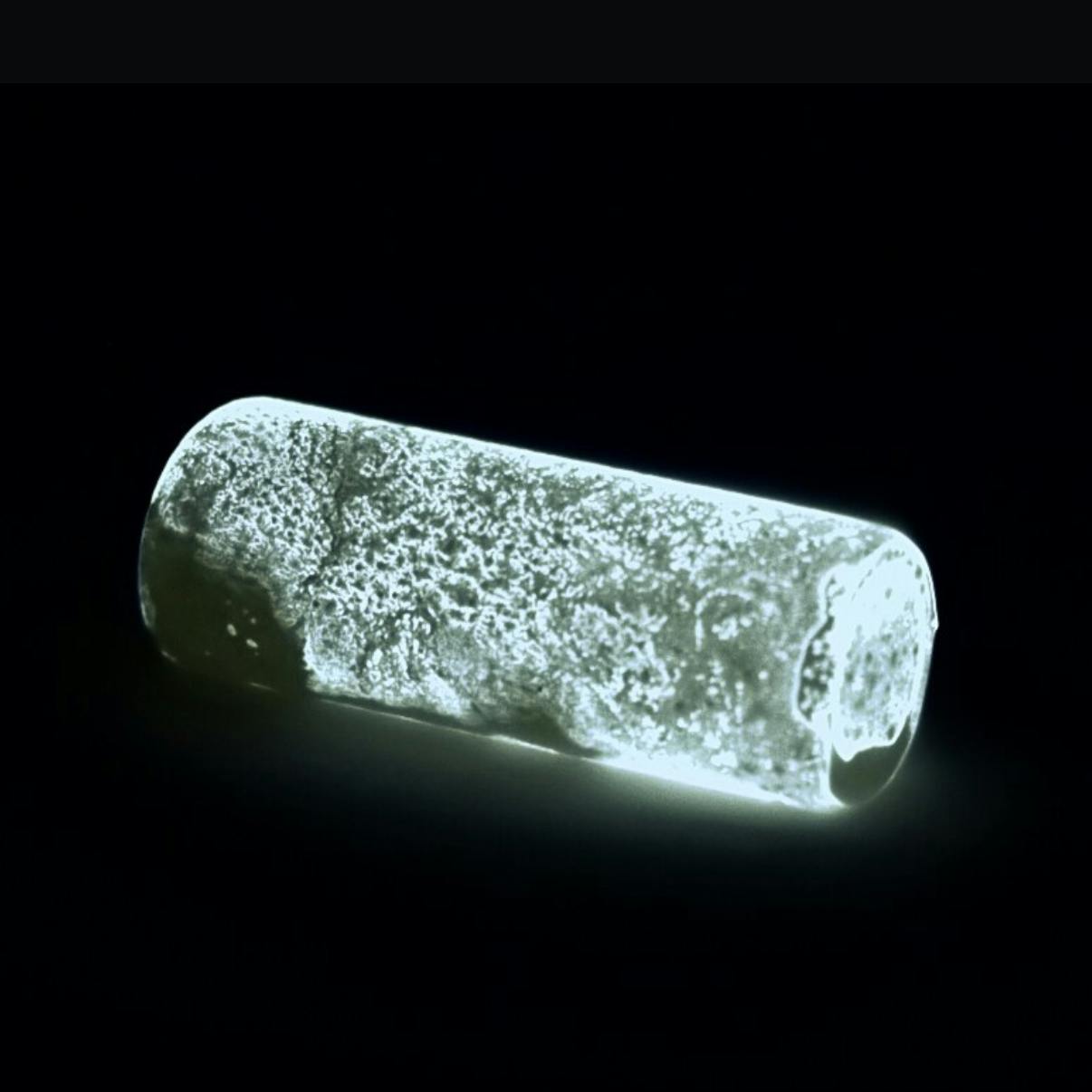
What Connects Bones, Bird Poop, and Toxic Green Slime? Hint: Without It, Half of Us Wouldn't Be Alive Today
It’s the 13th element on the periodic table, it glows in the dark, and it spontaneously combusts if it gets any hotter than 80 degrees Fahrenheit; little surprise, then, that phosphorus is known as “the devil’s element.” But this satanic substance is also essential to all life on earth, which is why it's a key ingredient in fertilizer—without which, researchers estimate, we could only grow enough food for half as many humans as are alive today. The incredible crop-growing powers of phosphorus have led humans to do some pretty extreme things to get it—from seizing Pacific islands to scavenging bones from Europe’s most famous battlefields—but they’ve also created a devilish paradox. The world is running out of phosphorus, and yet there’s way too much of it running off farm fields into rivers, lakes, and oceans, where it fuels toxic algae blooms. This episode, we've got the story behind the phosphorus paradox, as we ask: is there any way to fertilize the planet without sending it to hell? Learn more about your ad choices. Visit podcastchoices.com/adchoices
What Connects Bones, Bird Poop, and Toxic Green Slime? Hint: Without It, Half of Us Wouldn't Be Alive Today
It’s the 13th element on the periodic table, it glows in the dark, and it spontaneously combusts if it gets any hotter than 80 degrees Fahrenheit; little surprise, then, that phosphorus is known as “the devil’s element.” But this satanic substance is also essential to all life on earth, which is why it's a key ingredient in fertilizer—without which, researchers estimate, we could only grow enough food for half as many humans as are alive today. The incredible crop-growing powers of phosphorus have led humans to do some pretty extreme things to get it—from seizing Pacific islands to scavenging bones from Europe’s most famous battlefields—but they’ve also created a devilish paradox. The world is running out of phosphorus, and yet there’s way too much of it running off farm fields into rivers, lakes, and oceans, where it fuels toxic algae blooms. This episode, we've got the story behind the phosphorus paradox, as we ask: is there any way to fertilize the planet without sending it to hell? Learn more about your ad choices. Visit podcastchoices.com/adchoices
46:18
25 Apr 23
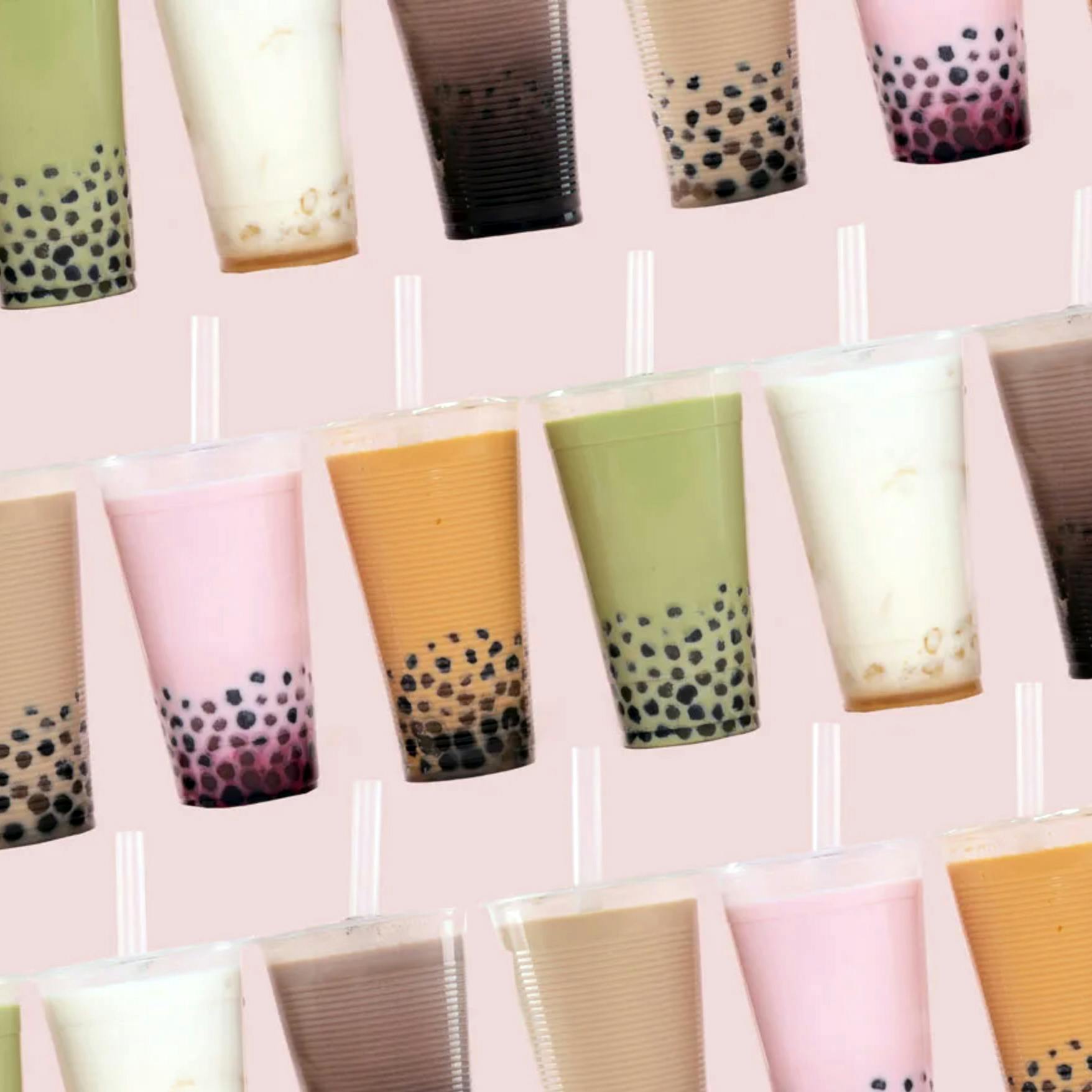
All the Feels: How Texture Makes Taste
The squish of bananas, the squeak of mushrooms, the pop of a grape: for some people, these textures are a delight—but for others, they’re a total nightmare. Texture plays a huge role in how we experience food, and yet it’s kind of a scientific conundrum. Why do people—and entire cultures—experience the feeling of food differently, and what’s going on in our mouths when we do? To find out, we talk to scientists who've experimented with tooth-mounted microphones, tongue twists modeled after pro swimmers, and all-you-can-eat buffets. Plus, we go on a New York City Q adventure (mochi doughnuts and boba tea!), and hear from lots of you listeners about the feelings that make you squirm and swoon. Join us this episode and get up in your mouthfeels. Learn more about your ad choices. Visit podcastchoices.com/adchoices
All the Feels: How Texture Makes Taste
The squish of bananas, the squeak of mushrooms, the pop of a grape: for some people, these textures are a delight—but for others, they’re a total nightmare. Texture plays a huge role in how we experience food, and yet it’s kind of a scientific conundrum. Why do people—and entire cultures—experience the feeling of food differently, and what’s going on in our mouths when we do? To find out, we talk to scientists who've experimented with tooth-mounted microphones, tongue twists modeled after pro swimmers, and all-you-can-eat buffets. Plus, we go on a New York City Q adventure (mochi doughnuts and boba tea!), and hear from lots of you listeners about the feelings that make you squirm and swoon. Join us this episode and get up in your mouthfeels. Learn more about your ad choices. Visit podcastchoices.com/adchoices
52:07
11 Apr 23
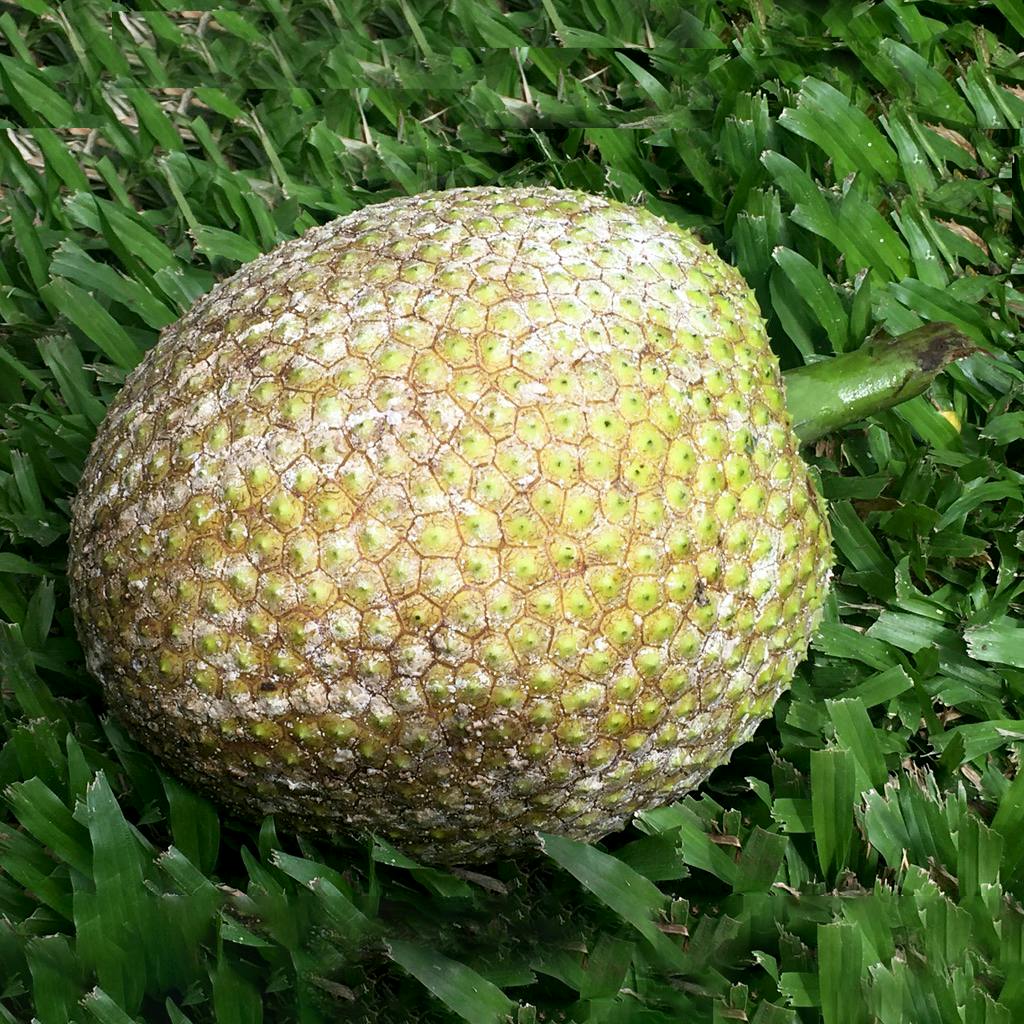
The Fruit that Could Save the World
Can bread really grow on trees? This episode, meet the all-star, super productive, low-maintenance, gluten-free carbohydrate of the future. Did we mention it's also delicious? How can one fruit—that's also a vegetable and a staple starch—become chips, crackers, and cheesecake, while also serving as the perfect platform for sour cream and cheese when baked like a potato? And, if it's so great, why in the world did the mutineers on HMS Bounty throw its seedlings overboard? Today, believers say this one tree could be a potential solution to climate change, deforestation, food insecurity, and world hunger. Join us as we taste this wonder fruit for ourselves, and find out whether the hype is real. Can breadfruit really help save the world? Learn more about your ad choices. Visit podcastchoices.com/adchoices
The Fruit that Could Save the World
Can bread really grow on trees? This episode, meet the all-star, super productive, low-maintenance, gluten-free carbohydrate of the future. Did we mention it's also delicious? How can one fruit—that's also a vegetable and a staple starch—become chips, crackers, and cheesecake, while also serving as the perfect platform for sour cream and cheese when baked like a potato? And, if it's so great, why in the world did the mutineers on HMS Bounty throw its seedlings overboard? Today, believers say this one tree could be a potential solution to climate change, deforestation, food insecurity, and world hunger. Join us as we taste this wonder fruit for ourselves, and find out whether the hype is real. Can breadfruit really help save the world? Learn more about your ad choices. Visit podcastchoices.com/adchoices
38:58
28 Mar 23
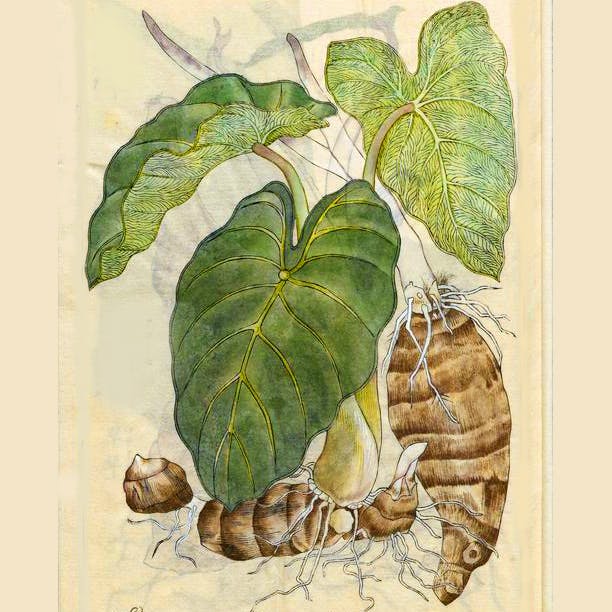
Meet Taro, the Poke Bowl's Missing Secret Ingredient
When Polynesians first arrived in Hawai'i some 1,500 years ago, they found islands that were lush, beautiful...and nearly devoid of anything to eat. Luckily, those sailors had packed a very special snack for their 2,500-mile voyage: a starchy, carbohydrate-rich root called taro, which ended up becoming as essential to the isolated Pacific archipelago as rice or wheat elsewhere. It was the original partner to cubed fish in Hawai'i's traditional poke bowl—which today has become super popular (minus the taro) around the world. Join us on a tropical adventure as we discover why this revered plant nearly died out on Hawai'i, even as it popped up in chip form at Whole Foods, and what it might take to bring it back. Learn more about your ad choices. Visit podcastchoices.com/adchoices
Meet Taro, the Poke Bowl's Missing Secret Ingredient
When Polynesians first arrived in Hawai'i some 1,500 years ago, they found islands that were lush, beautiful...and nearly devoid of anything to eat. Luckily, those sailors had packed a very special snack for their 2,500-mile voyage: a starchy, carbohydrate-rich root called taro, which ended up becoming as essential to the isolated Pacific archipelago as rice or wheat elsewhere. It was the original partner to cubed fish in Hawai'i's traditional poke bowl—which today has become super popular (minus the taro) around the world. Join us on a tropical adventure as we discover why this revered plant nearly died out on Hawai'i, even as it popped up in chip form at Whole Foods, and what it might take to bring it back. Learn more about your ad choices. Visit podcastchoices.com/adchoices
42:32
14 Mar 23

Always Coca-Cola: Coca, Kola, and the *Real* Secret Formula
Coca-Cola's red and white logo is so iconic that supposedly nine out of every ten people on Earth know it on sight. Nearly two billion servings of Coke are sold a day, enough for one out of every four people on the planet. Yet while a glimpse of a billboard or bottle might start you humming one of their catchy jingles, this legendary brand was actually created by a morphine-addicted, down-on-his-luck pharmacist desperate for a big break. In fact, the first Coca-Cola product was actually a knockoff of the Pope's favorite drink, a concoction featuring red wine and cocaine. So how did Coke transcend its dubious origins to become one of the world’s biggest companies, not to mention a globally recognized symbol of all things American? It’s a story that involves Sigmund Freud, US military assistance, international drug treaty loopholes, and a New Jersey facility that extracts and burns piles of cocaine (yes, really, cocaine!) just miles from Manhattan. Gastropod’s here with Coca-Cola’s real secret formula for success, and we didn’t even need to break into their vault to get it. Learn more about your ad choices. Visit podcastchoices.com/adchoices
Always Coca-Cola: Coca, Kola, and the *Real* Secret Formula
Coca-Cola's red and white logo is so iconic that supposedly nine out of every ten people on Earth know it on sight. Nearly two billion servings of Coke are sold a day, enough for one out of every four people on the planet. Yet while a glimpse of a billboard or bottle might start you humming one of their catchy jingles, this legendary brand was actually created by a morphine-addicted, down-on-his-luck pharmacist desperate for a big break. In fact, the first Coca-Cola product was actually a knockoff of the Pope's favorite drink, a concoction featuring red wine and cocaine. So how did Coke transcend its dubious origins to become one of the world’s biggest companies, not to mention a globally recognized symbol of all things American? It’s a story that involves Sigmund Freud, US military assistance, international drug treaty loopholes, and a New Jersey facility that extracts and burns piles of cocaine (yes, really, cocaine!) just miles from Manhattan. Gastropod’s here with Coca-Cola’s real secret formula for success, and we didn’t even need to break into their vault to get it. Learn more about your ad choices. Visit podcastchoices.com/adchoices
48:40
28 Feb 23
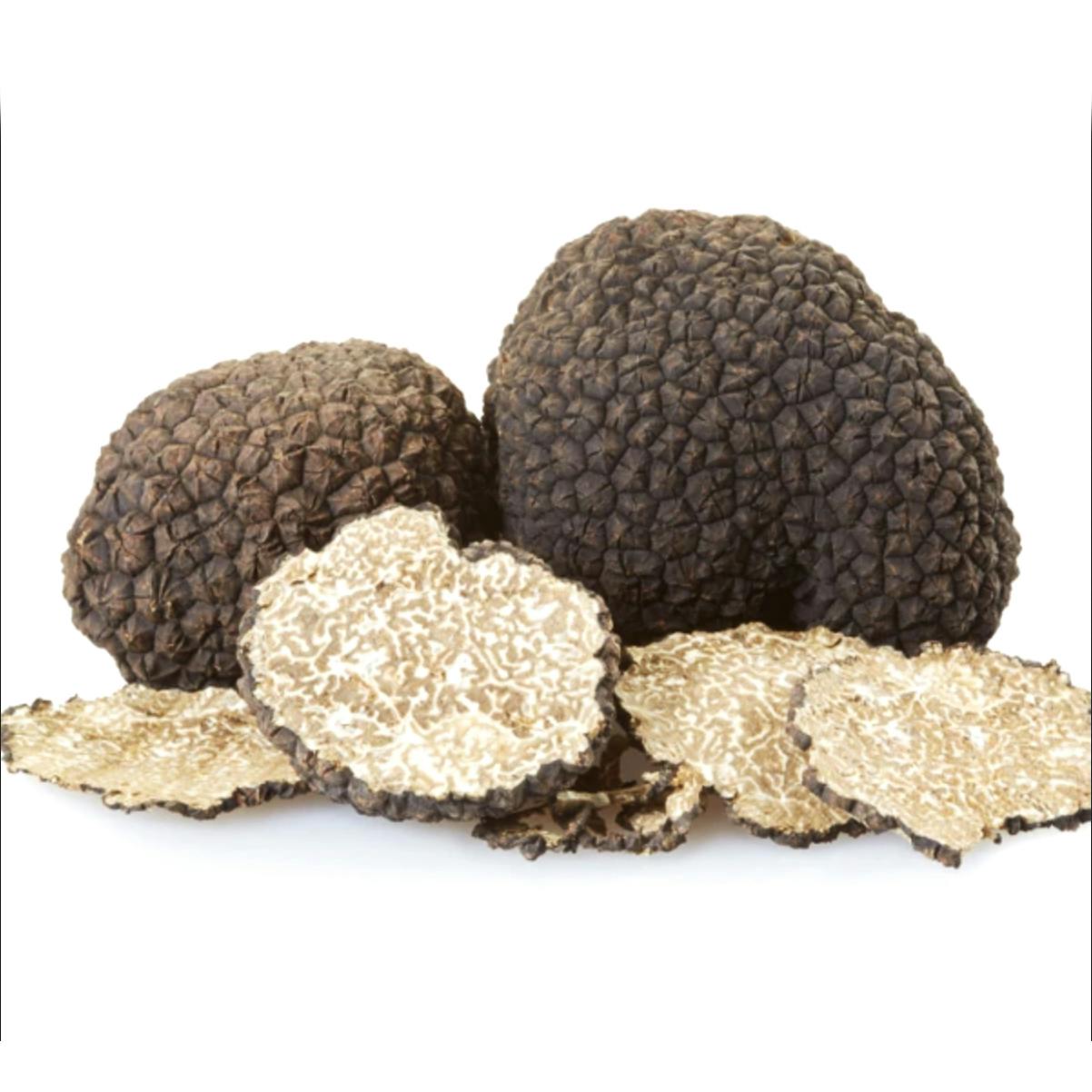
Here Comes Truffle
This episode, join us on a hunt for buried treasure at a super-secret location in North Carolina. We follow a million-dollar dog wearing adorable slippers, and then get down on our knees, butts in the air and noses in the dirt, on the trail of a fungus that drives both pigs and people wild. The smell's been described many different ways—cheesy, earthy, garlicky, even sweaty—but there’s only one thing in nature that can make it: truffles. So, how did this knobbly, brown, potato-shaped fungus come to be one of the world's most expensive foods—and is there any science behind its reputation as an aphrodisiac? Listen in this episode as we get down and dirty hunting truffles, exposing truffle fraud, and getting the scoop on one of the world's oldest and most equal partnerships. Just what you wanted for Valentine’s Day! Learn more about your ad choices. Visit podcastchoices.com/adchoices
Here Comes Truffle
This episode, join us on a hunt for buried treasure at a super-secret location in North Carolina. We follow a million-dollar dog wearing adorable slippers, and then get down on our knees, butts in the air and noses in the dirt, on the trail of a fungus that drives both pigs and people wild. The smell's been described many different ways—cheesy, earthy, garlicky, even sweaty—but there’s only one thing in nature that can make it: truffles. So, how did this knobbly, brown, potato-shaped fungus come to be one of the world's most expensive foods—and is there any science behind its reputation as an aphrodisiac? Listen in this episode as we get down and dirty hunting truffles, exposing truffle fraud, and getting the scoop on one of the world's oldest and most equal partnerships. Just what you wanted for Valentine’s Day! Learn more about your ad choices. Visit podcastchoices.com/adchoices
51:09
14 Feb 23

Museums and the Mafia: The Secret History of Citrus (encore)
A slice of lime in your cocktail, a lunchbox clementine, or a glass of OJ at breakfast: citrus is so common today that most of us have at least one lurking on the kitchen counter or in the back of the fridge. But don't be fooled: not only were these fruits so precious that they inspired both museums and the Mafia, they are also under attack by an incurable immune disease that is decimating citrus harvests around the world. Join us on a historical and scientific adventure, starting with a visit to the ark of citrus—a magical grove in California that contains hundreds of varieties you've never heard of, from the rose-scented yellow goo of a bael fruit to the Pop Rocks-sensation of a caviar lime. You'll see that lemon you're about to squeeze in a whole new light. (This is an encore presentation.) Learn more about your ad choices. Visit podcastchoices.com/adchoices
Museums and the Mafia: The Secret History of Citrus (encore)
A slice of lime in your cocktail, a lunchbox clementine, or a glass of OJ at breakfast: citrus is so common today that most of us have at least one lurking on the kitchen counter or in the back of the fridge. But don't be fooled: not only were these fruits so precious that they inspired both museums and the Mafia, they are also under attack by an incurable immune disease that is decimating citrus harvests around the world. Join us on a historical and scientific adventure, starting with a visit to the ark of citrus—a magical grove in California that contains hundreds of varieties you've never heard of, from the rose-scented yellow goo of a bael fruit to the Pop Rocks-sensation of a caviar lime. You'll see that lemon you're about to squeeze in a whole new light. (This is an encore presentation.) Learn more about your ad choices. Visit podcastchoices.com/adchoices
42:41
31 Jan 23
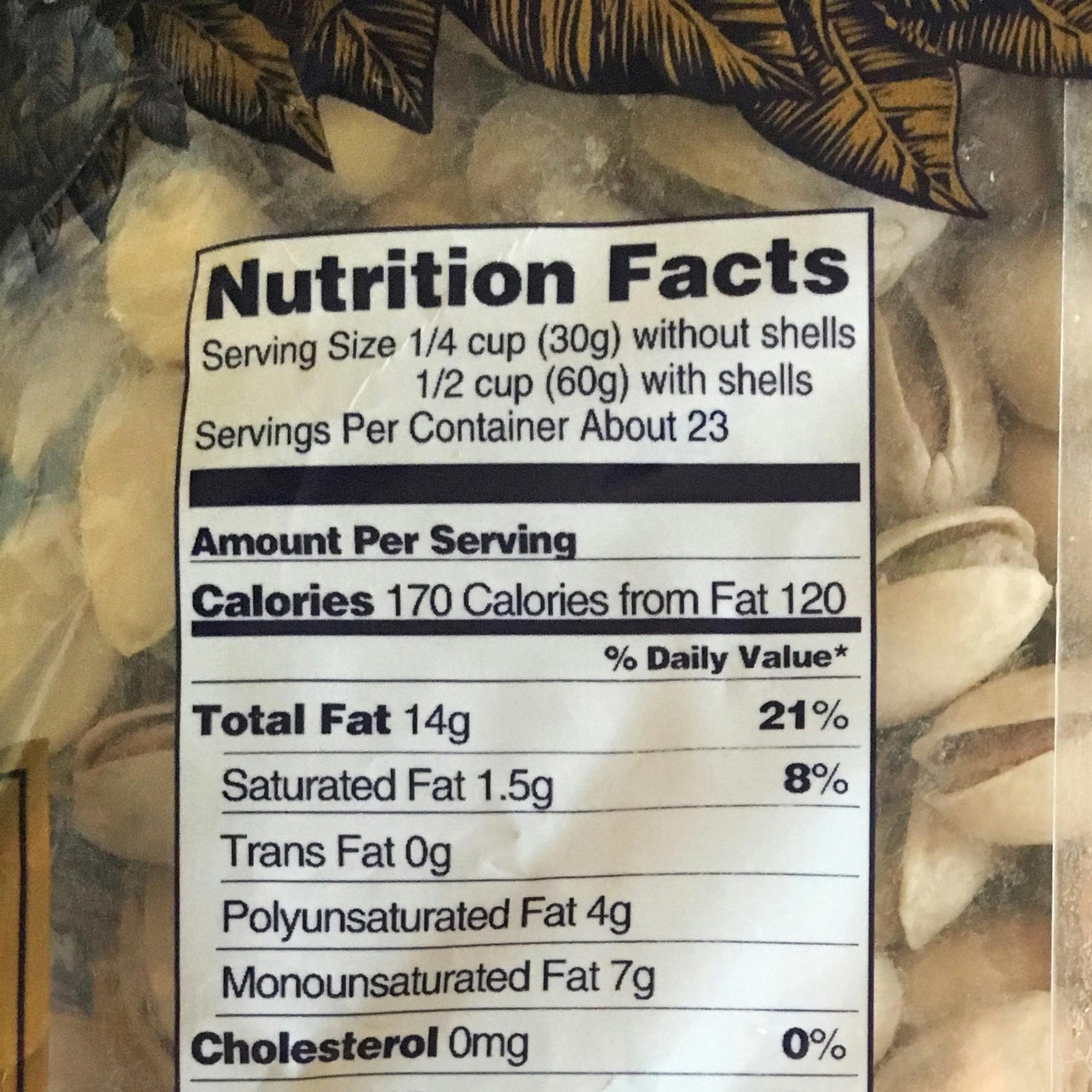
The End of the Calorie (encore)
For most of us, the calorie is just a number on the back of the packet or on the display at the gym. But what is it, exactly? And how did we end up with this one unit with which to measure our food? Is a calorie the same no matter what type of food it comes from? And is one calorie for you exactly the same as one calorie for me? To find out, we visit the special rooms scientists use to measure how many calories we burn, and the labs where researchers are discovering that the calorie is broken. And we pose the question: If not the calorie, then what? (This is an encore presentation.) Learn more about your ad choices. Visit podcastchoices.com/adchoices
The End of the Calorie (encore)
For most of us, the calorie is just a number on the back of the packet or on the display at the gym. But what is it, exactly? And how did we end up with this one unit with which to measure our food? Is a calorie the same no matter what type of food it comes from? And is one calorie for you exactly the same as one calorie for me? To find out, we visit the special rooms scientists use to measure how many calories we burn, and the labs where researchers are discovering that the calorie is broken. And we pose the question: If not the calorie, then what? (This is an encore presentation.) Learn more about your ad choices. Visit podcastchoices.com/adchoices
48:01
17 Jan 23

Champagne Wishes: The Tastes of Celebration
We pop it at weddings and pour it for the holidays, gift it to congratulate and sip it to celebrate—but, if we're being honest, Gastropod will seize any occasion to drink champagne. In the second episode of our two-part miniseries on the tastes of celebration, we tell the story of how this sparkling wine went from an unwelcome accident—winemakers considered fizz a flaw!—to a global brand associated with quality, luxury, celebrity, and, above all, fun. Along the way, we explore the science behind the bubbles, get to the bottom of the difference between prosecco, pét-nat, and Perrier-Jouët, and tell the stories of the original Dom Perignon and Veuve Cliquot. Join us now for all that, plus the answer to the question we all secretly wonder: Is champagne really worth the big bucks? Cheers! Learn more about your ad choices. Visit podcastchoices.com/adchoices
Champagne Wishes: The Tastes of Celebration
We pop it at weddings and pour it for the holidays, gift it to congratulate and sip it to celebrate—but, if we're being honest, Gastropod will seize any occasion to drink champagne. In the second episode of our two-part miniseries on the tastes of celebration, we tell the story of how this sparkling wine went from an unwelcome accident—winemakers considered fizz a flaw!—to a global brand associated with quality, luxury, celebrity, and, above all, fun. Along the way, we explore the science behind the bubbles, get to the bottom of the difference between prosecco, pét-nat, and Perrier-Jouët, and tell the stories of the original Dom Perignon and Veuve Cliquot. Join us now for all that, plus the answer to the question we all secretly wonder: Is champagne really worth the big bucks? Cheers! Learn more about your ad choices. Visit podcastchoices.com/adchoices
50:23
20 Dec 22
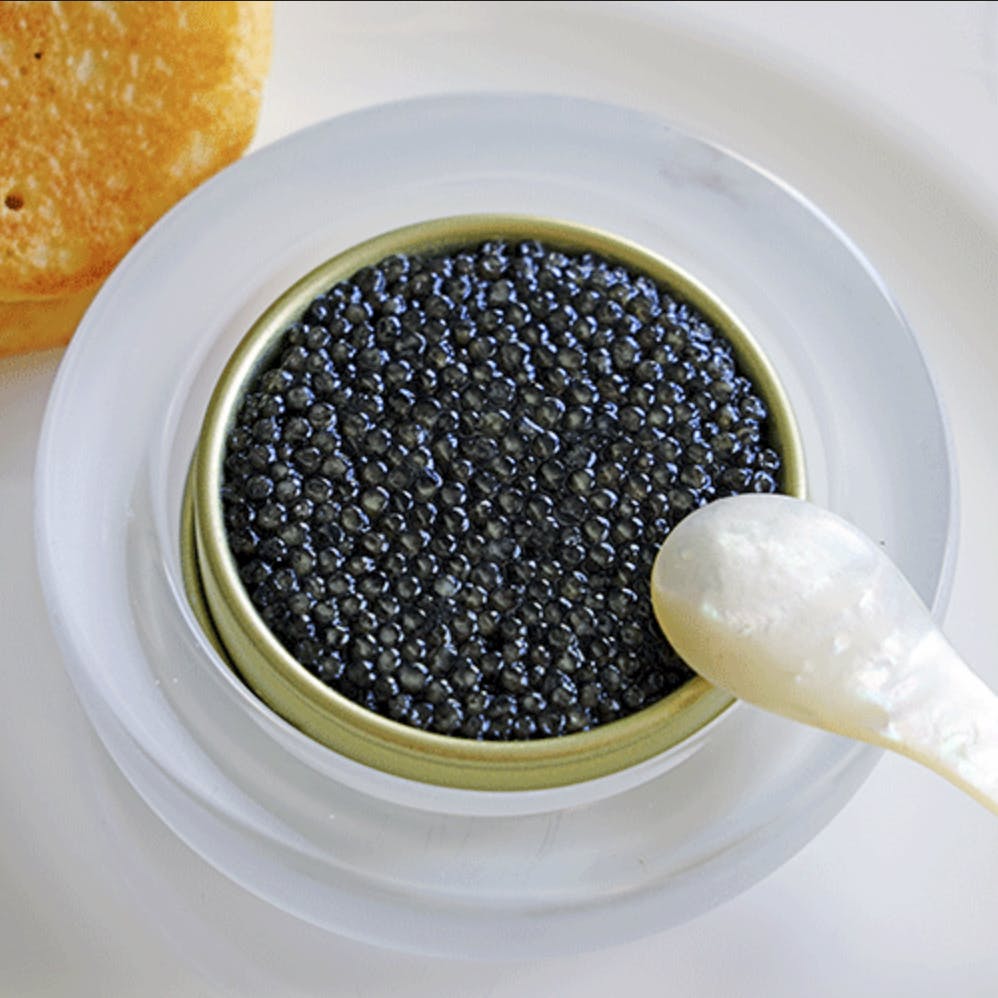
Caviar Dreams: The Tastes of Celebration
Yachts, private jets, caviar, champagne—all standard ingredients in the lifestyles of the rich and famous. But, every so often, at parties and special occasions, we mere mortals get to live large and enjoy fancy fish eggs and fizz, too. In this first episode of our two-part miniseries on the foods of celebration, Gastropod explores how something that Russian peasants ate as a form of religious penance became one of the world's most expensive foods. Join us this holiday season as we get up close and personal with the source of caviar by giving a sturgeon an ultrasound, and tell the story of the long-lost town of Caviar, New Jersey. Get out your mother-of-pearl spoon and dive in! Learn more about your ad choices. Visit podcastchoices.com/adchoices
Caviar Dreams: The Tastes of Celebration
Yachts, private jets, caviar, champagne—all standard ingredients in the lifestyles of the rich and famous. But, every so often, at parties and special occasions, we mere mortals get to live large and enjoy fancy fish eggs and fizz, too. In this first episode of our two-part miniseries on the foods of celebration, Gastropod explores how something that Russian peasants ate as a form of religious penance became one of the world's most expensive foods. Join us this holiday season as we get up close and personal with the source of caviar by giving a sturgeon an ultrasound, and tell the story of the long-lost town of Caviar, New Jersey. Get out your mother-of-pearl spoon and dive in! Learn more about your ad choices. Visit podcastchoices.com/adchoices
47:48
6 Dec 22
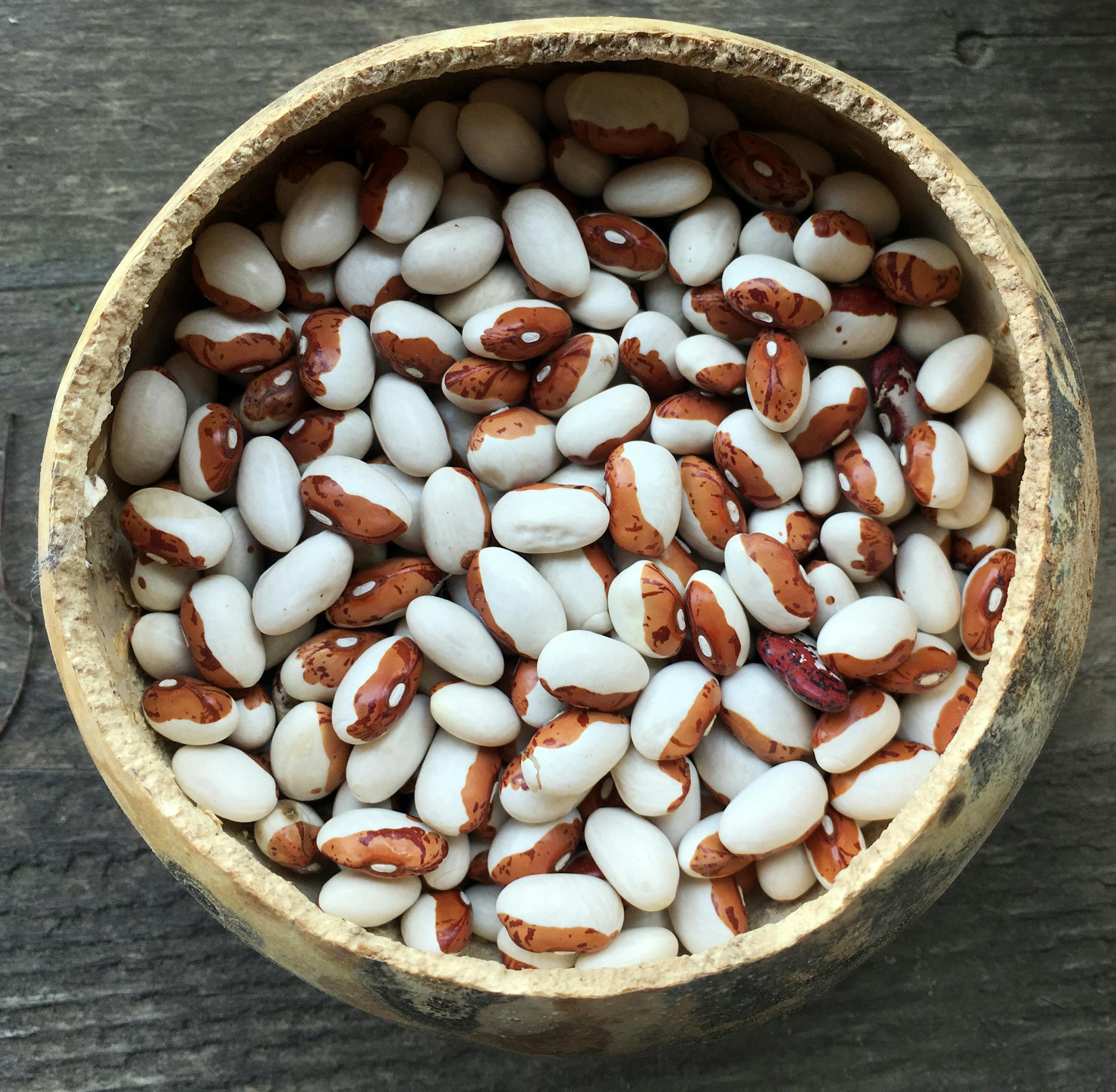
What Is Native American Cuisine? (Encore)
Pasta, sushi, tacos, samosas, and pad thai: In the U.S., enthusiastic eaters will likely be able to name traditional dishes from a wide variety of cuisines around the world. But most of us couldn't name a single Native American dish from any one the vast network of tribes, cultures, and cuisines that spread across the U.S. before Europeans arrived. Today, farmers, activists, and chefs are trying to change that. They're bringing back Native foods—not just to teach all Americans about the indigenous foods of their country, but to improve the lives of Native Americans themselves, who suffer from some of the highest levels of debilitating and often deadly diet-related diseases. Can a return to a Native diet help? Learn more about your ad choices. Visit podcastchoices.com/adchoices
What Is Native American Cuisine? (Encore)
Pasta, sushi, tacos, samosas, and pad thai: In the U.S., enthusiastic eaters will likely be able to name traditional dishes from a wide variety of cuisines around the world. But most of us couldn't name a single Native American dish from any one the vast network of tribes, cultures, and cuisines that spread across the U.S. before Europeans arrived. Today, farmers, activists, and chefs are trying to change that. They're bringing back Native foods—not just to teach all Americans about the indigenous foods of their country, but to improve the lives of Native Americans themselves, who suffer from some of the highest levels of debilitating and often deadly diet-related diseases. Can a return to a Native diet help? Learn more about your ad choices. Visit podcastchoices.com/adchoices
46:23
22 Nov 22
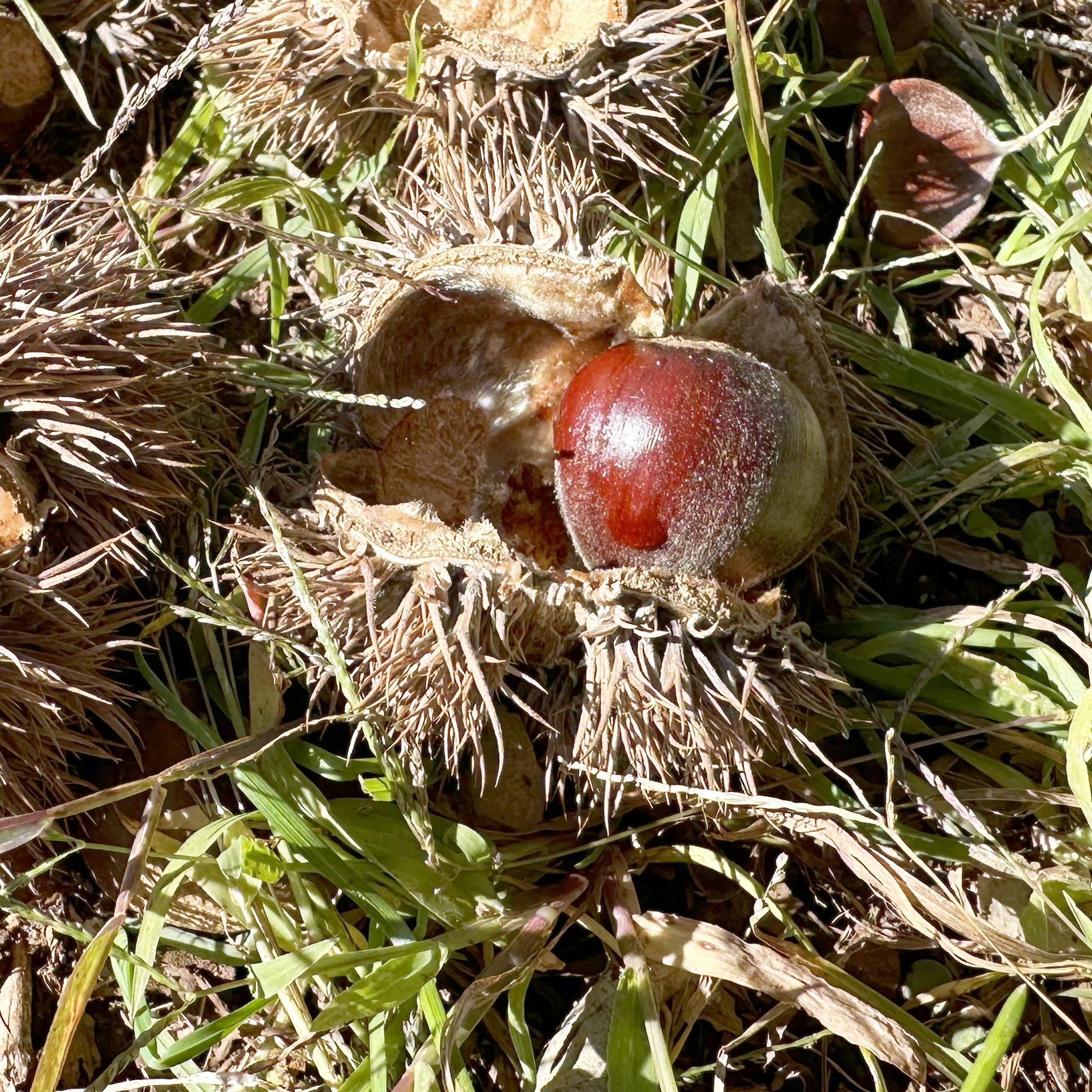
That Old Chestnut: A Nutty Tale, of Love, Loss, and Reconnection
Just a little over a hundred years ago, eastern forests were studded with what was called "America's perfect tree": 100-foot giants with straight-grained, rot-resistant wood, which filled the woods every fall with delicious, nutritious nuts. This nut—the American chestnut—was a staple in the diet and culture of Indigenous peoples, local wildlife, and colonial Americans. Then, in the early 1900s, disaster struck: a deadly and seemingly unstoppable disease moved in and made the species functionally extinct. But Americans haven’t given up on the chestnut; there’s a movement today to bring back this iconic tree using a variety of ingenious approaches. So what will it take to return the “redwood of the East” to our forests—and its sweet, buttery nut to our plates? Join us this episode as we take a frolic through the chestnut’s forgotten history and the science underpinning its potential return, as well as visit a farm growing hybrid American chestnuts to taste for ourselves why they once drove Americans wild—and might soon do so again. Learn more about your ad choices. Visit podcastchoices.com/adchoices
That Old Chestnut: A Nutty Tale, of Love, Loss, and Reconnection
Just a little over a hundred years ago, eastern forests were studded with what was called "America's perfect tree": 100-foot giants with straight-grained, rot-resistant wood, which filled the woods every fall with delicious, nutritious nuts. This nut—the American chestnut—was a staple in the diet and culture of Indigenous peoples, local wildlife, and colonial Americans. Then, in the early 1900s, disaster struck: a deadly and seemingly unstoppable disease moved in and made the species functionally extinct. But Americans haven’t given up on the chestnut; there’s a movement today to bring back this iconic tree using a variety of ingenious approaches. So what will it take to return the “redwood of the East” to our forests—and its sweet, buttery nut to our plates? Join us this episode as we take a frolic through the chestnut’s forgotten history and the science underpinning its potential return, as well as visit a farm growing hybrid American chestnuts to taste for ourselves why they once drove Americans wild—and might soon do so again. Learn more about your ad choices. Visit podcastchoices.com/adchoices
51:07
8 Nov 22
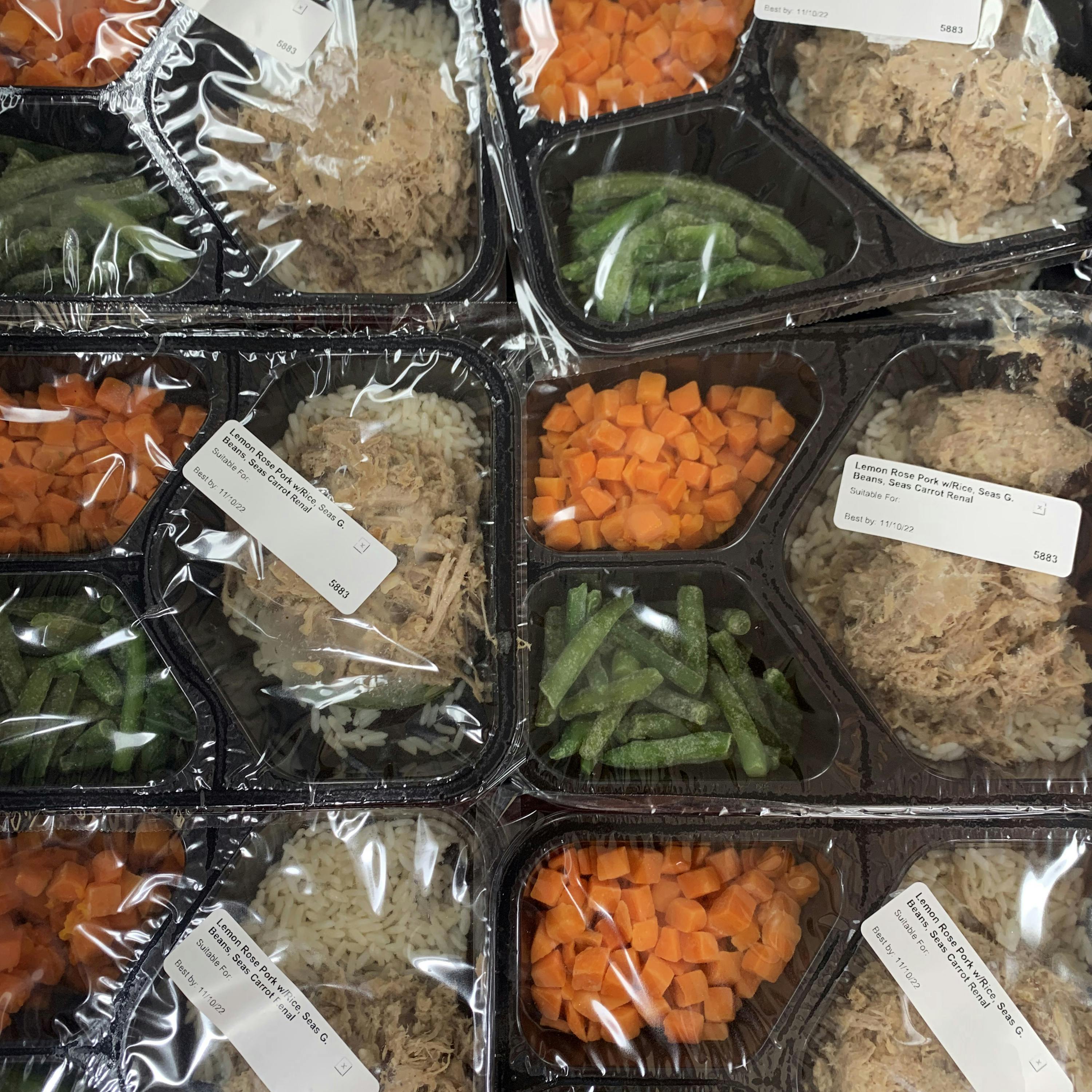
Prescription Dinner: Can Meals Be Medicine?
We've all heard that what you eat affects your health—but doctors prescribing dinner? It's real: Medically tailored meals are specifically designed to treat conditions such as kidney disease, diabetes, and heart disease, as well nourish people going through chemotherapy and radiation. Today, in a handful of places around the US, eligible patients can receive them for free, prescribed by their medical provider and reimbursed by their health insurance. There's even legislation in Congress that would roll this program out nationwide. This episode, Gastropod investigates: how do medically tailored meals work? From the science of how nutritionally designed dinners can affect disease progression, to the economics behind why it makes sense for taxpayers and insurers to invest in food, to the tricky logistics of bringing prescription meals to the masses, listen in now for the scoop on one of the biggest stories in healthcare. Learn more about your ad choices. Visit podcastchoices.com/adchoices
Prescription Dinner: Can Meals Be Medicine?
We've all heard that what you eat affects your health—but doctors prescribing dinner? It's real: Medically tailored meals are specifically designed to treat conditions such as kidney disease, diabetes, and heart disease, as well nourish people going through chemotherapy and radiation. Today, in a handful of places around the US, eligible patients can receive them for free, prescribed by their medical provider and reimbursed by their health insurance. There's even legislation in Congress that would roll this program out nationwide. This episode, Gastropod investigates: how do medically tailored meals work? From the science of how nutritionally designed dinners can affect disease progression, to the economics behind why it makes sense for taxpayers and insurers to invest in food, to the tricky logistics of bringing prescription meals to the masses, listen in now for the scoop on one of the biggest stories in healthcare. Learn more about your ad choices. Visit podcastchoices.com/adchoices
45:29
25 Oct 22
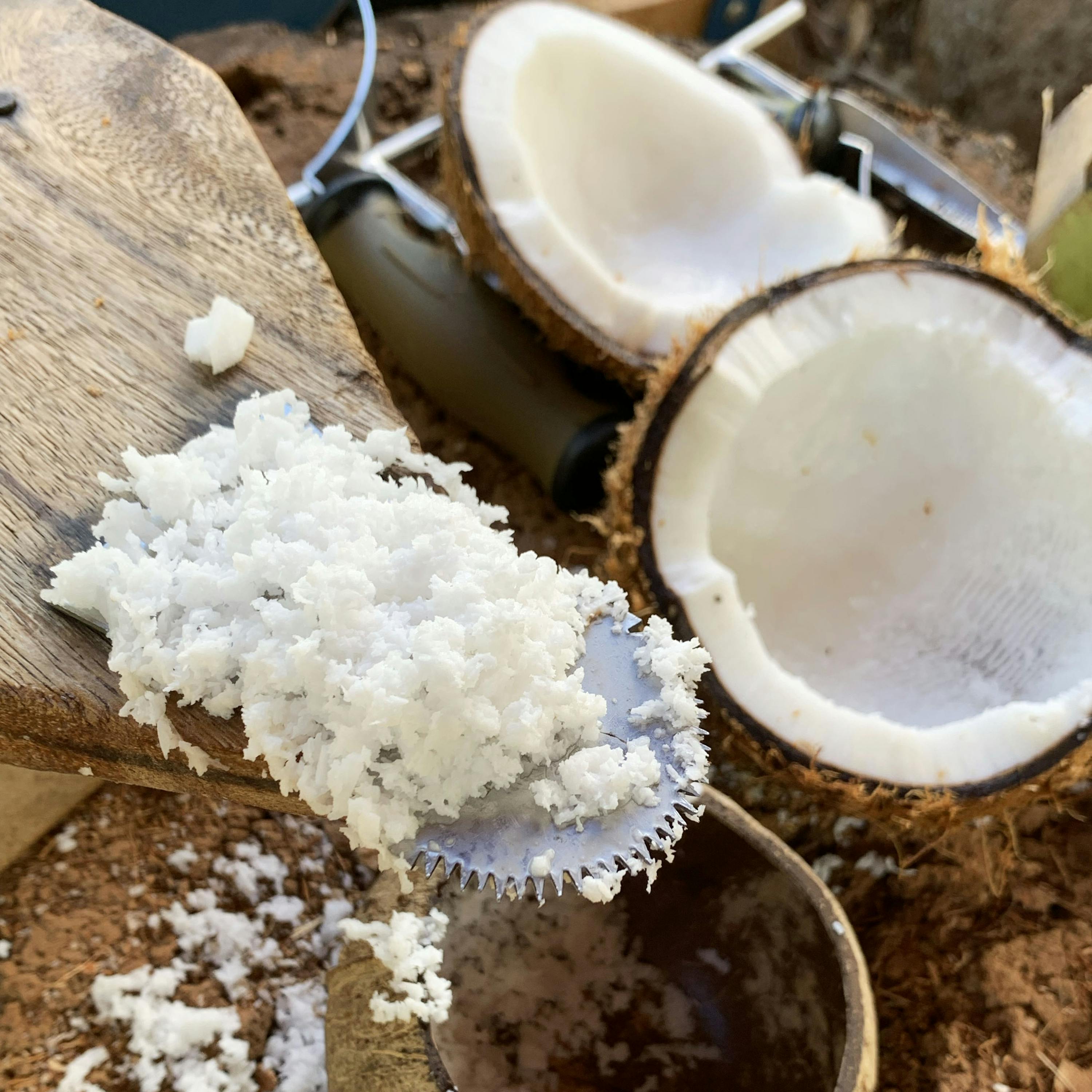
Trouble in Paradise: Coconut War Waters and Coconut Oil Controversies
Whether enrobed with chocolate in a candy bar or sucked up through a straw on the beach, coconut has become shorthand for the good life: clear blue waters, white sand beaches, and an ocean breeze. But it’s not just a tropical treat. All around the world, people who live alongside the coconut palm refer to it as the “tree of life,” thanks to its ability to provide food, oil, fresh water, and the sturdy raw materials to build homes, clothes, and even musical instruments—all from one plant. But can this delicious, Swiss Army-knife of a nut (that's not technically a nut) also prevent heart disease, clean your teeth, and even stave off Alzheimer's? This episode, Gastropod cracks open what makes coconuts so great, including their role as everything from a Presidential lifesaver to the missing ingredient in nuclear fusion. We've also got the backstabbing battle that made coconut water popular, and the science on all of that Paleo coconut oil hype. Plus, we take on our toughest field assignment yet: traveling to a tropical island to taste the fruit of the tree of life ourselves—if we can just figure out how to get it open... Learn more about your ad choices. Visit podcastchoices.com/adchoices
Trouble in Paradise: Coconut War Waters and Coconut Oil Controversies
Whether enrobed with chocolate in a candy bar or sucked up through a straw on the beach, coconut has become shorthand for the good life: clear blue waters, white sand beaches, and an ocean breeze. But it’s not just a tropical treat. All around the world, people who live alongside the coconut palm refer to it as the “tree of life,” thanks to its ability to provide food, oil, fresh water, and the sturdy raw materials to build homes, clothes, and even musical instruments—all from one plant. But can this delicious, Swiss Army-knife of a nut (that's not technically a nut) also prevent heart disease, clean your teeth, and even stave off Alzheimer's? This episode, Gastropod cracks open what makes coconuts so great, including their role as everything from a Presidential lifesaver to the missing ingredient in nuclear fusion. We've also got the backstabbing battle that made coconut water popular, and the science on all of that Paleo coconut oil hype. Plus, we take on our toughest field assignment yet: traveling to a tropical island to taste the fruit of the tree of life ourselves—if we can just figure out how to get it open... Learn more about your ad choices. Visit podcastchoices.com/adchoices
47:47
11 Oct 22
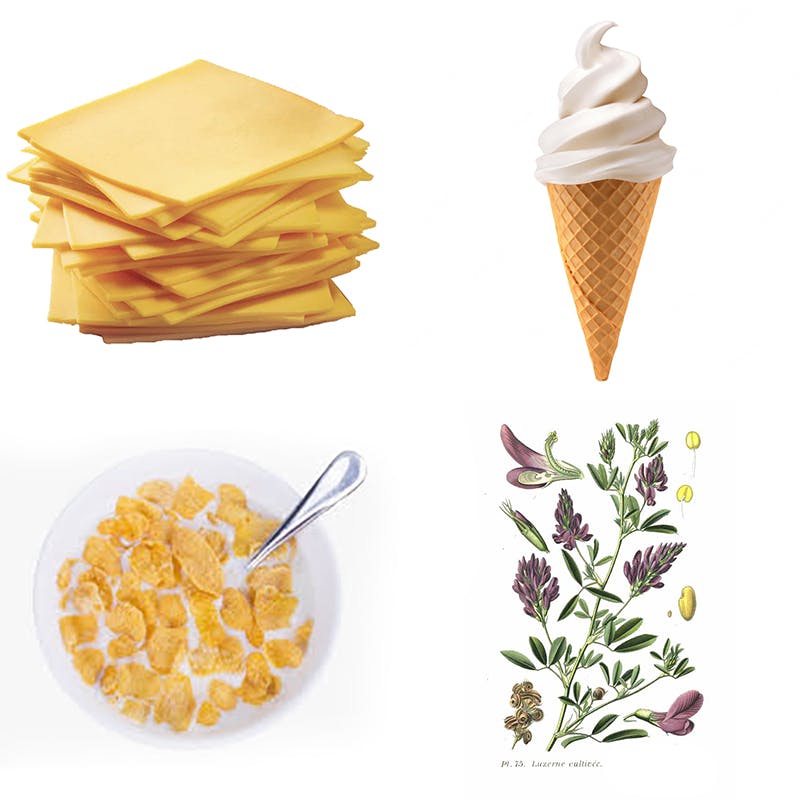
Does the Western Megadrought Mean the End of Cheap Cheese and Ice Cream?
Imagine a summer's day without the jingle of the ice-cream truck, a pizza without its bubbling layer of melted cheesy goodness, or even a bowl of cereal without milk. It’s a shocking prospect, for sure, but the threat to these delights is perhaps even more surprising: The fact that Americans enjoy more than three times their body-weight in dairy products each year is, in no small part, due to a water-hungry plant that’s frequently, if counterintuitively, grown in the desert. That plant is alfalfa, and it makes up at least half of the diet of dairy cows all over the world. So why are we growing alfalfa in the arid American Southwest, and watering it from the Colorado River—both of which, as you may have heard on the news, are becoming drier with every passing day? To find out, Gastropod went on a good old-fashioned road trip for some field reporting (literally, in an alfalfa field) and talked to farmers, economists, plant experts, journalists, and exporters about where this surprisingly important plant fits in to a warming world—and how we can prevent a future lacking in lactose without also drying up the West. Learn more about your ad choices. Visit podcastchoices.com/adchoices
Does the Western Megadrought Mean the End of Cheap Cheese and Ice Cream?
Imagine a summer's day without the jingle of the ice-cream truck, a pizza without its bubbling layer of melted cheesy goodness, or even a bowl of cereal without milk. It’s a shocking prospect, for sure, but the threat to these delights is perhaps even more surprising: The fact that Americans enjoy more than three times their body-weight in dairy products each year is, in no small part, due to a water-hungry plant that’s frequently, if counterintuitively, grown in the desert. That plant is alfalfa, and it makes up at least half of the diet of dairy cows all over the world. So why are we growing alfalfa in the arid American Southwest, and watering it from the Colorado River—both of which, as you may have heard on the news, are becoming drier with every passing day? To find out, Gastropod went on a good old-fashioned road trip for some field reporting (literally, in an alfalfa field) and talked to farmers, economists, plant experts, journalists, and exporters about where this surprisingly important plant fits in to a warming world—and how we can prevent a future lacking in lactose without also drying up the West. Learn more about your ad choices. Visit podcastchoices.com/adchoices
51:12
27 Sep 22

Lunch Gets Schooled (encore)
Across the United States, school lunch is being transformed, as counties and cities partner with local farms to access fresh vegetables, as well as hire chefs to introduce tastier and more adventurous meals. This is a much-needed correction after decades of processed meals that contained little in the way of nutrition and flavor. But how did we get to trays of spongy pizza and freezer-burned tater tots in the first place? While it seems as if such culinary delights were always part of a child's day, the school lunch is barely a century old—and there are plenty of countries in the world, like Canada and Norway, where school lunch doesn't even exist. This episode, we dive into the history of how we got to today's school lunch situation, as well as what it tells us about our economic and gender priorities. Listen in now for all that, plus the science on whether school lunch even matters. (encore) Learn more about your ad choices. Visit podcastchoices.com/adchoices
Lunch Gets Schooled (encore)
Across the United States, school lunch is being transformed, as counties and cities partner with local farms to access fresh vegetables, as well as hire chefs to introduce tastier and more adventurous meals. This is a much-needed correction after decades of processed meals that contained little in the way of nutrition and flavor. But how did we get to trays of spongy pizza and freezer-burned tater tots in the first place? While it seems as if such culinary delights were always part of a child's day, the school lunch is barely a century old—and there are plenty of countries in the world, like Canada and Norway, where school lunch doesn't even exist. This episode, we dive into the history of how we got to today's school lunch situation, as well as what it tells us about our economic and gender priorities. Listen in now for all that, plus the science on whether school lunch even matters. (encore) Learn more about your ad choices. Visit podcastchoices.com/adchoices
53:38
21 Sep 22

What Do Aliens Eat? Food in Sci-Fi and Fantasy
Whether you’re an adorable, candy-loving alien, a lost hobbit, a Federation starship captain, or the King in the North, you still need to eat. This episode, Gastropod is exploring the weird and wonderful world of food in science fiction and fantasy, from well-loved standards like Star Trek and The Lord of the Rings, to modern favorites like The Expanse, and all of the esoteric cult classics (parasitic frozen desserts, anyone?) in between. We talk to some of our favorite writers about how food helps them build worlds both foreign and familiar, chat with a legendary Hollywood food stylist to see how she brings stomach-turning Klingon meals and peacock-laden fantasy feasts to life on screen, and catch up with some of our listeners about the imagined tastes they’ll never forget. Fire up the replicator, pour yourself a glass of blue milk, and enjoy a bite of Lembas bread as you join us at this buffet of imaginary foods. Learn more about your ad choices. Visit podcastchoices.com/adchoices
What Do Aliens Eat? Food in Sci-Fi and Fantasy
Whether you’re an adorable, candy-loving alien, a lost hobbit, a Federation starship captain, or the King in the North, you still need to eat. This episode, Gastropod is exploring the weird and wonderful world of food in science fiction and fantasy, from well-loved standards like Star Trek and The Lord of the Rings, to modern favorites like The Expanse, and all of the esoteric cult classics (parasitic frozen desserts, anyone?) in between. We talk to some of our favorite writers about how food helps them build worlds both foreign and familiar, chat with a legendary Hollywood food stylist to see how she brings stomach-turning Klingon meals and peacock-laden fantasy feasts to life on screen, and catch up with some of our listeners about the imagined tastes they’ll never forget. Fire up the replicator, pour yourself a glass of blue milk, and enjoy a bite of Lembas bread as you join us at this buffet of imaginary foods. Learn more about your ad choices. Visit podcastchoices.com/adchoices
46:54
13 Sep 22

Guest Episode: The Umami Mama by Unexplainable
Gastropod is excited to present this guest episode of Unexplainable. For thousands of years, there have been four basic tastes recognized across cultures. But thanks to Kumiko Ninomiya (a.k.a. the Umami Mama), scientists finally accepted a fifth. So could there be even more? Learn more about your ad choices. Visit podcastchoices.com/adchoices
Guest Episode: The Umami Mama by Unexplainable
Gastropod is excited to present this guest episode of Unexplainable. For thousands of years, there have been four basic tastes recognized across cultures. But thanks to Kumiko Ninomiya (a.k.a. the Umami Mama), scientists finally accepted a fifth. So could there be even more? Learn more about your ad choices. Visit podcastchoices.com/adchoices
41:25
30 Aug 22
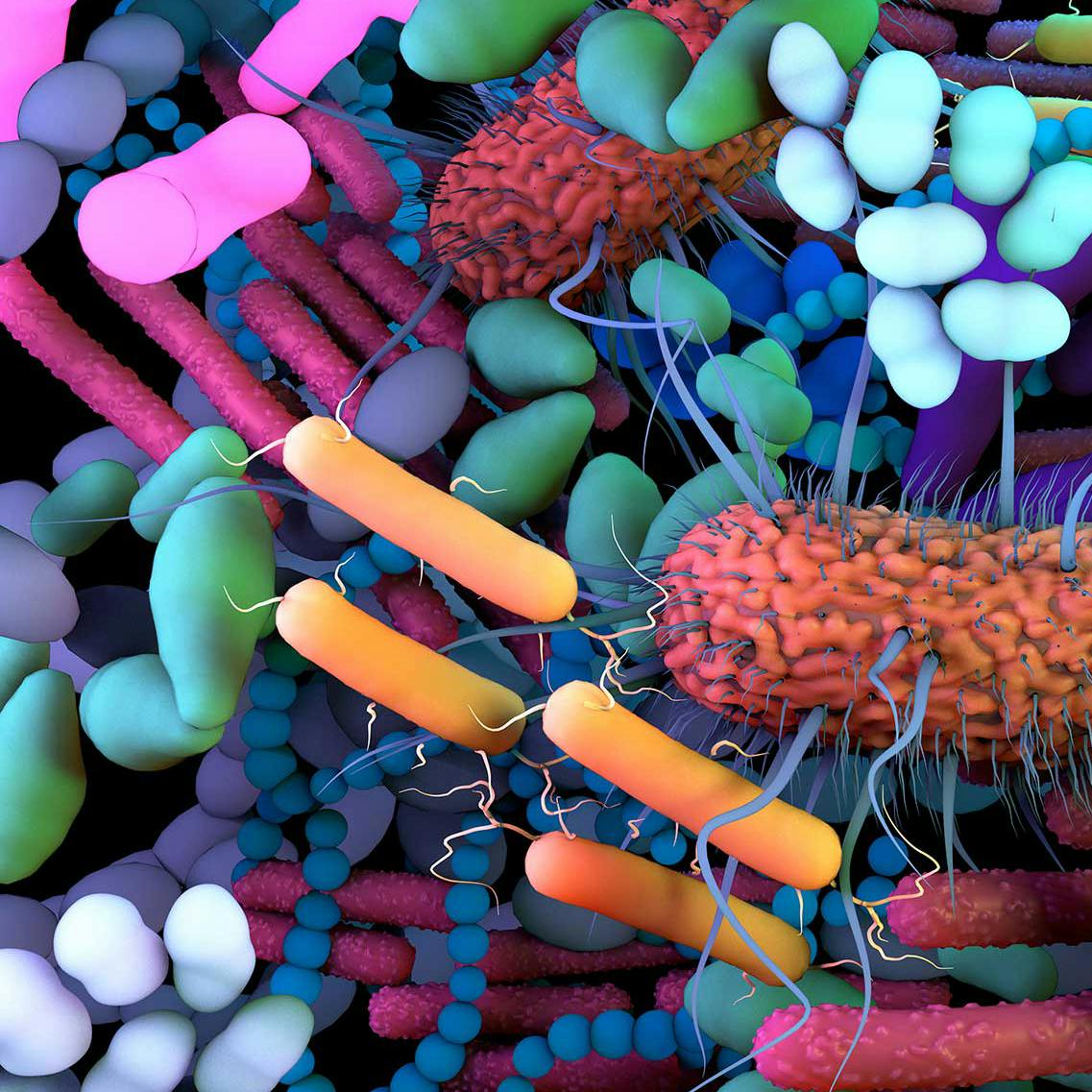
Gut Feeling
Do you get butterflies in your stomach when you’re excited? Feel nauseated when you’re nervous? Get a knot in your gut when you're worried something bad is going to happen? Then you’ve experienced what’s called the gut-brain axis: a powerful connection between your brain and your stomach. And, if you’ve been on wellness social media over the last few years, you’ve probably heard that you can hijack this connection to help heal a whole host of mental illnesses, from taking probiotics for PTSD to treating depression with diet. But how much of this is science, and how much is modern-day snake oil? With the help of gastroenterologists, psychologists, and yes, the U.S. military, Gastropod is here to investigate! The answer involves prescription kefir, a trip to an Army base to play video games, and the trials and tribulations of some very melancholy mice—not to mention lots and LOTS of microbes. Listen in for the scoop on how tweaking your gut microbes can change your mind. (But, for your own health, please don’t drink every time we mention our favorite topic during this episode!) Learn more about your ad choices. Visit podcastchoices.com/adchoices
Gut Feeling
Do you get butterflies in your stomach when you’re excited? Feel nauseated when you’re nervous? Get a knot in your gut when you're worried something bad is going to happen? Then you’ve experienced what’s called the gut-brain axis: a powerful connection between your brain and your stomach. And, if you’ve been on wellness social media over the last few years, you’ve probably heard that you can hijack this connection to help heal a whole host of mental illnesses, from taking probiotics for PTSD to treating depression with diet. But how much of this is science, and how much is modern-day snake oil? With the help of gastroenterologists, psychologists, and yes, the U.S. military, Gastropod is here to investigate! The answer involves prescription kefir, a trip to an Army base to play video games, and the trials and tribulations of some very melancholy mice—not to mention lots and LOTS of microbes. Listen in for the scoop on how tweaking your gut microbes can change your mind. (But, for your own health, please don’t drink every time we mention our favorite topic during this episode!) Learn more about your ad choices. Visit podcastchoices.com/adchoices
51:31
16 Aug 22

Green Gold: Our Love Affair With Olive Oil (encore)
Olive oil is not what you think it is. According to Tom Mueller, author of Extra Virginity: The Sublime and Scandalous World of Olive Oil, an olive is a stone fruit like a plum or cherry—meaning that the green-gold liquid we extract from it "is, quite literally, fruit juice." And, while we're blowing your minds, have you ever stopped to wonder what "extra virgin" means? "It's like extra dead or semi-pregnant," Mueller said. "I mean, it doesn't make any sense at all." This episode we visit two groves—one in the Old World, one in the New—to get to the bottom of olive oil's many mysteries. Listen in this episode as we find out why the ancient Romans rubbed it all over their bodies, and whether the olive oil on our kitchen counters really is what it says on the label. (Encore presentation) Learn more about your ad choices. Visit podcastchoices.com/adchoices
Green Gold: Our Love Affair With Olive Oil (encore)
Olive oil is not what you think it is. According to Tom Mueller, author of Extra Virginity: The Sublime and Scandalous World of Olive Oil, an olive is a stone fruit like a plum or cherry—meaning that the green-gold liquid we extract from it "is, quite literally, fruit juice." And, while we're blowing your minds, have you ever stopped to wonder what "extra virgin" means? "It's like extra dead or semi-pregnant," Mueller said. "I mean, it doesn't make any sense at all." This episode we visit two groves—one in the Old World, one in the New—to get to the bottom of olive oil's many mysteries. Listen in this episode as we find out why the ancient Romans rubbed it all over their bodies, and whether the olive oil on our kitchen counters really is what it says on the label. (Encore presentation) Learn more about your ad choices. Visit podcastchoices.com/adchoices
52:54
2 Aug 22
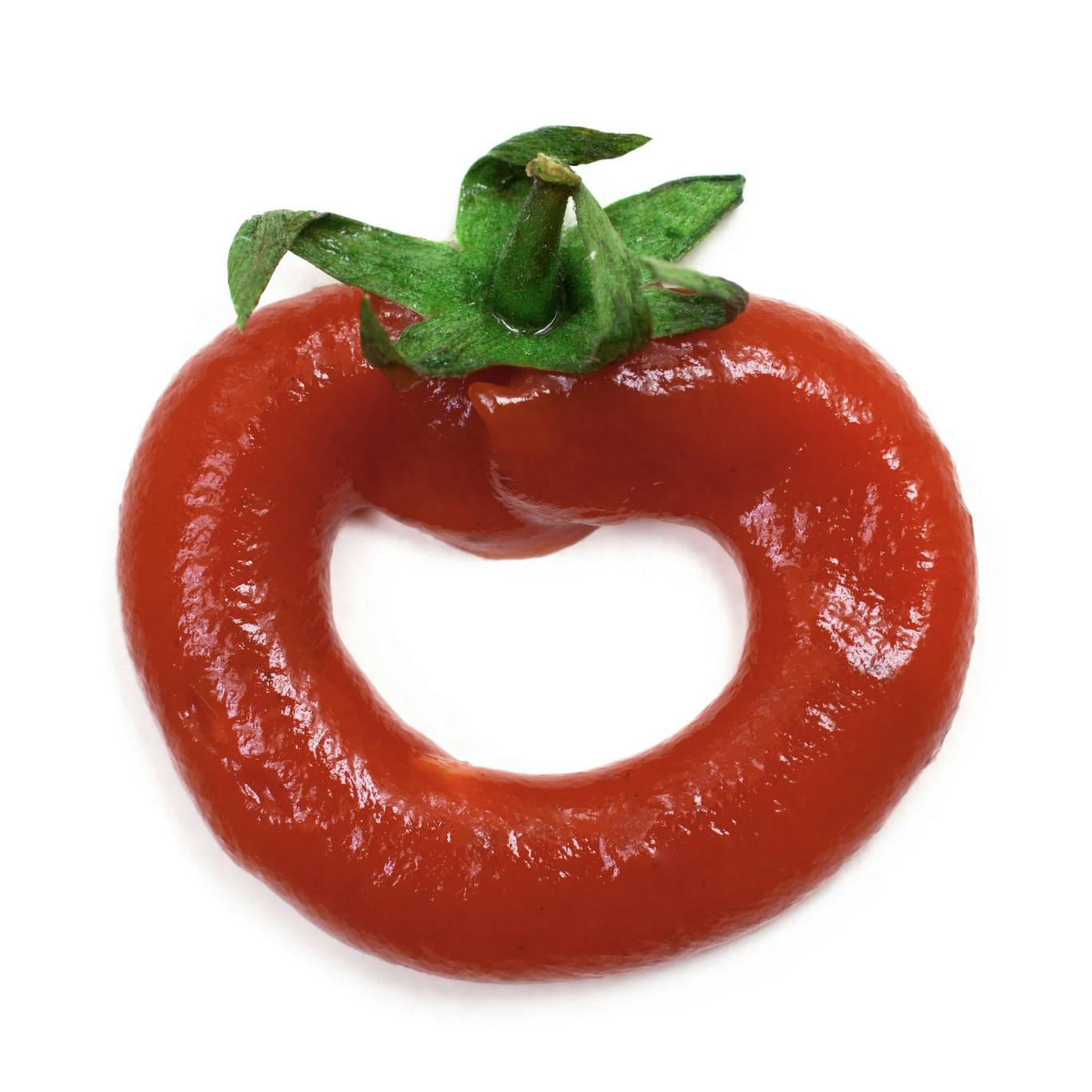
How Ketchup Got Thick
Ketchup is the crowd-pleaser of condiments—a ubiquitous accessory on dinner tables throughout the United States, and, increasingly, the world. But this kid-friendly classic actually has its roots in a much funkier food: fermented fish sauce! So how did the salty, pungent, amber-colored seasoning that gives Southeast Asian cuisine its characteristic flavor turn into a thick, red sauce typically found atop hamburgers and French fries? It's a saga that involves the fall of the Roman empire, eighteenth-century fish sauce knock-offs made from green walnuts and vinegar, and the marketing genius of one Henry J. Heinz. Listen in now for that story, plus the 1981 ketchup scandal that shook the Reagan White House, in our love song to ketchup's weird backstory and underrated culinary sophistication. Learn more about your ad choices. Visit podcastchoices.com/adchoices
How Ketchup Got Thick
Ketchup is the crowd-pleaser of condiments—a ubiquitous accessory on dinner tables throughout the United States, and, increasingly, the world. But this kid-friendly classic actually has its roots in a much funkier food: fermented fish sauce! So how did the salty, pungent, amber-colored seasoning that gives Southeast Asian cuisine its characteristic flavor turn into a thick, red sauce typically found atop hamburgers and French fries? It's a saga that involves the fall of the Roman empire, eighteenth-century fish sauce knock-offs made from green walnuts and vinegar, and the marketing genius of one Henry J. Heinz. Listen in now for that story, plus the 1981 ketchup scandal that shook the Reagan White House, in our love song to ketchup's weird backstory and underrated culinary sophistication. Learn more about your ad choices. Visit podcastchoices.com/adchoices
46:39
20 Jul 22

Delivery Wars
Big tech is changing every aspect of our world. But how? And at what cost? Gastropod is excited to share the first episode of a special four-part Land of the Giants series, in which Recode teams up with Eater to unbox the evolving world of food delivery. Find out how the rise of investor-backed third-party delivery apps has dramatically changed consumer behavior, helped create a modern gig workforce, disrupted small businesses, and potentially changed our relationship with food forever. We need your help! We’re conducting an audience survey to hear from you. The information you share is important to help us keep making the podcast and, we hope, keep making it better! Head to Gastropod.com/survey to participate. We really appreciate it. Learn more about your ad choices. Visit podcastchoices.com/adchoices
Delivery Wars
Big tech is changing every aspect of our world. But how? And at what cost? Gastropod is excited to share the first episode of a special four-part Land of the Giants series, in which Recode teams up with Eater to unbox the evolving world of food delivery. Find out how the rise of investor-backed third-party delivery apps has dramatically changed consumer behavior, helped create a modern gig workforce, disrupted small businesses, and potentially changed our relationship with food forever. We need your help! We’re conducting an audience survey to hear from you. The information you share is important to help us keep making the podcast and, we hope, keep making it better! Head to Gastropod.com/survey to participate. We really appreciate it. Learn more about your ad choices. Visit podcastchoices.com/adchoices
38:05
5 Jul 22

The Milk of Life
No matter what your diet’s like today, we all likely started life eating the same thing: breast milk, formula milk, or a bit of both. But both of these products aren’t always easy to come by. Breastfeeding can be difficult or impossible for some parents, and formula milk isn’t always safe, affordable, or even available — as we’re seeing in the US, where formula milk is currently 70 percent out-of-stock. This episode, we tell the story of how we got here, and we explore what we should we do to make feeding babies easier in the future. Along the way, we find out what makes human milk—or "white blood," as it perhaps should be known—so unique, as well as why Parisian attitudes to feeding infants in the 1800s made it known as a city with no children. We've also got the story of when formula was first invented, the dirty tricks used to market it, and the competing pressures and changing advice that have swung the pendulum from "breast is best" to formula and back again. Listen in for the story behind the news, the tale of our first and most essential food. We need your help! We’re conducting an audience survey to hear from you. The information you share is important to help us keep making the podcast and, we hope, keep making it better! Head to Gastropod.com/survey to participate. We really appreciate it. Learn more about your ad choices. Visit podcastchoices.com/adchoices
The Milk of Life
No matter what your diet’s like today, we all likely started life eating the same thing: breast milk, formula milk, or a bit of both. But both of these products aren’t always easy to come by. Breastfeeding can be difficult or impossible for some parents, and formula milk isn’t always safe, affordable, or even available — as we’re seeing in the US, where formula milk is currently 70 percent out-of-stock. This episode, we tell the story of how we got here, and we explore what we should we do to make feeding babies easier in the future. Along the way, we find out what makes human milk—or "white blood," as it perhaps should be known—so unique, as well as why Parisian attitudes to feeding infants in the 1800s made it known as a city with no children. We've also got the story of when formula was first invented, the dirty tricks used to market it, and the competing pressures and changing advice that have swung the pendulum from "breast is best" to formula and back again. Listen in for the story behind the news, the tale of our first and most essential food. We need your help! We’re conducting an audience survey to hear from you. The information you share is important to help us keep making the podcast and, we hope, keep making it better! Head to Gastropod.com/survey to participate. We really appreciate it. Learn more about your ad choices. Visit podcastchoices.com/adchoices
53:57
21 Jun 22
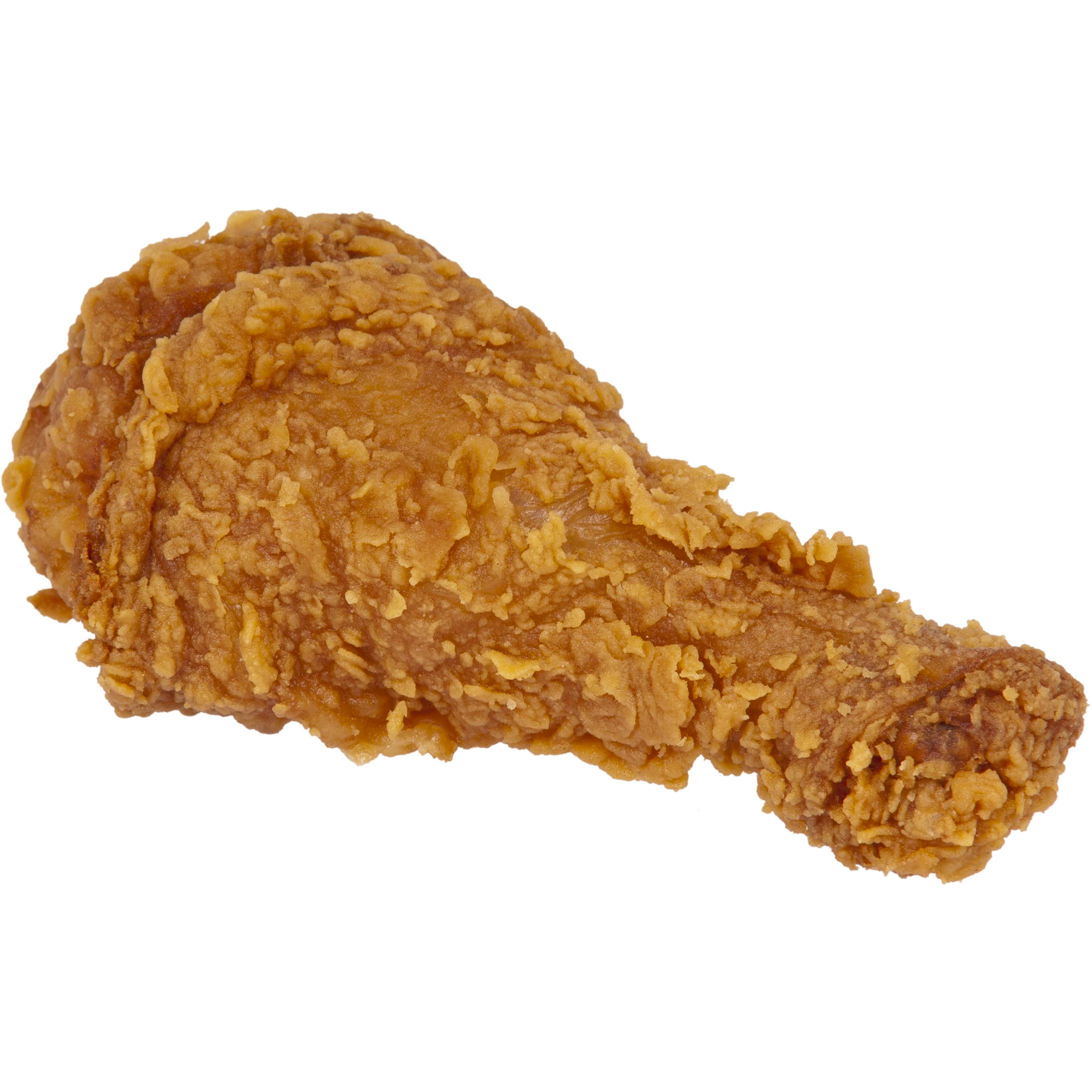
Poultry Power: The Fried Chicken Chronicles (encore)
Juicy, crispy, crunchy...fried chicken is undoubtedly delicious. But it's also complicated, in ways that go far deeper than the science behind that perfect crust. From slavery to entrepreneurship and from yard fowl to Gospel bird, the story of fried chicken is filled with challenging contradictions. Grab a drumstick and listen in. (Encore presentation.) We need your help! We’re conducting an audience survey to hear from you. The information you share is important to help us keep making the podcast and, we hope, keep making it better! Head to Gastropod.com/survey to participate. We really appreciate it. Learn more about your ad choices. Visit podcastchoices.com/adchoices
Poultry Power: The Fried Chicken Chronicles (encore)
Juicy, crispy, crunchy...fried chicken is undoubtedly delicious. But it's also complicated, in ways that go far deeper than the science behind that perfect crust. From slavery to entrepreneurship and from yard fowl to Gospel bird, the story of fried chicken is filled with challenging contradictions. Grab a drumstick and listen in. (Encore presentation.) We need your help! We’re conducting an audience survey to hear from you. The information you share is important to help us keep making the podcast and, we hope, keep making it better! Head to Gastropod.com/survey to participate. We really appreciate it. Learn more about your ad choices. Visit podcastchoices.com/adchoices
48:41
7 Jun 22

Guest episode: Montréal by Not Lost
Gastropod is excited to present this guest episode of Not Lost, called Montréal: Voyage Voyage. When both his popular culture podcast and long-term relationship come to an end, journalist Brendan Francis Newnam finds he has the time — and freedom — to pursue his dream: a travel podcast where he goes places and learns about them by getting invited to a stranger’s house for dinner. Not Lost is both a delightful travel escape and an insightful look at people — locals and visitors alike — trying to make sense of a constantly changing world. This episode, Brendan and his friend Danielle seek out the je ne sais quoi of the Québécois. Along the way, they learn about the Quiet Revolution, French-Canadian celebrity mags, and local pastries known as “nun’s farts.” Learn more about your ad choices. Visit podcastchoices.com/adchoices
Guest episode: Montréal by Not Lost
Gastropod is excited to present this guest episode of Not Lost, called Montréal: Voyage Voyage. When both his popular culture podcast and long-term relationship come to an end, journalist Brendan Francis Newnam finds he has the time — and freedom — to pursue his dream: a travel podcast where he goes places and learns about them by getting invited to a stranger’s house for dinner. Not Lost is both a delightful travel escape and an insightful look at people — locals and visitors alike — trying to make sense of a constantly changing world. This episode, Brendan and his friend Danielle seek out the je ne sais quoi of the Québécois. Along the way, they learn about the Quiet Revolution, French-Canadian celebrity mags, and local pastries known as “nun’s farts.” Learn more about your ad choices. Visit podcastchoices.com/adchoices
52:33
31 May 22
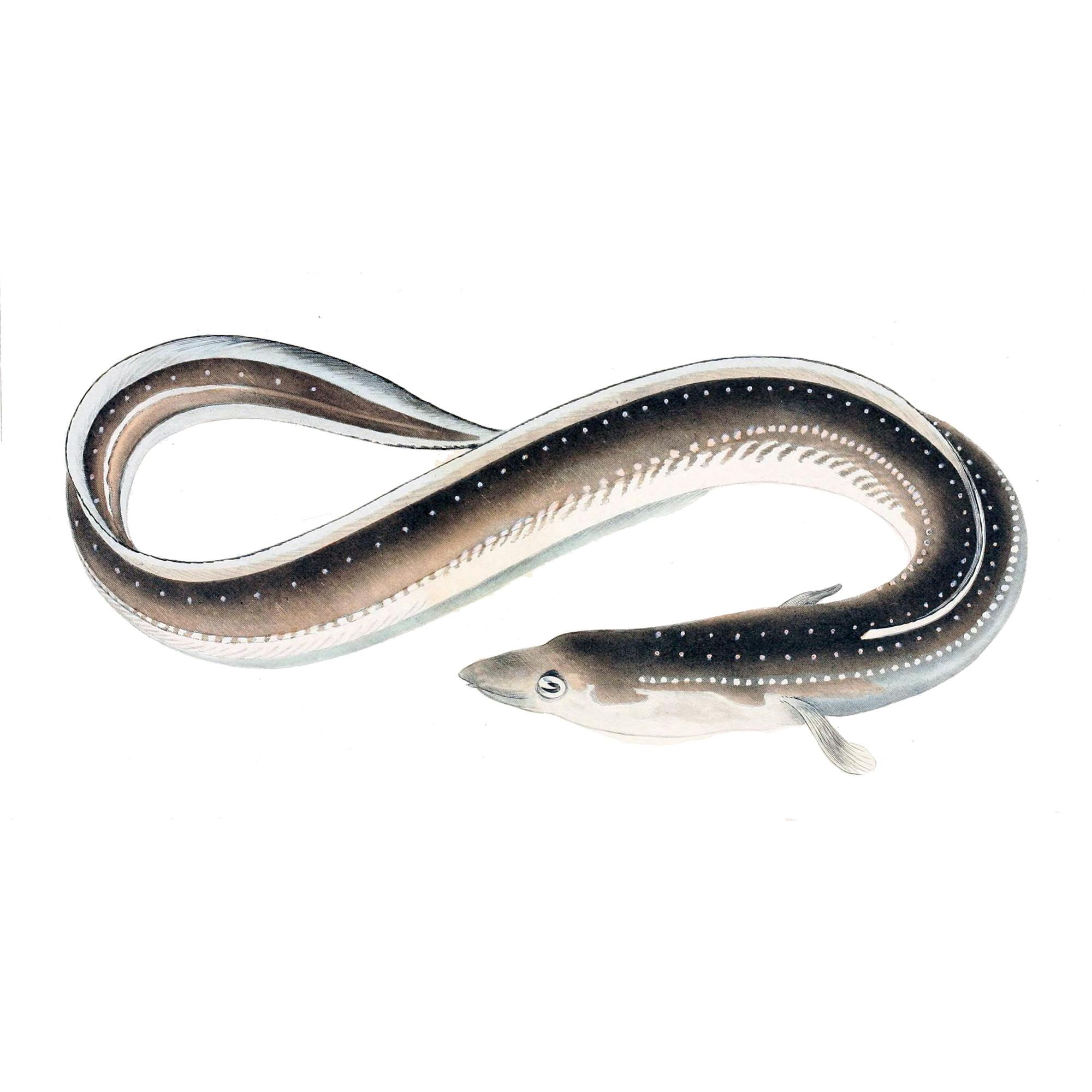
Reinventing the Eel
Aristotle thought they were born out of mud. A young Sigmund Freud dedicated himself to finding their testicles (spoiler alert, he failed). And a legendary Danish marine biologist spent 18 years and his wife's fortune sailing around the Atlantic Ocean to find their birthplace. The creature that tormented all of these great thinkers? It was the eel, perhaps the most mysterious fish in the world—and one of the most expensive per pound. So why are tiny, transparent, worm-like baby eels worth so much? Why have eels remained so mysterious, despite scientists' best efforts? And how has one pioneering farmer in Maine started raising eels sustainably, despite the species' endangered status? All that this episode, plus a nighttime fishing trip, suitcases full of cash, and a compelling argument that when it comes to the American Thanksgiving dinner plate, we should consider ditching the turkey—and replacing it with eel. Learn more about your ad choices. Visit podcastchoices.com/adchoices
Reinventing the Eel
Aristotle thought they were born out of mud. A young Sigmund Freud dedicated himself to finding their testicles (spoiler alert, he failed). And a legendary Danish marine biologist spent 18 years and his wife's fortune sailing around the Atlantic Ocean to find their birthplace. The creature that tormented all of these great thinkers? It was the eel, perhaps the most mysterious fish in the world—and one of the most expensive per pound. So why are tiny, transparent, worm-like baby eels worth so much? Why have eels remained so mysterious, despite scientists' best efforts? And how has one pioneering farmer in Maine started raising eels sustainably, despite the species' endangered status? All that this episode, plus a nighttime fishing trip, suitcases full of cash, and a compelling argument that when it comes to the American Thanksgiving dinner plate, we should consider ditching the turkey—and replacing it with eel. Learn more about your ad choices. Visit podcastchoices.com/adchoices
48:52
16 May 22
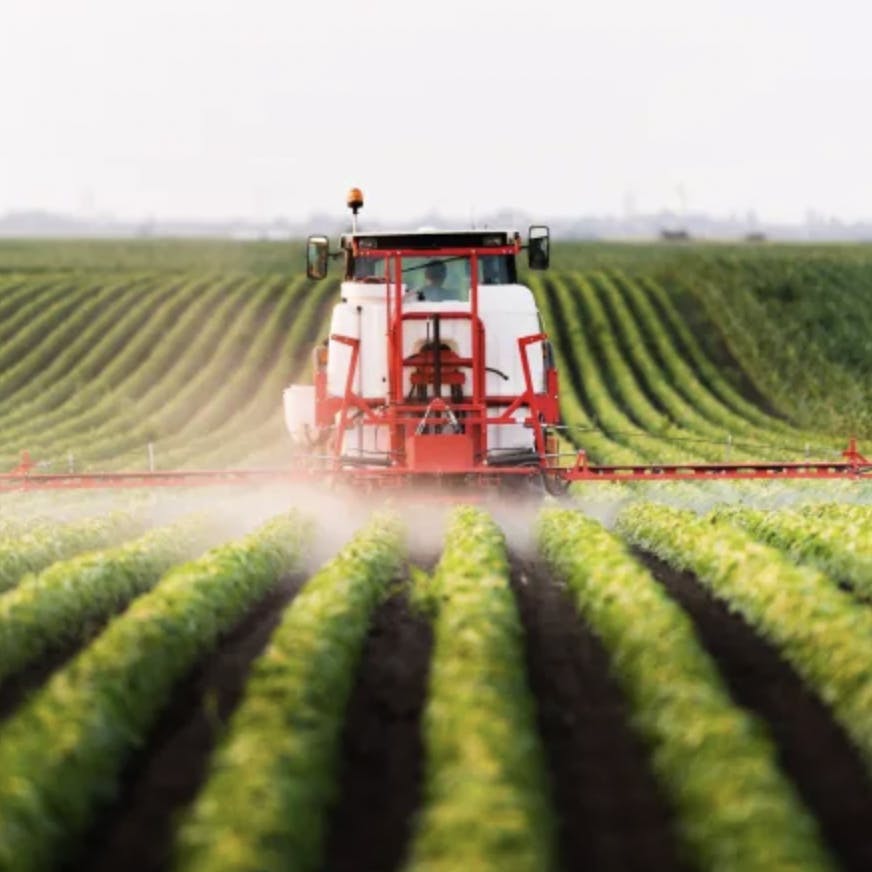
Monsanto or MonSatan? How—and Why—a St. Louis Startup Became a Hated Herbicide Giant
A chemical that kills the plants you don’t want—weeds—and keeps the plants you do—food!—seems kind of like magic. After all, weeds are the bane of farmers' lives, causing tens of billions of dollars in lost yield every year. So why is the world's largest herbicide company, Monsanto, so unpopular that it's been referred to as MonSatan? How harmful are today's herbicides for us humans, and for the environments they're seeping into? And do we need weedkillers to feed the world? In part two of our three-part series on weeds, we take on the big questions around this “bad seed” of the farming world—and the fascinating story behind the scrappy St. Louis startup that hooked the world on herbicides. Learn more about your ad choices. Visit podcastchoices.com/adchoices
Monsanto or MonSatan? How—and Why—a St. Louis Startup Became a Hated Herbicide Giant
A chemical that kills the plants you don’t want—weeds—and keeps the plants you do—food!—seems kind of like magic. After all, weeds are the bane of farmers' lives, causing tens of billions of dollars in lost yield every year. So why is the world's largest herbicide company, Monsanto, so unpopular that it's been referred to as MonSatan? How harmful are today's herbicides for us humans, and for the environments they're seeping into? And do we need weedkillers to feed the world? In part two of our three-part series on weeds, we take on the big questions around this “bad seed” of the farming world—and the fascinating story behind the scrappy St. Louis startup that hooked the world on herbicides. Learn more about your ad choices. Visit podcastchoices.com/adchoices
52:45
3 May 22

The Way the Cookie Crumbles
If you’ve baked up a batch of chocolate chip cookies, enjoyed a nice cup of tea and biscuits, or somehow scarfed a sleeve of Oreos, you will know that cookies—or biscuits, as they were known for most of their existence, and still are in much of the Anglophone world—are one of humanity's greatest inventions. But you probably won't know that they started their illustrious career, more than four thousand years ago, as a kind of beer bouillon cube! This episode, we explore how this food of soldiers and sailors was transformed as it spread all over the world, fueling trade and empire, becoming the world's first industrial food, and shaping culture and language along the way. Featuring cookies as preventative medicine, the biscuit feud that followed the Oreo, and the true story of where the chocolate chip cookie really came from—you'll want to pour yourself a nice tall glass of milk for this one! Or, you know, put on the kettle for a cuppa... Learn more about your ad choices. Visit podcastchoices.com/adchoices
The Way the Cookie Crumbles
If you’ve baked up a batch of chocolate chip cookies, enjoyed a nice cup of tea and biscuits, or somehow scarfed a sleeve of Oreos, you will know that cookies—or biscuits, as they were known for most of their existence, and still are in much of the Anglophone world—are one of humanity's greatest inventions. But you probably won't know that they started their illustrious career, more than four thousand years ago, as a kind of beer bouillon cube! This episode, we explore how this food of soldiers and sailors was transformed as it spread all over the world, fueling trade and empire, becoming the world's first industrial food, and shaping culture and language along the way. Featuring cookies as preventative medicine, the biscuit feud that followed the Oreo, and the true story of where the chocolate chip cookie really came from—you'll want to pour yourself a nice tall glass of milk for this one! Or, you know, put on the kettle for a cuppa... Learn more about your ad choices. Visit podcastchoices.com/adchoices
53:03
19 Apr 22
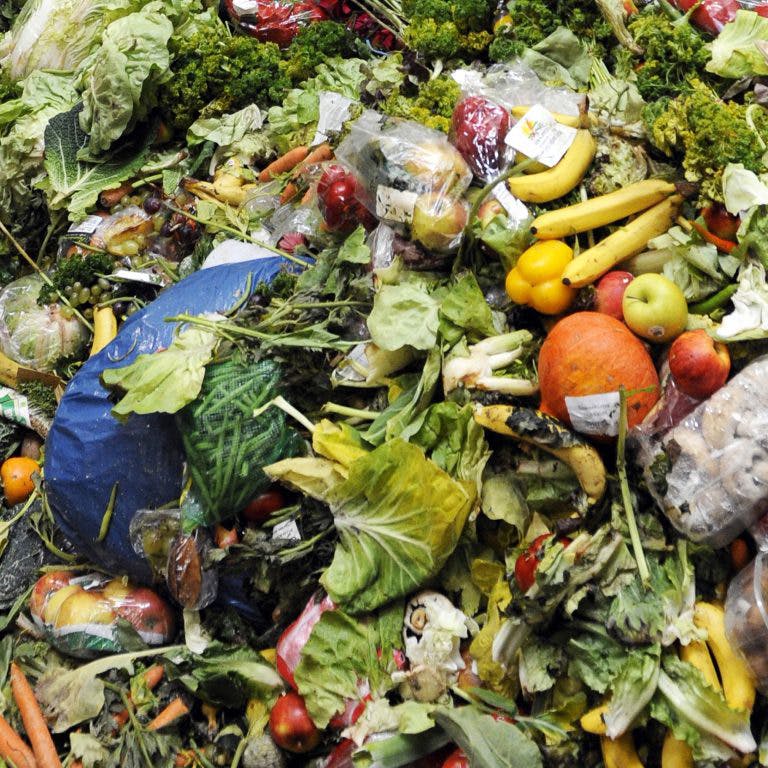
Black Gold: The Future of Food...We Throw Away
For a few weeks in 1987, trash was temporarily headline news: a barge filled with waste that would no longer fit in New York City's overflowing landfills spent months wandering up and down the East Coast with nowhere to dump its smelly, rotting cargo. The trash barge's travels triggered a long overdue public rethink of the wisdom of sending all of our waste to landfills—including food. But fast forward more than thirty years, and food still takes up more space in American landfills than anything else. About 30 to 40 percent of food produced in the US gets thrown away, rather than eaten. What's more, putting all that rotting food inside landfills produces a lot of methane, a powerful greenhouse gas. Our ancestors knew exactly what to do with food waste; the earliest descriptions of composting were written on clay tablets more than 4,000 years ago. So why didn't the GarBarge kick off a composting craze? And why is it so hard for us to keep food waste out of landfills? This episode, Gastropod visits the future of food waste: the high-tech facilities as well as the innovative policies that promise to keep our discarded food out of landfills, keep methane from escaping into the atmosphere, *and* turn those food scraps into something useful. Can a state the size of California really keep 75 percent of its food waste out of landfills, as it has pledged to do by 2025—and what will happen if it does? Listen in for compost blow-dryers, fruit-sticker bingo, and a lot of microbes! Learn more about your ad choices. Visit podcastchoices.com/adchoices
Black Gold: The Future of Food...We Throw Away
For a few weeks in 1987, trash was temporarily headline news: a barge filled with waste that would no longer fit in New York City's overflowing landfills spent months wandering up and down the East Coast with nowhere to dump its smelly, rotting cargo. The trash barge's travels triggered a long overdue public rethink of the wisdom of sending all of our waste to landfills—including food. But fast forward more than thirty years, and food still takes up more space in American landfills than anything else. About 30 to 40 percent of food produced in the US gets thrown away, rather than eaten. What's more, putting all that rotting food inside landfills produces a lot of methane, a powerful greenhouse gas. Our ancestors knew exactly what to do with food waste; the earliest descriptions of composting were written on clay tablets more than 4,000 years ago. So why didn't the GarBarge kick off a composting craze? And why is it so hard for us to keep food waste out of landfills? This episode, Gastropod visits the future of food waste: the high-tech facilities as well as the innovative policies that promise to keep our discarded food out of landfills, keep methane from escaping into the atmosphere, *and* turn those food scraps into something useful. Can a state the size of California really keep 75 percent of its food waste out of landfills, as it has pledged to do by 2025—and what will happen if it does? Listen in for compost blow-dryers, fruit-sticker bingo, and a lot of microbes! Learn more about your ad choices. Visit podcastchoices.com/adchoices
52:28
5 Apr 22
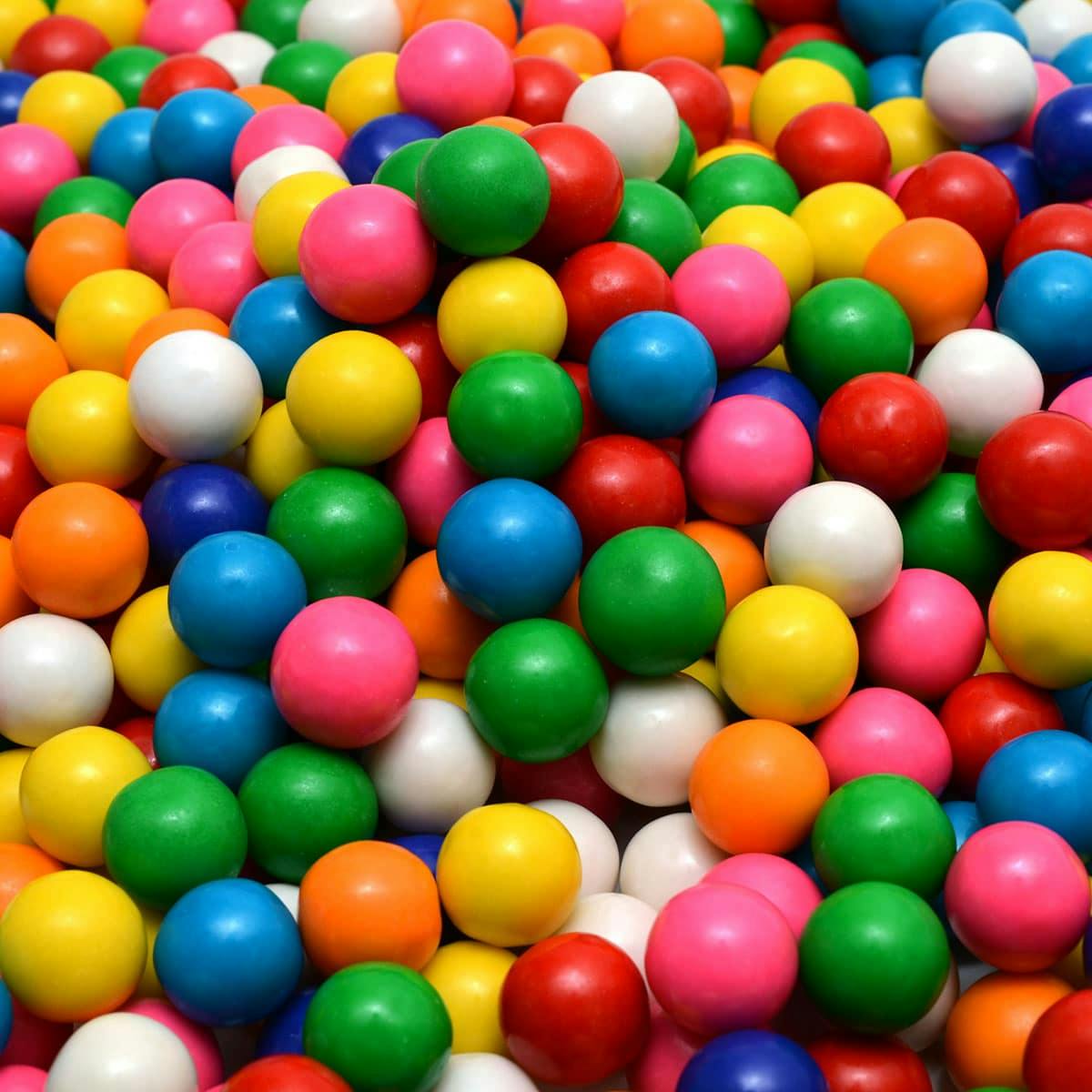
Gum's the Word: A Sticky Story
It’s sticky, it’s breath-freshening, and, according to the FDA, it’s technically food—this episode, we’re chewing on the science and history of gum! As it turns out, humans have been harvesting rubbery things to chew just for the chomp of it for thousands of years. But why? We're joined by anthropologists, archaeologists, gum scientists, and etiquette experts on our journey from the ancient birch tar-chewers of Scandinavia to the invention of modern-day, many-flavored bubblegum. How did an exiled Mexican president, a desperate Staten Island inventor, and a soap-selling runaway help gum go from something the Aztecs thought was only fit for children, the elderly, and prostitutes to a multi-billion dollar industry? Why did one country decide to ban gum altogether? And, with its popularity waning, is the gum-chewing bubble about to burst? Learn more about your ad choices. Visit podcastchoices.com/adchoices
Gum's the Word: A Sticky Story
It’s sticky, it’s breath-freshening, and, according to the FDA, it’s technically food—this episode, we’re chewing on the science and history of gum! As it turns out, humans have been harvesting rubbery things to chew just for the chomp of it for thousands of years. But why? We're joined by anthropologists, archaeologists, gum scientists, and etiquette experts on our journey from the ancient birch tar-chewers of Scandinavia to the invention of modern-day, many-flavored bubblegum. How did an exiled Mexican president, a desperate Staten Island inventor, and a soap-selling runaway help gum go from something the Aztecs thought was only fit for children, the elderly, and prostitutes to a multi-billion dollar industry? Why did one country decide to ban gum altogether? And, with its popularity waning, is the gum-chewing bubble about to burst? Learn more about your ad choices. Visit podcastchoices.com/adchoices
51:50
22 Mar 22
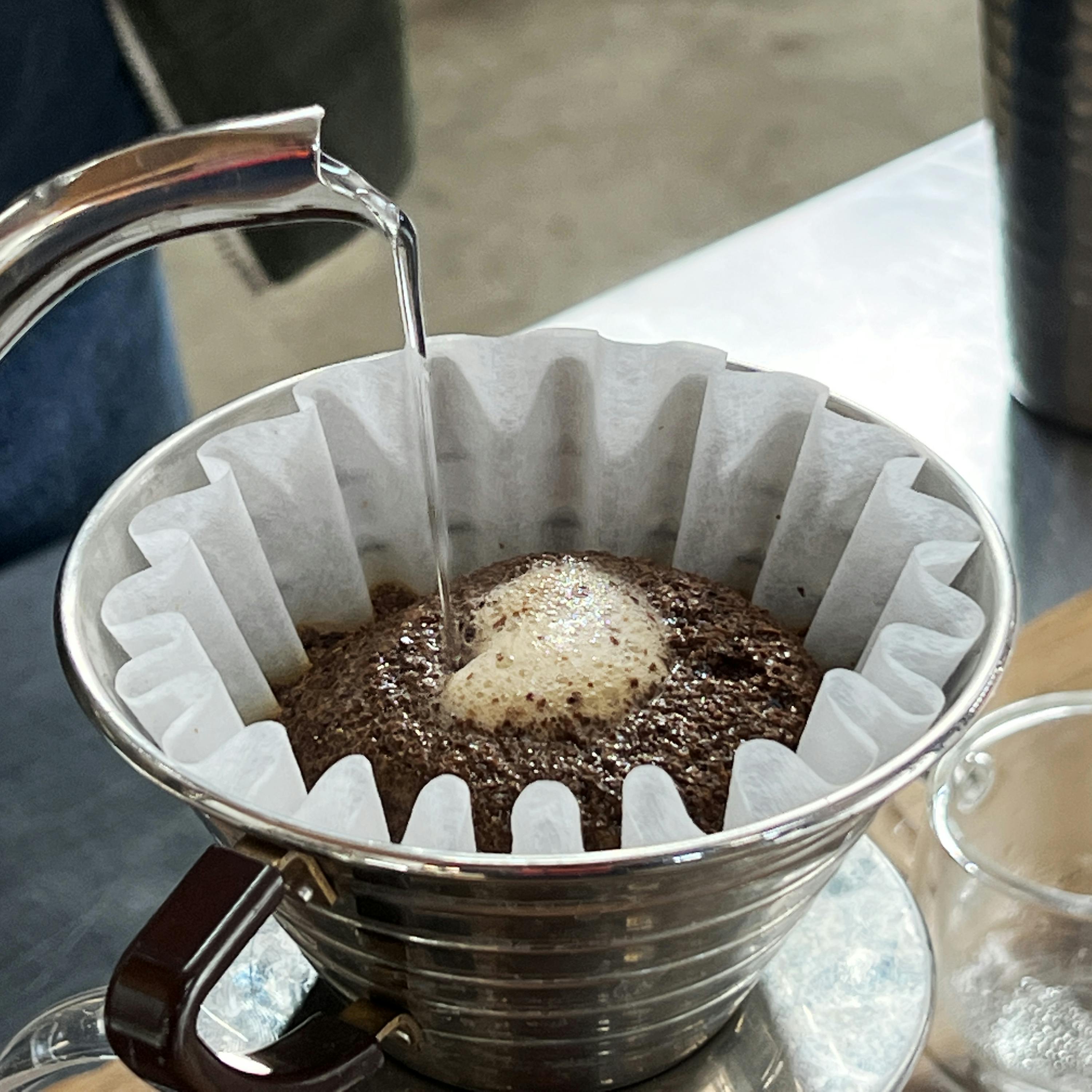
Déjà-Brew: How Coffee Got Bad, Then Worse, and, Finally, Good Again
If you hopped in a time machine for a cup of coffee from a 17th-century London coffeehouse, you would probably be a bit disappointed by their stale, bitter brews. We told you the story of how coffee jumped from its native soil in Africa to achieve near-world domination in Grounds for Revolution, the first episode in our two-part series. This episode, tune in for the story behind how new technologies, over-the-top advertising, and a forgotten female coffee visionary helped coffee go from bad, to a little better, to downright terrible, before reaching today’s Nirvana of coffee choice and quality. After all, why is a recipe with just two ingredients so hard to get just right? For the answer, we explore the science of coffee brewing, roasting, and flavor, and meet the people who shaped humanity’s pursuit of the perfect cup. All that plus Frank Sinatra, unicorn Frappuccinos, and a whole latte more in our fresh-brewed episode. Learn more about your ad choices. Visit podcastchoices.com/adchoices
Déjà-Brew: How Coffee Got Bad, Then Worse, and, Finally, Good Again
If you hopped in a time machine for a cup of coffee from a 17th-century London coffeehouse, you would probably be a bit disappointed by their stale, bitter brews. We told you the story of how coffee jumped from its native soil in Africa to achieve near-world domination in Grounds for Revolution, the first episode in our two-part series. This episode, tune in for the story behind how new technologies, over-the-top advertising, and a forgotten female coffee visionary helped coffee go from bad, to a little better, to downright terrible, before reaching today’s Nirvana of coffee choice and quality. After all, why is a recipe with just two ingredients so hard to get just right? For the answer, we explore the science of coffee brewing, roasting, and flavor, and meet the people who shaped humanity’s pursuit of the perfect cup. All that plus Frank Sinatra, unicorn Frappuccinos, and a whole latte more in our fresh-brewed episode. Learn more about your ad choices. Visit podcastchoices.com/adchoices
55:47
8 Mar 22
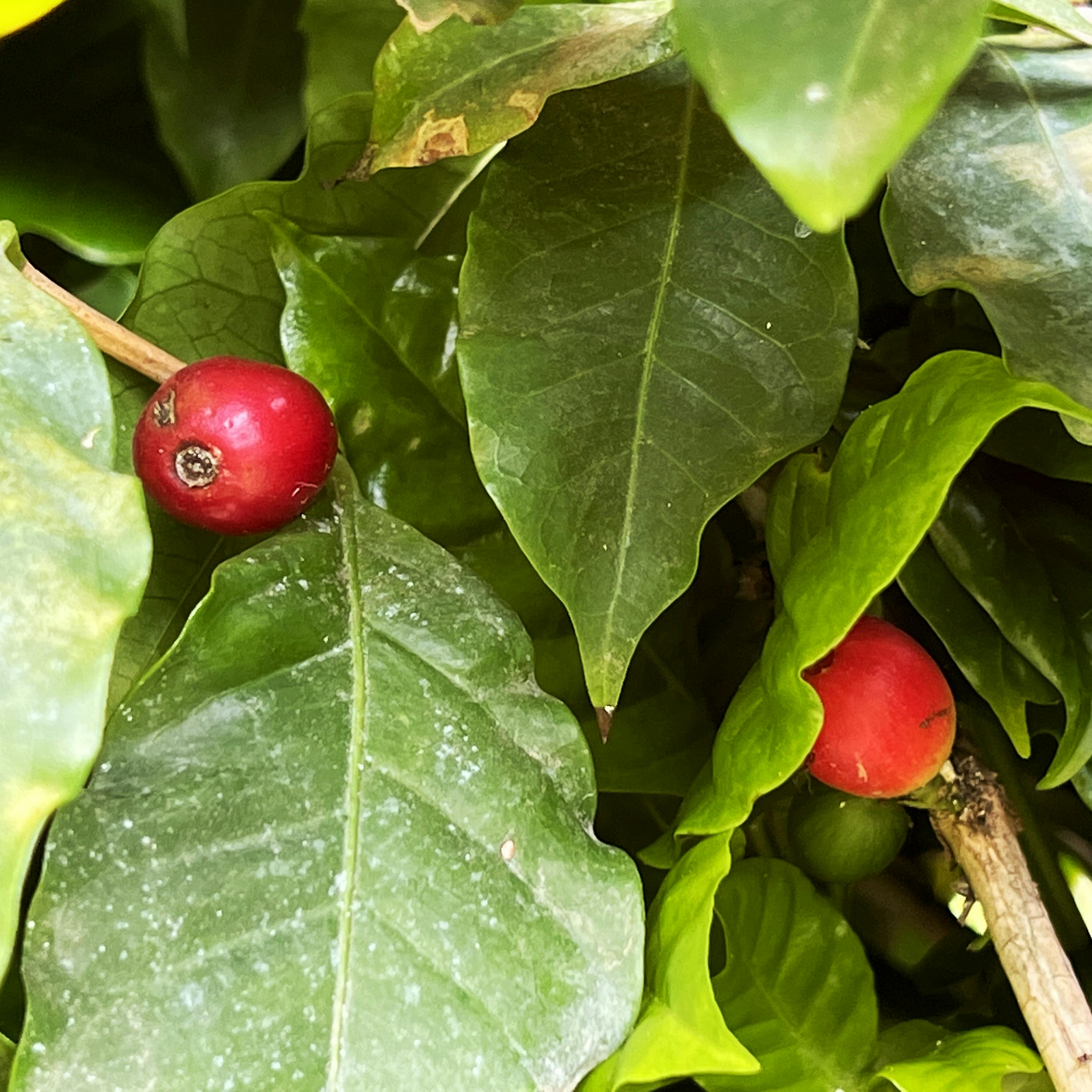
Grounds for Revolution: the Stimulating Story of How Coffee Shaped the World
About 400 years ago, a dark and mysterious stranger arrived in Europe and sent the jitters—really, shock waves—through society. That newcomer was the coffee bean, and it's hard to overstate its effects on the world. From its early days as a religious aid to its pivotal role in the founding of the London Stock Exchange, the first scientific society, and even one of the earliest forms of social media, this bitter brown beverage has democratized culture and sparked innovation, all while fueling capitalism and inequality. With the help of Gastropod's own founding godfather, Michael Pollan, as well as a crew of all-star historians, coffee growers, botanists, and coffee scientists, this episode we're telling the story of how coffee has changed everything it touched, from the humble workday to the fate of nations. This is the first of a two-part series on coffee, sponsored by Nespresso: listen now, and then come back in two weeks for the scientific secrets behind the perfect cup. Learn more about your ad choices. Visit podcastchoices.com/adchoices
Grounds for Revolution: the Stimulating Story of How Coffee Shaped the World
About 400 years ago, a dark and mysterious stranger arrived in Europe and sent the jitters—really, shock waves—through society. That newcomer was the coffee bean, and it's hard to overstate its effects on the world. From its early days as a religious aid to its pivotal role in the founding of the London Stock Exchange, the first scientific society, and even one of the earliest forms of social media, this bitter brown beverage has democratized culture and sparked innovation, all while fueling capitalism and inequality. With the help of Gastropod's own founding godfather, Michael Pollan, as well as a crew of all-star historians, coffee growers, botanists, and coffee scientists, this episode we're telling the story of how coffee has changed everything it touched, from the humble workday to the fate of nations. This is the first of a two-part series on coffee, sponsored by Nespresso: listen now, and then come back in two weeks for the scientific secrets behind the perfect cup. Learn more about your ad choices. Visit podcastchoices.com/adchoices
49:14
22 Feb 22

The Fortune Cookie Quest
No dish of General Tso's, chow mein, or beef and broccoli is complete without a fortune cookie at the end. In fact, factories churn out an estimated *three billion* of these folded confections every year, mostly for the U.S. market. So how did fortune cookies become not just a quintessential part of Chinese takeout, but also an American cultural icon? This episode, we crack open the history of the fortune cookie to get at the conflicted origins—or, at the very least, the winning lottery numbers—hidden within. With the help of author Jennifer 8 Lee, we trace the origin of this oracular cookie back in time: from a court case pitting one set of cookie pioneers in San Francisco against their Angeleno rivals, all the way to the tiny town that may have started it all...a town that's (gasp!) not even in China! Your fortune today: listen carefully, and all will be revealed. Learn more about your ad choices. Visit podcastchoices.com/adchoices
The Fortune Cookie Quest
No dish of General Tso's, chow mein, or beef and broccoli is complete without a fortune cookie at the end. In fact, factories churn out an estimated *three billion* of these folded confections every year, mostly for the U.S. market. So how did fortune cookies become not just a quintessential part of Chinese takeout, but also an American cultural icon? This episode, we crack open the history of the fortune cookie to get at the conflicted origins—or, at the very least, the winning lottery numbers—hidden within. With the help of author Jennifer 8 Lee, we trace the origin of this oracular cookie back in time: from a court case pitting one set of cookie pioneers in San Francisco against their Angeleno rivals, all the way to the tiny town that may have started it all...a town that's (gasp!) not even in China! Your fortune today: listen carefully, and all will be revealed. Learn more about your ad choices. Visit podcastchoices.com/adchoices
42:27
8 Feb 22
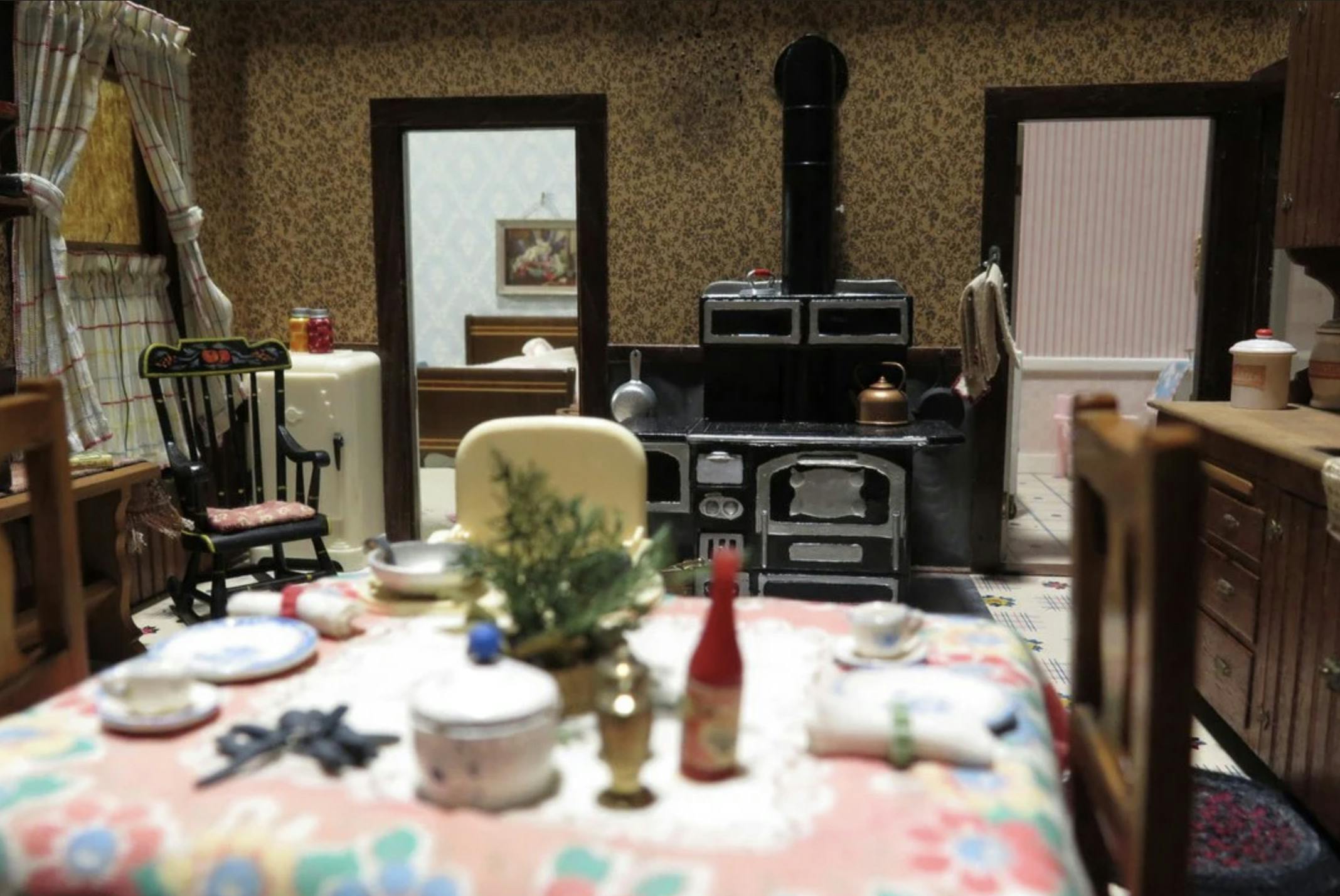
Guest Episode: Graveyard Cookies and Dollhouse Crimes
Gastropod is excited to present this guest episode—actually, two episodes—from the podcast Atlas Oscura: one all about the Spritz Cookie Gravestone and the other on the Nutshell Studies of Unexplained Deaths. Atlas Obscura is a daily celebration of the world’s most wondrous, unexpected, even strange places, from the largest organism on the planet to the world’s only museum dedicated entirely to microbes. Listen in now for a deliciously unexpected combination of recipes and graves, as well as to hear how a set of exquisite dollhouses in Baltimore, Md. shaped the field of criminal forensics. Learn more about your ad choices. Visit podcastchoices.com/adchoices
Guest Episode: Graveyard Cookies and Dollhouse Crimes
Gastropod is excited to present this guest episode—actually, two episodes—from the podcast Atlas Oscura: one all about the Spritz Cookie Gravestone and the other on the Nutshell Studies of Unexplained Deaths. Atlas Obscura is a daily celebration of the world’s most wondrous, unexpected, even strange places, from the largest organism on the planet to the world’s only museum dedicated entirely to microbes. Listen in now for a deliciously unexpected combination of recipes and graves, as well as to hear how a set of exquisite dollhouses in Baltimore, Md. shaped the field of criminal forensics. Learn more about your ad choices. Visit podcastchoices.com/adchoices
34:18
25 Jan 22
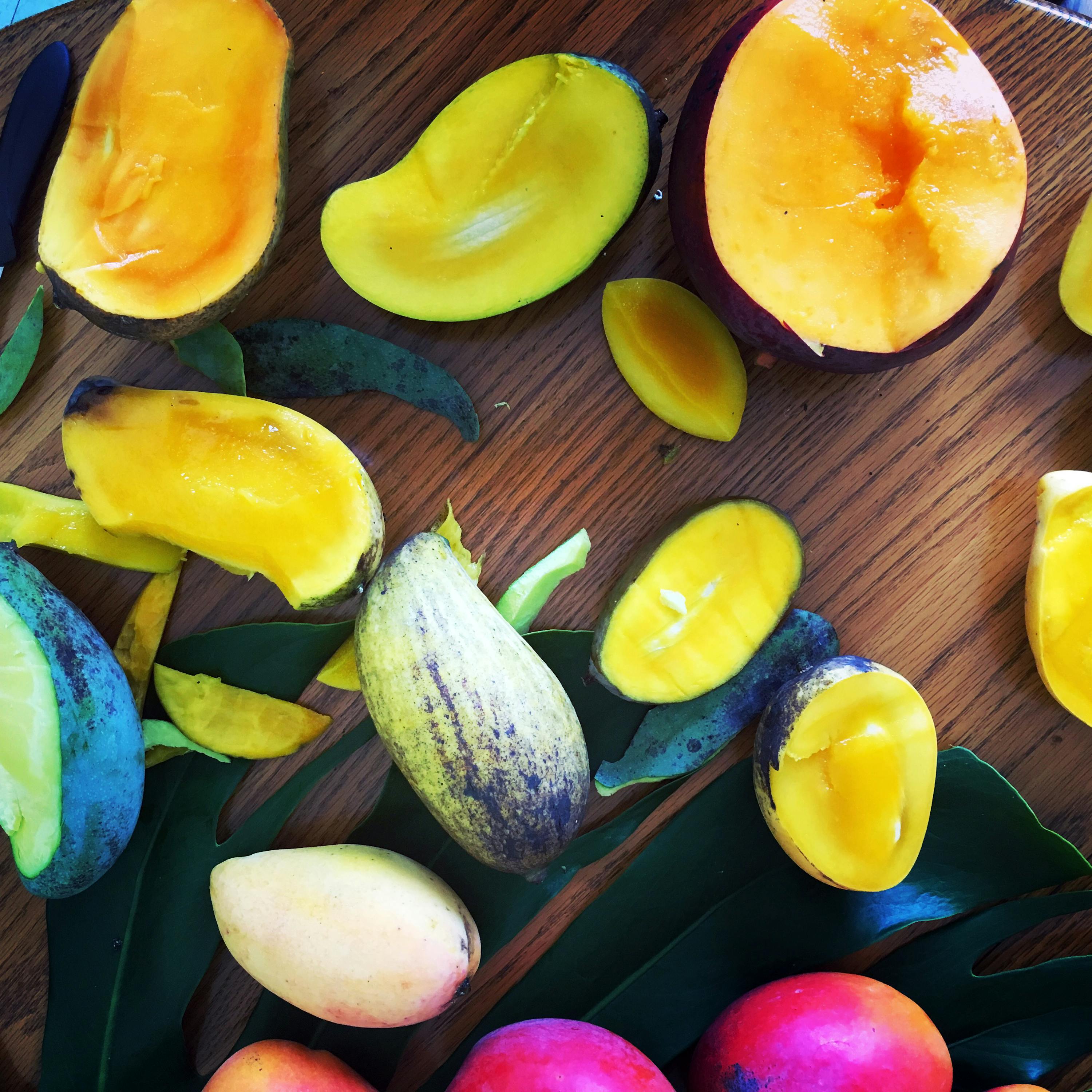
Mango Mania: How the American Mango Lost its Flavor—and How it Might Just Get it Back (encore)
Mangoes inspire passion, particularly in India, which is home to hundreds of varieties of the fruit. They are celebrated in Indian music, poetry, and art; they are mentioned in Hindu and Buddhist religious texts as well as the Kama Sutra; and Indian expats will even pay hundreds of dollars for a single, air-freighted box of their favorite variety. But while the average red-skinned mango in the American grocery store is certainly pretty, they're disappointingly bland and crunchy. This episode, we embark on a mango quest to discover how a mango should taste, why the American mango lost its flavor, and how it might just get it back. This is a story that involves a dentist from New Jersey, George W. Bush, and some Harley Davidsons, as well as a full-on mango orgy—so listen in! Learn more about your ad choices. Visit podcastchoices.com/adchoices
Mango Mania: How the American Mango Lost its Flavor—and How it Might Just Get it Back (encore)
Mangoes inspire passion, particularly in India, which is home to hundreds of varieties of the fruit. They are celebrated in Indian music, poetry, and art; they are mentioned in Hindu and Buddhist religious texts as well as the Kama Sutra; and Indian expats will even pay hundreds of dollars for a single, air-freighted box of their favorite variety. But while the average red-skinned mango in the American grocery store is certainly pretty, they're disappointingly bland and crunchy. This episode, we embark on a mango quest to discover how a mango should taste, why the American mango lost its flavor, and how it might just get it back. This is a story that involves a dentist from New Jersey, George W. Bush, and some Harley Davidsons, as well as a full-on mango orgy—so listen in! Learn more about your ad choices. Visit podcastchoices.com/adchoices
41:10
18 Jan 22
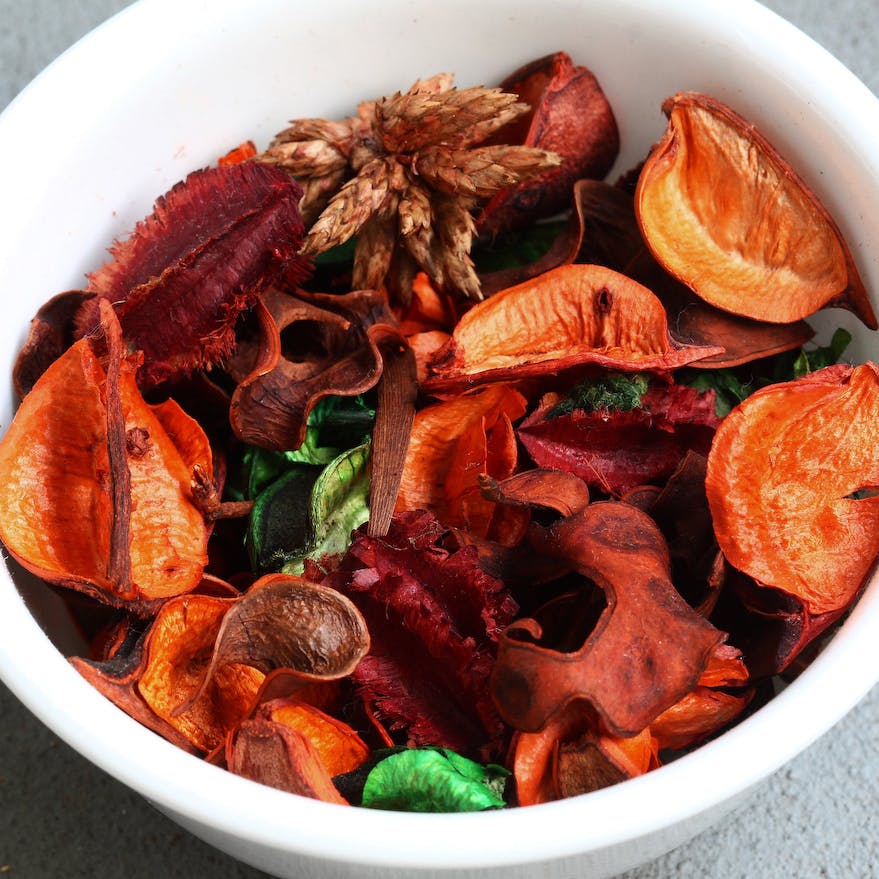
Guest Episode: Scents and Sensibility
Gastropod is excited to present this guest episode of Outside/In called Scents and Sensibility. Once upon a time, potpourri was a popular way to freshen up a space. Now, for some, it feels a bit like the lava lamp of fragrance: an outdated fad from a bygone decade. Why was potpourri so popular in the 1980’s, and what happened to it? Did the trend dry up, or just evolve? In this episode, Outside/In explores the transformation of potpourri, from the fermented mush of the Victorian era to the perfumed and colorful bag of pine cones of the eighties, and talks to a few of the people still making potpourri today. Learn more about your ad choices. Visit podcastchoices.com/adchoices
Guest Episode: Scents and Sensibility
Gastropod is excited to present this guest episode of Outside/In called Scents and Sensibility. Once upon a time, potpourri was a popular way to freshen up a space. Now, for some, it feels a bit like the lava lamp of fragrance: an outdated fad from a bygone decade. Why was potpourri so popular in the 1980’s, and what happened to it? Did the trend dry up, or just evolve? In this episode, Outside/In explores the transformation of potpourri, from the fermented mush of the Victorian era to the perfumed and colorful bag of pine cones of the eighties, and talks to a few of the people still making potpourri today. Learn more about your ad choices. Visit podcastchoices.com/adchoices
44:35
11 Jan 22
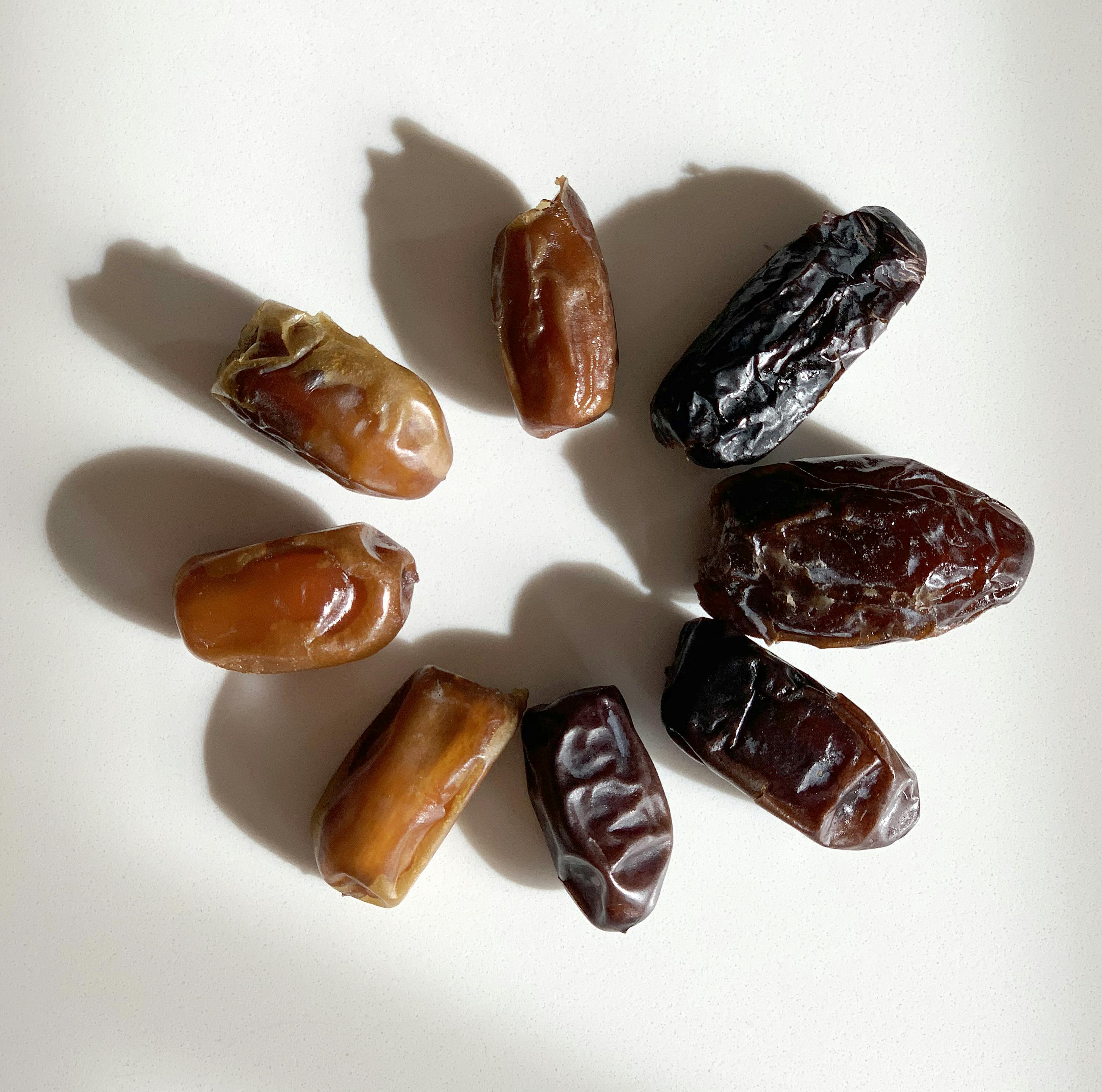
Your Mystery Date
Allow us to indulge our inner aunties: We’ve set you up on a really hot date this episode—with one of nature’s sweetest fruits, the date! Adored by pleasure-seekers and paleo dieters alike, dates are a Christmas baking standby, and the first bite when breaking fast during Ramadan. These fudgy, caramelly, brown-buttery fruits are so important in their Arab homelands that they're known as the "bread of the desert" and thought to be the tree of life in the Garden of Eden story. We reveal why this episode, plus we've also got the story of how a Native American couple in Nevada may have saved the Medjool date for the world, as well as how California built an Orientalist fantasy around its burgeoning date industry, complete with Wild East shows, hoochie-coochie dances, and camel races. All that, as well as the squidgy, soft, and oh-so-sweet dates you've been missing out on—and why you might want to play the field a little in future, at least when it comes to dates. Learn more about your ad choices. Visit podcastchoices.com/adchoices
Your Mystery Date
Allow us to indulge our inner aunties: We’ve set you up on a really hot date this episode—with one of nature’s sweetest fruits, the date! Adored by pleasure-seekers and paleo dieters alike, dates are a Christmas baking standby, and the first bite when breaking fast during Ramadan. These fudgy, caramelly, brown-buttery fruits are so important in their Arab homelands that they're known as the "bread of the desert" and thought to be the tree of life in the Garden of Eden story. We reveal why this episode, plus we've also got the story of how a Native American couple in Nevada may have saved the Medjool date for the world, as well as how California built an Orientalist fantasy around its burgeoning date industry, complete with Wild East shows, hoochie-coochie dances, and camel races. All that, as well as the squidgy, soft, and oh-so-sweet dates you've been missing out on—and why you might want to play the field a little in future, at least when it comes to dates. Learn more about your ad choices. Visit podcastchoices.com/adchoices
50:59
21 Dec 21

The Most Interesting Oil in the World
Here’s a little riddle for you: What’s all around you, but can’t be seen, smelled, or tasted? Hint: It’s in your Oreos, Nutella, instant noodles, dish soap, shampoo, lipstick, potato chips, pizza dough, packaged bread, chocolate bars, ice-cream, and biodiesel. The answer is ... palm oil, the hidden ingredient on just about every aisle of the grocery store. It's the most ubiquitous, most important, most interesting oil that most of us don't really know. But palm oil wasn’t always so big, or so anonymous—in its West African homeland, it’s a fragrant red oil traditionally used in cooking and ceremonies. So how did palm oil go global? What does it have to do with the European colonization of Africa, soap for grimy factory workers, Girl Scout cookies, and Alfred Nobel of Nobel Prize-fame? How has growing demand for all things palm oil driven deforestation and peat fires in Southeast Asia—and what can we do if we want to rethink our destructive palm oil addiction? Learn more about your ad choices. Visit podcastchoices.com/adchoices
The Most Interesting Oil in the World
Here’s a little riddle for you: What’s all around you, but can’t be seen, smelled, or tasted? Hint: It’s in your Oreos, Nutella, instant noodles, dish soap, shampoo, lipstick, potato chips, pizza dough, packaged bread, chocolate bars, ice-cream, and biodiesel. The answer is ... palm oil, the hidden ingredient on just about every aisle of the grocery store. It's the most ubiquitous, most important, most interesting oil that most of us don't really know. But palm oil wasn’t always so big, or so anonymous—in its West African homeland, it’s a fragrant red oil traditionally used in cooking and ceremonies. So how did palm oil go global? What does it have to do with the European colonization of Africa, soap for grimy factory workers, Girl Scout cookies, and Alfred Nobel of Nobel Prize-fame? How has growing demand for all things palm oil driven deforestation and peat fires in Southeast Asia—and what can we do if we want to rethink our destructive palm oil addiction? Learn more about your ad choices. Visit podcastchoices.com/adchoices
50:42
7 Dec 21
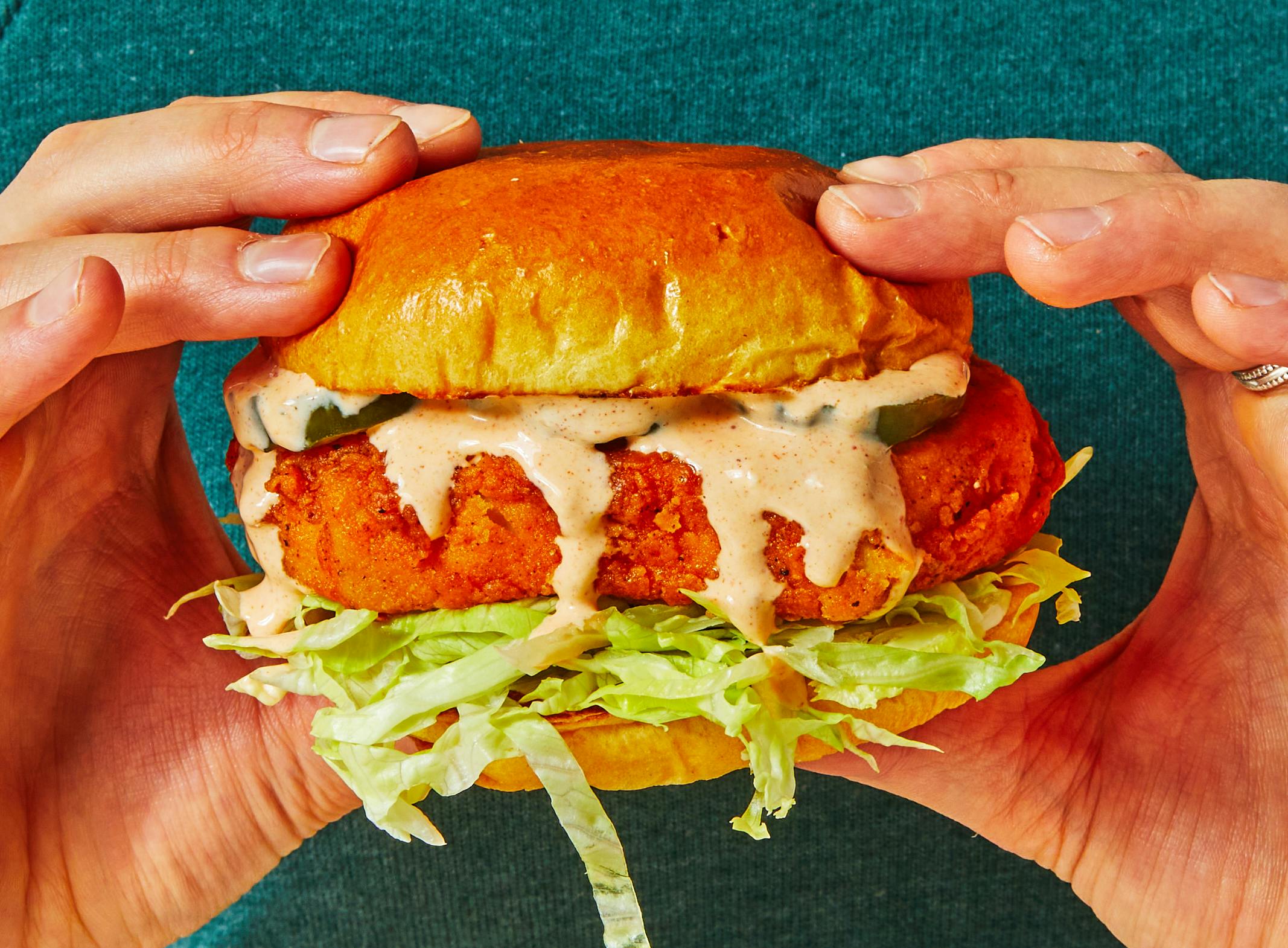
Are Plant- and Fungus-Based Meats Really Better than the Real Thing?
Move over, beef: there’s a new burger in town. Plant-based meats are sizzling hot right now; in 2020 alone, the alternative meat industry saw a record $3.1 billion in investment, with 112 new plant-based brands launching in supermarkets. These juicy, savory, chewy fake burgers are a far cry from the dry, weird-tasting veggie patties of the past. This episode, we visit the Impossible Foods labs to swig some of the animal-free molecule that makes their meatless meat bleed, try fungal food start-up Meati's prototype "chicken" cutlet, and speak to the scientists and historians who can help us compare these new fake meats to their predecessors—and to real meat! Can a plant-based sausage roll be considered kosher or halal? Are plant-based meats actually better for you and for the environment? And how might a mysterious protein-powerhouse fungus named Rosita help feed the world? Learn more about your ad choices. Visit podcastchoices.com/adchoices
Are Plant- and Fungus-Based Meats Really Better than the Real Thing?
Move over, beef: there’s a new burger in town. Plant-based meats are sizzling hot right now; in 2020 alone, the alternative meat industry saw a record $3.1 billion in investment, with 112 new plant-based brands launching in supermarkets. These juicy, savory, chewy fake burgers are a far cry from the dry, weird-tasting veggie patties of the past. This episode, we visit the Impossible Foods labs to swig some of the animal-free molecule that makes their meatless meat bleed, try fungal food start-up Meati's prototype "chicken" cutlet, and speak to the scientists and historians who can help us compare these new fake meats to their predecessors—and to real meat! Can a plant-based sausage roll be considered kosher or halal? Are plant-based meats actually better for you and for the environment? And how might a mysterious protein-powerhouse fungus named Rosita help feed the world? Learn more about your ad choices. Visit podcastchoices.com/adchoices
55:55
24 Nov 21

Guest Episode: The Doorbell by Nice Try!
This week we're bringing you an episode from Nice Try! Nice Try’s second season, Interior, is all about the lifestyle products that have been sold to us over and over, and the promises of self improvement they have made, kept, and broken. Their foray into the private utopia of the home starts with the doorbell. Learn more about your ad choices. Visit podcastchoices.com/adchoices
Guest Episode: The Doorbell by Nice Try!
This week we're bringing you an episode from Nice Try! Nice Try’s second season, Interior, is all about the lifestyle products that have been sold to us over and over, and the promises of self improvement they have made, kept, and broken. Their foray into the private utopia of the home starts with the doorbell. Learn more about your ad choices. Visit podcastchoices.com/adchoices
46:39
17 Nov 21
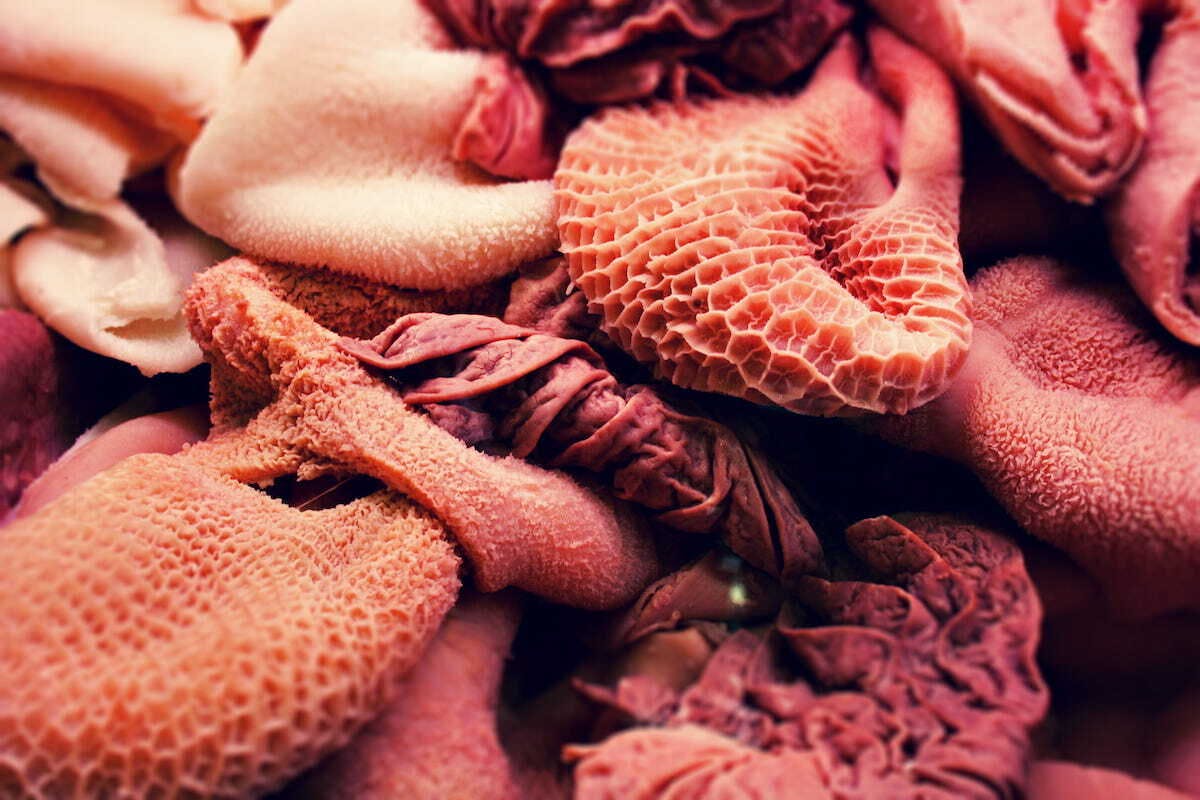
Balls *and* Brains: The Science and History of Offal
It’s pretty rare to find organ meat on the dinner table in most American households today, but 90 years ago, the earliest editions of The Joy of Cooking contained dozens of recipes for liver, sweetbreads, and even testicles. For much of history, offal (as organ meat is called) was considered the best part of the animal—so what happened? Why are brains banned in the UK and lungs illegal to sell in the US, and why are Scottish haggis-makers up in arms about it? And the question we’re sure you’ve all been pondering: What do testicles taste like? With the help of Jonathan Reisman, author of the new book The Unseen Body: A Doctor's Journey Through the Hidden Wonders of the Human Anatomy, we explore how the vital functions of various animal organs affect their flavor and taste. Jon’s wife, Anna Wexler, also an academic and a writer, joins us to impart the wisdom she’s gained from years as a judge at the World Testicle Cooking Championship (aka Test Fest). We learn about the culinary history of offal from cookbook author Jennifer McLagan, and butcher Sam Garwin comes over to help us prepare up a massive organ meat feast: a Norwegian heart and lung pate (yes, we scored some lung!); a Georgian testicle stew; rabbit, chicken, and beef liver and onions; and breaded, fried lamb brains. Listen to find out which one we liked best, and which ones were just plain offal! (Sorry, we couldn’t resist.) Learn more about your ad choices. Visit podcastchoices.com/adchoices
Balls *and* Brains: The Science and History of Offal
It’s pretty rare to find organ meat on the dinner table in most American households today, but 90 years ago, the earliest editions of The Joy of Cooking contained dozens of recipes for liver, sweetbreads, and even testicles. For much of history, offal (as organ meat is called) was considered the best part of the animal—so what happened? Why are brains banned in the UK and lungs illegal to sell in the US, and why are Scottish haggis-makers up in arms about it? And the question we’re sure you’ve all been pondering: What do testicles taste like? With the help of Jonathan Reisman, author of the new book The Unseen Body: A Doctor's Journey Through the Hidden Wonders of the Human Anatomy, we explore how the vital functions of various animal organs affect their flavor and taste. Jon’s wife, Anna Wexler, also an academic and a writer, joins us to impart the wisdom she’s gained from years as a judge at the World Testicle Cooking Championship (aka Test Fest). We learn about the culinary history of offal from cookbook author Jennifer McLagan, and butcher Sam Garwin comes over to help us prepare up a massive organ meat feast: a Norwegian heart and lung pate (yes, we scored some lung!); a Georgian testicle stew; rabbit, chicken, and beef liver and onions; and breaded, fried lamb brains. Listen to find out which one we liked best, and which ones were just plain offal! (Sorry, we couldn’t resist.) Learn more about your ad choices. Visit podcastchoices.com/adchoices
51:12
9 Nov 21
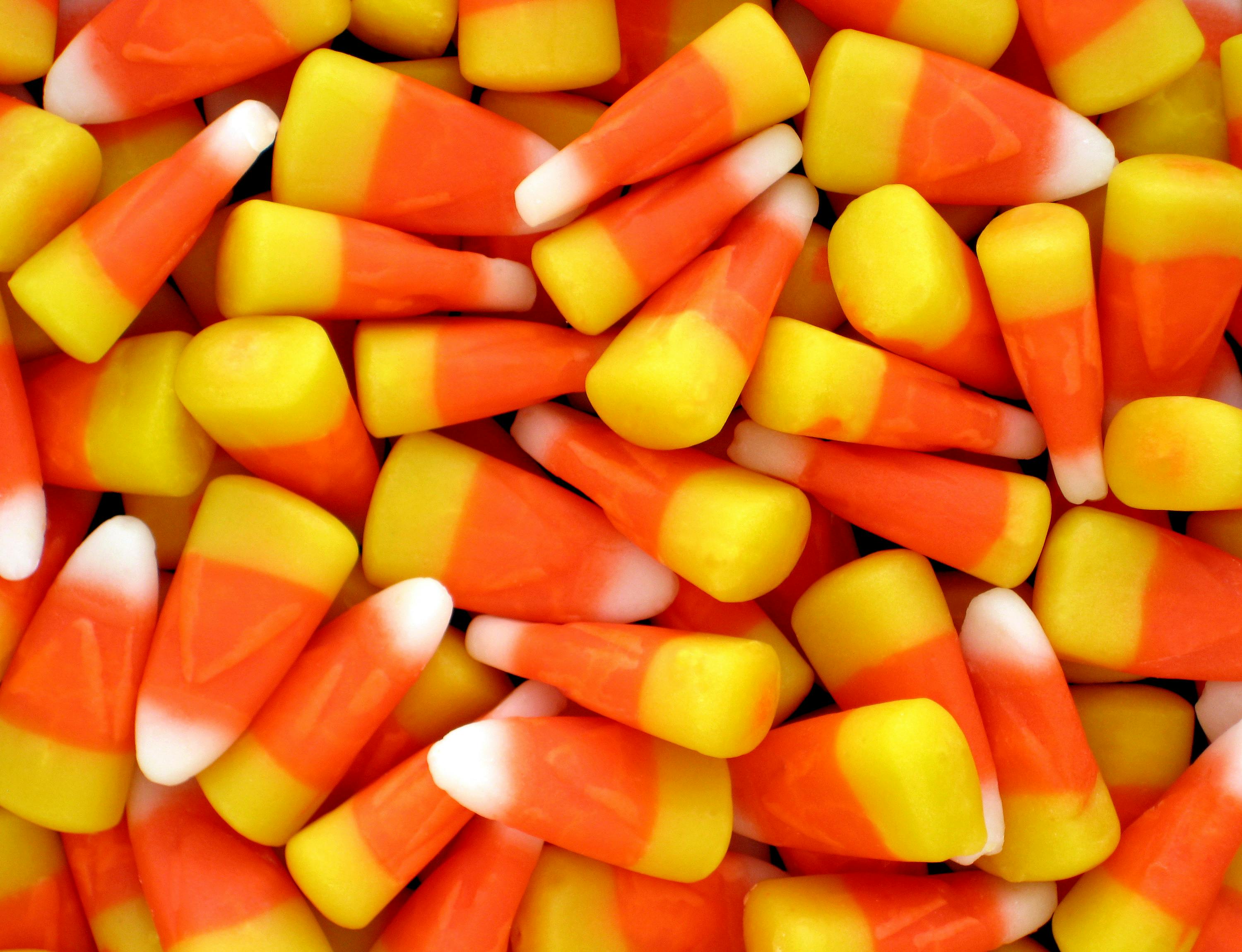
Trick or Treat: Soul Cakes, Candy Corn, and Sugar Skulls Galore!
If you live in the U.S., chances are, your first hint of fall isn’t a russet-colored leaf landing on the sidewalk—it’s the orange-wrappered candies taking over the aisles of your local grocery and convenience stores. Forget decorative gourds: it’s officially Halloween candy season! But how did a 2,000-year-old Celtic festival marking the sun's death and the beginning of winter morph into a family-friendly sugar-fest? With the help of Heather Cox Richardson and Joanne Freeman, historians and hosts of the Vox Media Podcast Network show Now & Then, we explore the surprisingly recent introduction of trick-or-treating, and the all-American invention of Halloween as the ultimate candy-permissive, religion-free Frankenholiday. Plus, why do so many cultures around the world celebrate deathy things at this time of year—and why do so many of them involve sugar? All this, plus a rigorous candy corn tasting bravely undertaken by your indefatigable hosts! Learn more about your ad choices. Visit podcastchoices.com/adchoices
Trick or Treat: Soul Cakes, Candy Corn, and Sugar Skulls Galore!
If you live in the U.S., chances are, your first hint of fall isn’t a russet-colored leaf landing on the sidewalk—it’s the orange-wrappered candies taking over the aisles of your local grocery and convenience stores. Forget decorative gourds: it’s officially Halloween candy season! But how did a 2,000-year-old Celtic festival marking the sun's death and the beginning of winter morph into a family-friendly sugar-fest? With the help of Heather Cox Richardson and Joanne Freeman, historians and hosts of the Vox Media Podcast Network show Now & Then, we explore the surprisingly recent introduction of trick-or-treating, and the all-American invention of Halloween as the ultimate candy-permissive, religion-free Frankenholiday. Plus, why do so many cultures around the world celebrate deathy things at this time of year—and why do so many of them involve sugar? All this, plus a rigorous candy corn tasting bravely undertaken by your indefatigable hosts! Learn more about your ad choices. Visit podcastchoices.com/adchoices
51:54
26 Oct 21
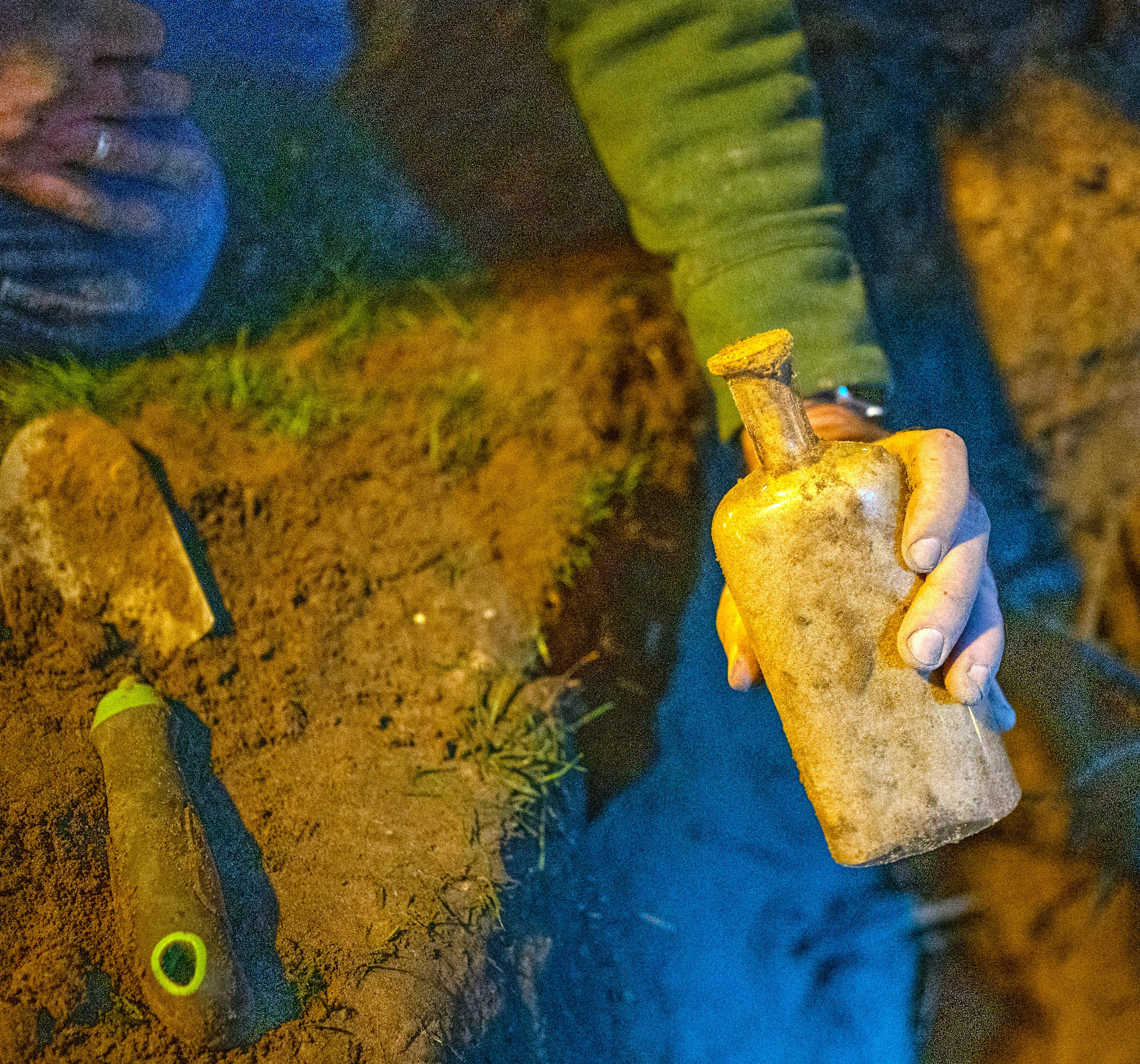
Buried Treasure: Weeds, Seeds, and Zombies
If you’ve ever engaged in mortal combat with a patch of ragweed, dandelion, or crabgrass in your garden, you might understand the twin emotions of rage and begrudging admiration when it comes to weeds: They. Just. Won’t. Die. When it comes to commercial agriculture, weeds pose a more existential threat—globally, the proportion of our harvest that is lost to weed infiltration is enough to feed millions, and, even with advanced herbicides, weeds cost farmers in North America an estimated $33 billion in lost yield each year. No matter what we throw at them, weeds just seem to get stronger. This episode, we follow a group of scientists along on a 149-year-old quest to see just how long weeds can survive—and, along the way, figure out what we can learn from weeds, what we really ought to thank them for, and what is a weed, anyhow? Listen in now for zombie seeds, a midnight treasure hunt, and the wild ways that weeds have outwitted us for millennia. Learn more about your ad choices. Visit podcastchoices.com/adchoices
Buried Treasure: Weeds, Seeds, and Zombies
If you’ve ever engaged in mortal combat with a patch of ragweed, dandelion, or crabgrass in your garden, you might understand the twin emotions of rage and begrudging admiration when it comes to weeds: They. Just. Won’t. Die. When it comes to commercial agriculture, weeds pose a more existential threat—globally, the proportion of our harvest that is lost to weed infiltration is enough to feed millions, and, even with advanced herbicides, weeds cost farmers in North America an estimated $33 billion in lost yield each year. No matter what we throw at them, weeds just seem to get stronger. This episode, we follow a group of scientists along on a 149-year-old quest to see just how long weeds can survive—and, along the way, figure out what we can learn from weeds, what we really ought to thank them for, and what is a weed, anyhow? Listen in now for zombie seeds, a midnight treasure hunt, and the wild ways that weeds have outwitted us for millennia. Learn more about your ad choices. Visit podcastchoices.com/adchoices
49:36
11 Oct 21
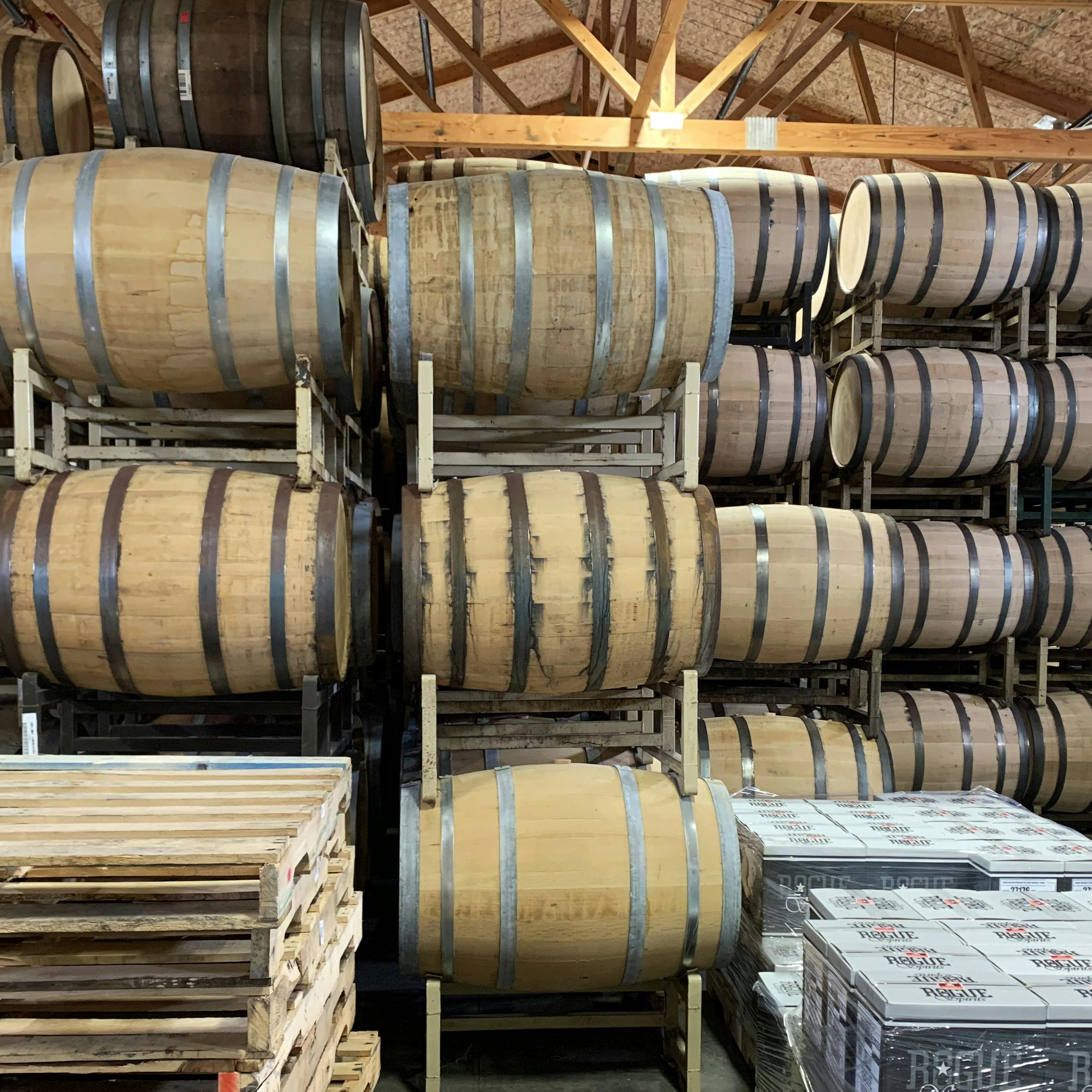
The Barrel That Could Save A Forest
Bourbon has to be aged in barrels, by law; whiskey usually spends years in barrels, by custom; and between 20-30 percent of wine spends some time in one. And almost all of those wooden vessels are made from just two kinds of tree: American white oak and French oak. This episode, we tell the story—and try the whiskey—of the distiller and the barrel-maker who, together, are figuring out how to use the huge, elegant, native oak of the Pacific Northwest to create new flavor, and, in the process, restore an ecosystem that has nearly vanished. Along the way, we figure out the science behind how a barrel affects the taste of what you sip, and we trace the trajectory of barrels from their pinnacle, as the go-to container for everything from fish to petroleum, to their current niche status. Finally, we explore why oak became the default wood for barrel-making—and meet the coopers experimenting with different woods, and an entirely new flavor universe for booze. Learn more about your ad choices. Visit podcastchoices.com/adchoices
The Barrel That Could Save A Forest
Bourbon has to be aged in barrels, by law; whiskey usually spends years in barrels, by custom; and between 20-30 percent of wine spends some time in one. And almost all of those wooden vessels are made from just two kinds of tree: American white oak and French oak. This episode, we tell the story—and try the whiskey—of the distiller and the barrel-maker who, together, are figuring out how to use the huge, elegant, native oak of the Pacific Northwest to create new flavor, and, in the process, restore an ecosystem that has nearly vanished. Along the way, we figure out the science behind how a barrel affects the taste of what you sip, and we trace the trajectory of barrels from their pinnacle, as the go-to container for everything from fish to petroleum, to their current niche status. Finally, we explore why oak became the default wood for barrel-making—and meet the coopers experimenting with different woods, and an entirely new flavor universe for booze. Learn more about your ad choices. Visit podcastchoices.com/adchoices
51:01
28 Sep 21
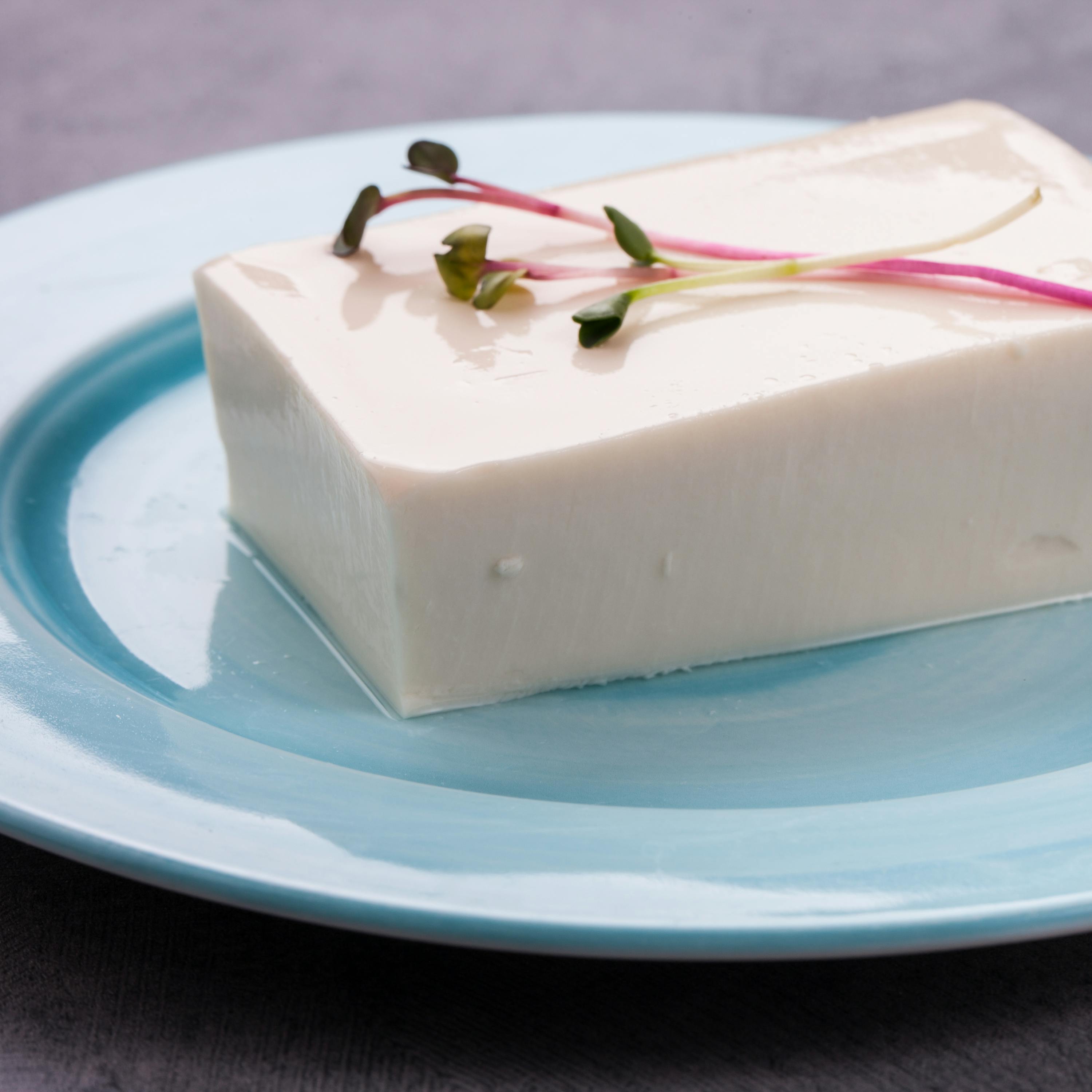
Tofu for You: Meet the Cult Leader, the Spy, and the Pioneering Woman Chinese Doctor Who Brought Tofu to the West
For a lot of Americans, tofu conjures up images of bland, squishy cubes: a sorry alternative to meat. Even in Asia, where tofu was born, the soybean was initially seen as unappetizing, not to mention flatulence inducing. This episode, we tell the story of how people in what's now northeastern China figured out how to turn this legume of last resort into an array of nutritious, delicious foods, from slippery beancurd skins to silken puddings, and chewy soy crumbles to funky, fermented hairy tofu. Then we introduce the parade of unlikely figures—including Ben Franklin and a 1970s acid casualty who believed he could communicate telepathically with animals—who finally brought this "soybean cheese" to the Western masses. And, finally, we meet the twenty-first century immigrant entrepreneur trying to rebrand tofu from virtuous but boring into something much more delicious and desirable. Listen in now for all that plus Camembert tofu, anarchist zines, and the curious origins of that Thanksgiving favorite, Tofurkey. Learn more about your ad choices. Visit podcastchoices.com/adchoices
Tofu for You: Meet the Cult Leader, the Spy, and the Pioneering Woman Chinese Doctor Who Brought Tofu to the West
For a lot of Americans, tofu conjures up images of bland, squishy cubes: a sorry alternative to meat. Even in Asia, where tofu was born, the soybean was initially seen as unappetizing, not to mention flatulence inducing. This episode, we tell the story of how people in what's now northeastern China figured out how to turn this legume of last resort into an array of nutritious, delicious foods, from slippery beancurd skins to silken puddings, and chewy soy crumbles to funky, fermented hairy tofu. Then we introduce the parade of unlikely figures—including Ben Franklin and a 1970s acid casualty who believed he could communicate telepathically with animals—who finally brought this "soybean cheese" to the Western masses. And, finally, we meet the twenty-first century immigrant entrepreneur trying to rebrand tofu from virtuous but boring into something much more delicious and desirable. Listen in now for all that plus Camembert tofu, anarchist zines, and the curious origins of that Thanksgiving favorite, Tofurkey. Learn more about your ad choices. Visit podcastchoices.com/adchoices
51:13
14 Sep 21

The Great Gastropod Pudding Off (encore)
Four bakers, one evening, and one challenge: Who can steam the best spotted dick? On this week’s action-packed episode, Tom Gilliford, Selasi Gbormittah, and Yan Tsou of Great British Bake-Off fame, along with honorary Gastropod member (and Cynthia’s partner) Tim Buntel, compete to see who can master this most classic of British puddings for the first-ever Great Gastropod Pudding Off! But what in the world is spotted dick? “It’s got nostalgia, mystery, horror, and comedy—it’s a perfect British dish,” explained British food designer and jellymonger Sam Bompas, who joined us to judge the competition. Listen in as Tom tries to beat his rival Selasi, Yan revives the flavor combination that robbed her of a Bake Off victory, and Tim tests out his Yankee-style pudding on the Brits. While the four bakers duke it out in the kitchen, we dive into the history and science of British pudding to find out what makes a pudding a pudding, the secret ingredient that will give your pud a lovely light texture, and why anyone would name a dessert “spotted dick.” Learn more about your ad choices. Visit podcastchoices.com/adchoices
The Great Gastropod Pudding Off (encore)
Four bakers, one evening, and one challenge: Who can steam the best spotted dick? On this week’s action-packed episode, Tom Gilliford, Selasi Gbormittah, and Yan Tsou of Great British Bake-Off fame, along with honorary Gastropod member (and Cynthia’s partner) Tim Buntel, compete to see who can master this most classic of British puddings for the first-ever Great Gastropod Pudding Off! But what in the world is spotted dick? “It’s got nostalgia, mystery, horror, and comedy—it’s a perfect British dish,” explained British food designer and jellymonger Sam Bompas, who joined us to judge the competition. Listen in as Tom tries to beat his rival Selasi, Yan revives the flavor combination that robbed her of a Bake Off victory, and Tim tests out his Yankee-style pudding on the Brits. While the four bakers duke it out in the kitchen, we dive into the history and science of British pudding to find out what makes a pudding a pudding, the secret ingredient that will give your pud a lovely light texture, and why anyone would name a dessert “spotted dick.” Learn more about your ad choices. Visit podcastchoices.com/adchoices
57:11
30 Aug 21

It's All Going to Pot: the Science and Economics of Edibles
If you thought it was high time for us to get into the weeds with cannabis science and economics, then you’re in the right place: Welcome back to part two of our miniseries on cannabis edibles! This episode, we meet with leading cannabis researcher Adie Rae to figure out the biology behind the difference between inhaling and eating weed, as well as what we do and don't know about the potential health benefits and harms of cannabis. Can THC help you sleep? Is all this trendy CBD-infused everything on supermarket shelves actually doing anything? All that, plus we get into the surprising challenges facing a business that is still federally illegal, and talk to the entrepreneurs, farmers, and lawyers who are helping craft policy to make sure this new green gold rush benefits the communities most harmed by cannabis prohibition. And, of course, there's the biggest question of all: Will Cynthia get high for the first time ever? Listen in to find out! Learn more about your ad choices. Visit podcastchoices.com/adchoices
It's All Going to Pot: the Science and Economics of Edibles
If you thought it was high time for us to get into the weeds with cannabis science and economics, then you’re in the right place: Welcome back to part two of our miniseries on cannabis edibles! This episode, we meet with leading cannabis researcher Adie Rae to figure out the biology behind the difference between inhaling and eating weed, as well as what we do and don't know about the potential health benefits and harms of cannabis. Can THC help you sleep? Is all this trendy CBD-infused everything on supermarket shelves actually doing anything? All that, plus we get into the surprising challenges facing a business that is still federally illegal, and talk to the entrepreneurs, farmers, and lawyers who are helping craft policy to make sure this new green gold rush benefits the communities most harmed by cannabis prohibition. And, of course, there's the biggest question of all: Will Cynthia get high for the first time ever? Listen in to find out! Learn more about your ad choices. Visit podcastchoices.com/adchoices
01:01:59
17 Aug 21
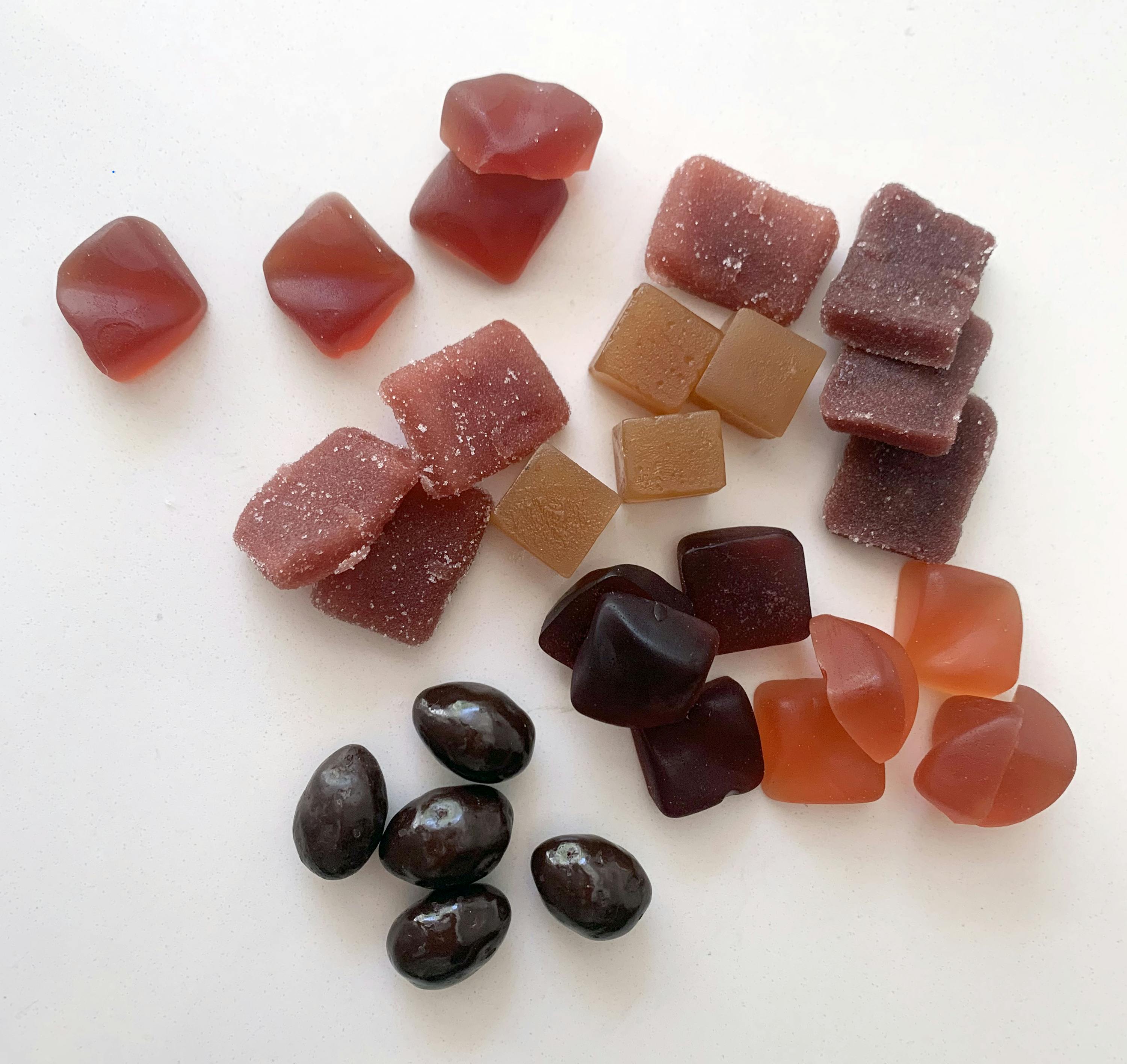
Baked: How Pot Brownies and Pate de Fruits Fueled an Edible Cannabis Revolution
Edible cannabis products are hot right now: Snoop's got some, Willie Nelson's got some—even Martha Stewart's making fancy French-style gummies. In states where it’s legal, you can buy everything from marshmallows to macarons, all laden with THC, the psychoactive compound in cannabis. This commercial boom may be recent, but the history of edibles goes way, way back to the origins of the plant thousands of years ago in the Himalayas—in fact, people were eating (and drinking) cannabis long before they were inhaling it. So when did cannabis start being smoked instead—and how did it find itself not only banned, but classified as more dangerous than both opium and meth? With the help of the woman whose family ran America's first edibles empire, we also discover why the pot brownie is America’s quintessential edible, and how this humble, slightly mulchy baked good helped make weed legal again. Plus: How today's cannabis chefs are upping the ante and taking weed recipes to new—ahem—highs (please allow us just this one pun). Learn more about your ad choices. Visit podcastchoices.com/adchoices
Baked: How Pot Brownies and Pate de Fruits Fueled an Edible Cannabis Revolution
Edible cannabis products are hot right now: Snoop's got some, Willie Nelson's got some—even Martha Stewart's making fancy French-style gummies. In states where it’s legal, you can buy everything from marshmallows to macarons, all laden with THC, the psychoactive compound in cannabis. This commercial boom may be recent, but the history of edibles goes way, way back to the origins of the plant thousands of years ago in the Himalayas—in fact, people were eating (and drinking) cannabis long before they were inhaling it. So when did cannabis start being smoked instead—and how did it find itself not only banned, but classified as more dangerous than both opium and meth? With the help of the woman whose family ran America's first edibles empire, we also discover why the pot brownie is America’s quintessential edible, and how this humble, slightly mulchy baked good helped make weed legal again. Plus: How today's cannabis chefs are upping the ante and taking weed recipes to new—ahem—highs (please allow us just this one pun). Learn more about your ad choices. Visit podcastchoices.com/adchoices
56:53
3 Aug 21

The Bottle vs. Tap Battle Finale: Alkaline H2O, Lead Pipes, and, Yes, Water Sommeliers
As promised, it's time for the final splashdown in the battle of bottled vs. tap water. When we left off last episode, bottled water had staged a miraculous comeback thanks to Nike, yuppies, and Orson Welles. Today, it's America's favorite liquid refreshment: we buy more bottled water by volume than any other packaged beverage, even though you can get its less glamorous cousin, tap, delivered directly to your home for mere pennies. So, is bottled water somehow better than tap? Is it safer, or even just nicer tasting? This episode, we dive into the science behind the taste of water (spoiler: it has to do with spit) and explore the fine art of bottled water appreciation, before sharing the secret to making your own DIY Pellegrino. Meanwhile, we've all heard the water horror story unfolding in Flint, Michigan: should we be worried about lead or other chemicals in our tap water—or in the bottles on grocery store shelves? All that, plus our very own water taste test, as we declare the ultimate victor in this war of the waters. Learn more about your ad choices. Visit podcastchoices.com/adchoices
The Bottle vs. Tap Battle Finale: Alkaline H2O, Lead Pipes, and, Yes, Water Sommeliers
As promised, it's time for the final splashdown in the battle of bottled vs. tap water. When we left off last episode, bottled water had staged a miraculous comeback thanks to Nike, yuppies, and Orson Welles. Today, it's America's favorite liquid refreshment: we buy more bottled water by volume than any other packaged beverage, even though you can get its less glamorous cousin, tap, delivered directly to your home for mere pennies. So, is bottled water somehow better than tap? Is it safer, or even just nicer tasting? This episode, we dive into the science behind the taste of water (spoiler: it has to do with spit) and explore the fine art of bottled water appreciation, before sharing the secret to making your own DIY Pellegrino. Meanwhile, we've all heard the water horror story unfolding in Flint, Michigan: should we be worried about lead or other chemicals in our tap water—or in the bottles on grocery store shelves? All that, plus our very own water taste test, as we declare the ultimate victor in this war of the waters. Learn more about your ad choices. Visit podcastchoices.com/adchoices
49:05
20 Jul 21

Bottled Vs. Tap: The Battle to Quench Our Thirst
Today, bottled water is ubiquitous and cheap: every single second of every single day, more than a thousand people buy and drink a plastic bottle of water in the U.S.. But it wasn’t always so. In this episode, we trace a centuries-old power struggle as bottled water went from hip to lame to hot again. Why did doctors prescribe the waters from specific springs for everything from hemorrhoids to hypochondria, and how did whaling ships and a golf course help kick off the first bottled water frenzy in America? How did a swimming pool chemical help tap water fight back, and what did Nike, yuppies, and Orson Welles have to do with bottled water's reincarnation from the dead? And what's up with all these oxygen- or electrolyte-enhanced, alkaline, and even magical waters on supermarket shelves today? Listen in now for the first in our two-part deep dive into this battle of the ages: bottled vs. tap. We'll be back in a week with part two, including the science behind the taste of water, the specialist sommeliers who pair water and food, and the secret to making DIY Pellegrino at home. Learn more about your ad choices. Visit podcastchoices.com/adchoices
Bottled Vs. Tap: The Battle to Quench Our Thirst
Today, bottled water is ubiquitous and cheap: every single second of every single day, more than a thousand people buy and drink a plastic bottle of water in the U.S.. But it wasn’t always so. In this episode, we trace a centuries-old power struggle as bottled water went from hip to lame to hot again. Why did doctors prescribe the waters from specific springs for everything from hemorrhoids to hypochondria, and how did whaling ships and a golf course help kick off the first bottled water frenzy in America? How did a swimming pool chemical help tap water fight back, and what did Nike, yuppies, and Orson Welles have to do with bottled water's reincarnation from the dead? And what's up with all these oxygen- or electrolyte-enhanced, alkaline, and even magical waters on supermarket shelves today? Listen in now for the first in our two-part deep dive into this battle of the ages: bottled vs. tap. We'll be back in a week with part two, including the science behind the taste of water, the specialist sommeliers who pair water and food, and the secret to making DIY Pellegrino at home. Learn more about your ad choices. Visit podcastchoices.com/adchoices
47:36
6 Jul 21

Chocpocalypse Now! Quarantine and the Future of Food
We’ve dropped hints and left clues—and now, at long last, Gastropod’s very own Nicola Twilley has published her first book! Co-written with her husband Geoff Manaugh, Until Proven Safe: The History and Future of Quarantine is a captivating chronicle of quarantine across time, space, and species (and yes, they started writing the book long before 2020). Just for you, dear Gastropod listeners, we have a special episode in which, for the first time ever, your intrepid hosts sit on opposite sides of the (virtual) table, as Cynthia interviews Nicky and Geoff about the quarantines that protect our food. Why do 75 billion bees get stopped in the dusty California desert every spring, and why does every single cacao plant that gets shipped around the world have to pass through one town in England? What are sentinel plots, and how are they protecting our wheat supply? And why on earth did Nicky and Geoff get naked, put on Crocs and Tyvek suits, and burn their notes on a reporting trip? All this, plus a video game for quarantine inspectors, in your feeds now! Quarantine: boring to live through, fascinating to listen to—and read about! Learn more about your ad choices. Visit podcastchoices.com/adchoices
Chocpocalypse Now! Quarantine and the Future of Food
We’ve dropped hints and left clues—and now, at long last, Gastropod’s very own Nicola Twilley has published her first book! Co-written with her husband Geoff Manaugh, Until Proven Safe: The History and Future of Quarantine is a captivating chronicle of quarantine across time, space, and species (and yes, they started writing the book long before 2020). Just for you, dear Gastropod listeners, we have a special episode in which, for the first time ever, your intrepid hosts sit on opposite sides of the (virtual) table, as Cynthia interviews Nicky and Geoff about the quarantines that protect our food. Why do 75 billion bees get stopped in the dusty California desert every spring, and why does every single cacao plant that gets shipped around the world have to pass through one town in England? What are sentinel plots, and how are they protecting our wheat supply? And why on earth did Nicky and Geoff get naked, put on Crocs and Tyvek suits, and burn their notes on a reporting trip? All this, plus a video game for quarantine inspectors, in your feeds now! Quarantine: boring to live through, fascinating to listen to—and read about! Learn more about your ad choices. Visit podcastchoices.com/adchoices
53:42
22 Jun 21

Guest Episode: Immune Boosting, Is It a Bust? | Science Vs
Internet influencers have been pushing “immune boosters” during the pandemic — claiming they’ve got just the pill, berry, or brew to rev up our body’s defenses. But is there really a way to boost our immune system? Science Vs is finding out whether these vitamins and supplements truly work as a shield against colds and viruses. Science Vs takes on fads, trends, and the opinionated mob to find out what's fact, what's not, and what's somewhere in between. Learn more about your ad choices. Visit podcastchoices.com/adchoices
Guest Episode: Immune Boosting, Is It a Bust? | Science Vs
Internet influencers have been pushing “immune boosters” during the pandemic — claiming they’ve got just the pill, berry, or brew to rev up our body’s defenses. But is there really a way to boost our immune system? Science Vs is finding out whether these vitamins and supplements truly work as a shield against colds and viruses. Science Vs takes on fads, trends, and the opinionated mob to find out what's fact, what's not, and what's somewhere in between. Learn more about your ad choices. Visit podcastchoices.com/adchoices
36:54
8 Jun 21

Guest Episode: How Much Water Do You Actually Need a Day?
Guest Episode: Body Stuff with Dr. Jen Gunter. Think you know how your body works? Think again! Dr. Jen Gunter is here to shake up everything you thought you knew — from how much water you need to drink to how often you need to poop and everything in between. Join us weekly for this TED original series that will tell you the truth about what's *really* going on inside you. This episode: You know the old rule that you need to drink eight glasses of water every day? It's simply a myth, says Dr. Gunter. She explains the amazing way your kidneys keep your system in balance — and how you can really tell if you're dehydrated. Want to hear more from Dr. Gunter? Check out her podcast Body Stuff, from the TED Audio Collective. Learn more about your ad choices. Visit podcastchoices.com/adchoices
Guest Episode: How Much Water Do You Actually Need a Day?
Guest Episode: Body Stuff with Dr. Jen Gunter. Think you know how your body works? Think again! Dr. Jen Gunter is here to shake up everything you thought you knew — from how much water you need to drink to how often you need to poop and everything in between. Join us weekly for this TED original series that will tell you the truth about what's *really* going on inside you. This episode: You know the old rule that you need to drink eight glasses of water every day? It's simply a myth, says Dr. Gunter. She explains the amazing way your kidneys keep your system in balance — and how you can really tell if you're dehydrated. Want to hear more from Dr. Gunter? Check out her podcast Body Stuff, from the TED Audio Collective. Learn more about your ad choices. Visit podcastchoices.com/adchoices
37:54
1 Jun 21

First Class Fare
Like most people around the world, you probably didn’t do much flying this past year. Maybe you miss the bustle of airports and the joy of seeing friends in far-off places—but chances are, you probably don’t miss the food handed out on planes: those sad little tinfoil-covered trays of rubbery chicken breasts, tired lettuce, and frozen cherry tomatoes. They’re a far cry from airline meals decades ago, in the golden age of flying, when lobster thermidor and rack of lamb were served on real china. So what happened? How did a zany Henry VIII look-alike revolutionize airline food, and why were stewardesses serving flaming cherries jubilee onboard? What does the tradition of serving nuts on a flight have to do with NASA? How does sitting in the pressurized cabin of a plane roaring 36,000 feet above sea level affect our taste buds, and how are airlines trying to use sensory science to make food taste better? Plus: A grisly tale to explain why both pilots can never eat the same meal! Buckle up, and enjoy the ride. Learn more about your ad choices. Visit podcastchoices.com/adchoices
First Class Fare
Like most people around the world, you probably didn’t do much flying this past year. Maybe you miss the bustle of airports and the joy of seeing friends in far-off places—but chances are, you probably don’t miss the food handed out on planes: those sad little tinfoil-covered trays of rubbery chicken breasts, tired lettuce, and frozen cherry tomatoes. They’re a far cry from airline meals decades ago, in the golden age of flying, when lobster thermidor and rack of lamb were served on real china. So what happened? How did a zany Henry VIII look-alike revolutionize airline food, and why were stewardesses serving flaming cherries jubilee onboard? What does the tradition of serving nuts on a flight have to do with NASA? How does sitting in the pressurized cabin of a plane roaring 36,000 feet above sea level affect our taste buds, and how are airlines trying to use sensory science to make food taste better? Plus: A grisly tale to explain why both pilots can never eat the same meal! Buckle up, and enjoy the ride. Learn more about your ad choices. Visit podcastchoices.com/adchoices
48:54
25 May 21

Guest Episode: How To Save a Planet
Guest Episode: Does climate change freak you out? Want to know what we, collectively, can do about it? Us too. How to Save a Planet is a podcast that asks the big questions: what do we need to do to solve the climate crisis, and how do we get it done? Join us, journalist Alex Blumberg and scientist and policy nerd Dr. Ayana Elizabeth Johnson, as we scour the Earth for solutions, talk to people who are making a difference, ask hard questions, crack dumb jokes and — episode by episode — figure out how to build the future we want. Learn more about your ad choices. Visit podcastchoices.com/adchoices
Guest Episode: How To Save a Planet
Guest Episode: Does climate change freak you out? Want to know what we, collectively, can do about it? Us too. How to Save a Planet is a podcast that asks the big questions: what do we need to do to solve the climate crisis, and how do we get it done? Join us, journalist Alex Blumberg and scientist and policy nerd Dr. Ayana Elizabeth Johnson, as we scour the Earth for solutions, talk to people who are making a difference, ask hard questions, crack dumb jokes and — episode by episode — figure out how to build the future we want. Learn more about your ad choices. Visit podcastchoices.com/adchoices
49:43
18 May 21

You're Wrong About Prohibition
For most of us, Prohibition seems like a peculiar American experiment—a doomed attempt by straight-laced religious conservatives to ban alcohol, and, with it, fun. But as it turns out, we've got it all wrong: Prohibition was actually a progressive struggle that united powerless and oppressed people around the world—Leo Tolstoy, Frederick Douglass, Mahatma Gandhi, and Chief Little Turtle, among others—against a system designed to exploit them. Listen in now as historian Mark Schrad reveals the real reasons that Prohibition became "the most popular, most influential, and longest-lived international social-reform movement in the history of the world"—and historian Lisa Lindquist-Dorr tells us about the rum-runners, Cuban entrepreneurs, and corrupt judges who kept booze flowing during those dry years. Learn more about your ad choices. Visit podcastchoices.com/adchoices
You're Wrong About Prohibition
For most of us, Prohibition seems like a peculiar American experiment—a doomed attempt by straight-laced religious conservatives to ban alcohol, and, with it, fun. But as it turns out, we've got it all wrong: Prohibition was actually a progressive struggle that united powerless and oppressed people around the world—Leo Tolstoy, Frederick Douglass, Mahatma Gandhi, and Chief Little Turtle, among others—against a system designed to exploit them. Listen in now as historian Mark Schrad reveals the real reasons that Prohibition became "the most popular, most influential, and longest-lived international social-reform movement in the history of the world"—and historian Lisa Lindquist-Dorr tells us about the rum-runners, Cuban entrepreneurs, and corrupt judges who kept booze flowing during those dry years. Learn more about your ad choices. Visit podcastchoices.com/adchoices
54:38
11 May 21

So Hot Right Now: Why We Love the Chile Pepper
Perhaps no other plant is as entwined with pain and pleasure as the chile pepper. But why does it burn—and why on earth do we crave that uncomfortable sensation? How did capsaicin's fungus-fighting, digestion-enhancing, and adrenaline-triggering powers convince early hunter gatherers in South America to fall in love with the chile's tiny berry ancestors, and then European colonists to spread chiles around the world? Plus, new insights into the rise of the “superhots,” chilehead competitions, and a murder-by-Carolina-Reaper attempt right here on team Gastropod. Who survived to tell the tale? Listen in to find out! Learn more about your ad choices. Visit podcastchoices.com/adchoices
So Hot Right Now: Why We Love the Chile Pepper
Perhaps no other plant is as entwined with pain and pleasure as the chile pepper. But why does it burn—and why on earth do we crave that uncomfortable sensation? How did capsaicin's fungus-fighting, digestion-enhancing, and adrenaline-triggering powers convince early hunter gatherers in South America to fall in love with the chile's tiny berry ancestors, and then European colonists to spread chiles around the world? Plus, new insights into the rise of the “superhots,” chilehead competitions, and a murder-by-Carolina-Reaper attempt right here on team Gastropod. Who survived to tell the tale? Listen in to find out! Learn more about your ad choices. Visit podcastchoices.com/adchoices
50:17
27 Apr 21

Easy A: The SuperRad Story of Home Economics
If you grew up in the U.S., you might remember home economics class as the source of deflated muffins and horrifically distorted sewing projects. You might, like Jonah Hill’s character in Superbad, have thought of home ec as “a joke” that everyone takes “to get an A.” But it wasn’t always so—and, in fact, the field of home economics began as a surprisingly radical endeavor. This episode, we talk with Danielle Dreilinger, author of the new book The Secret History of Home Economics: How Trailblazing Women Harnessed the Power of Home and Changed the Way We Live. How did women a century ago use home economics as a backdoor to build careers as scientists? How did home ec trailblazers electrify rural towns, design the modern kitchen, and create the first nutritional guidelines? And what does Sputnik have to do with the field's decline? Can today's home ec once again meet the lofty goals set by its founders? Learn more about your ad choices. Visit podcastchoices.com/adchoices
Easy A: The SuperRad Story of Home Economics
If you grew up in the U.S., you might remember home economics class as the source of deflated muffins and horrifically distorted sewing projects. You might, like Jonah Hill’s character in Superbad, have thought of home ec as “a joke” that everyone takes “to get an A.” But it wasn’t always so—and, in fact, the field of home economics began as a surprisingly radical endeavor. This episode, we talk with Danielle Dreilinger, author of the new book The Secret History of Home Economics: How Trailblazing Women Harnessed the Power of Home and Changed the Way We Live. How did women a century ago use home economics as a backdoor to build careers as scientists? How did home ec trailblazers electrify rural towns, design the modern kitchen, and create the first nutritional guidelines? And what does Sputnik have to do with the field's decline? Can today's home ec once again meet the lofty goals set by its founders? Learn more about your ad choices. Visit podcastchoices.com/adchoices
53:20
13 Apr 21

Where There's Smoke, There's ... Whiskey, Fish, and Barbecue!
As anyone who’s spent time by a crackling campfire or a barbecue pit can attest, the scent of smoke is unmistakable—and surprisingly mysterious. Smoke clings to clothing but vanishes in the breeze. You see it, but you can’t hold it. It’s fantastic in whiskey and terrible in toast. So what exactly is smoke—and what does it do to our food and drinks? What’s the difference between cold and hot smoked salmon—and what's a red herring? Is Liquid Smoke made from real smoke? And how did barbecue— smoked meat, cooked low and slow—become a uniquely American tradition? Learn more about your ad choices. Visit podcastchoices.com/adchoices
Where There's Smoke, There's ... Whiskey, Fish, and Barbecue!
As anyone who’s spent time by a crackling campfire or a barbecue pit can attest, the scent of smoke is unmistakable—and surprisingly mysterious. Smoke clings to clothing but vanishes in the breeze. You see it, but you can’t hold it. It’s fantastic in whiskey and terrible in toast. So what exactly is smoke—and what does it do to our food and drinks? What’s the difference between cold and hot smoked salmon—and what's a red herring? Is Liquid Smoke made from real smoke? And how did barbecue— smoked meat, cooked low and slow—become a uniquely American tradition? Learn more about your ad choices. Visit podcastchoices.com/adchoices
52:59
30 Mar 21

